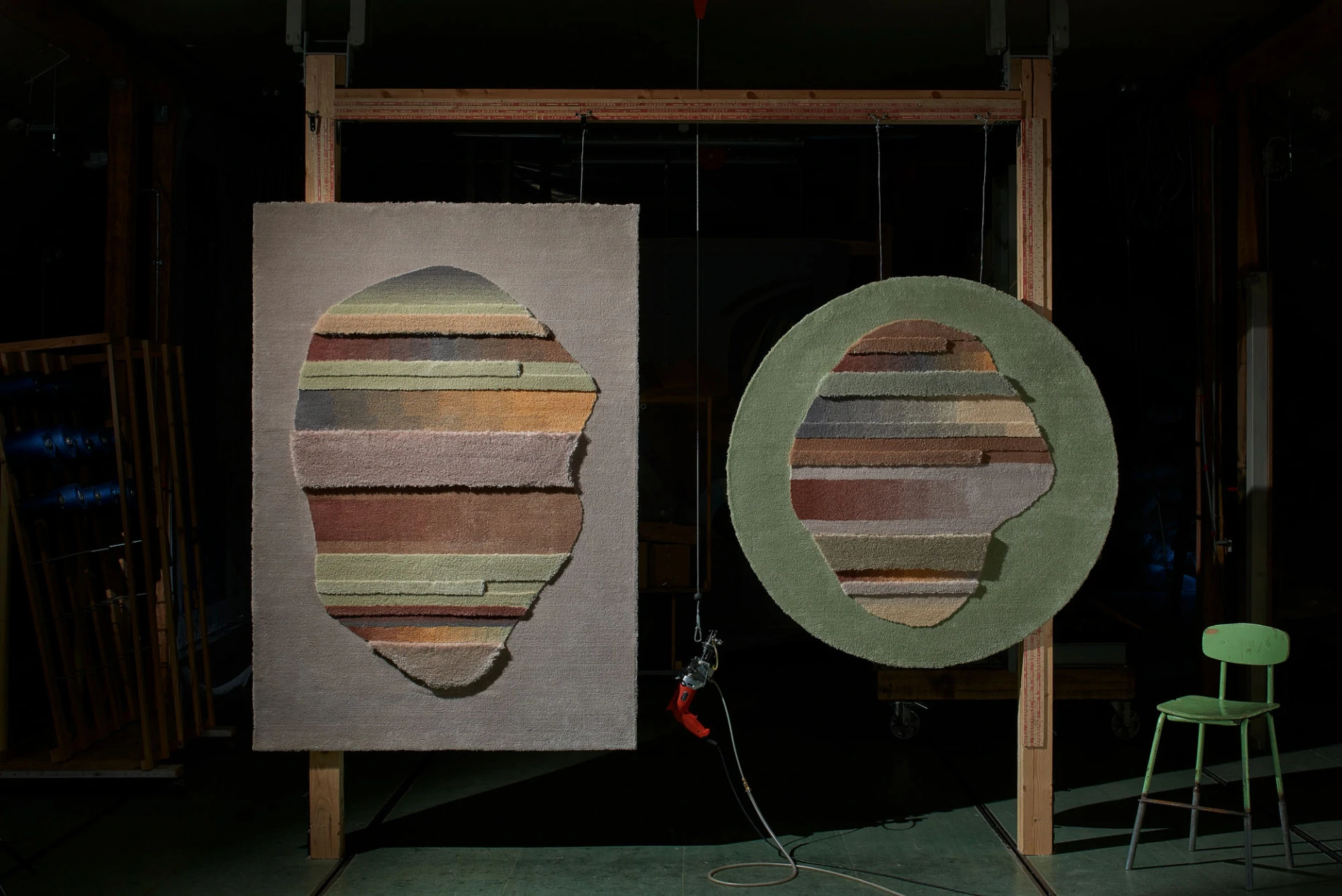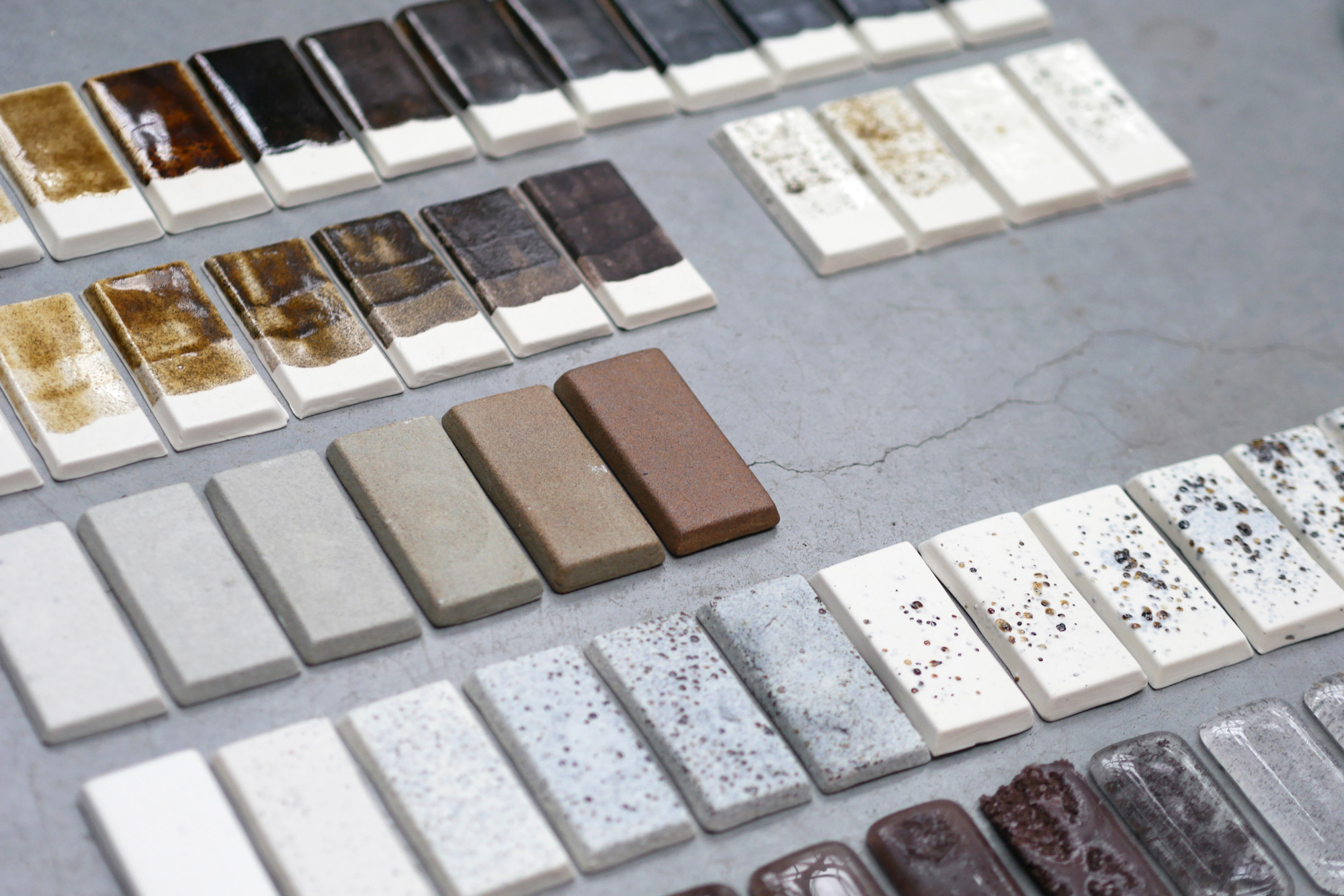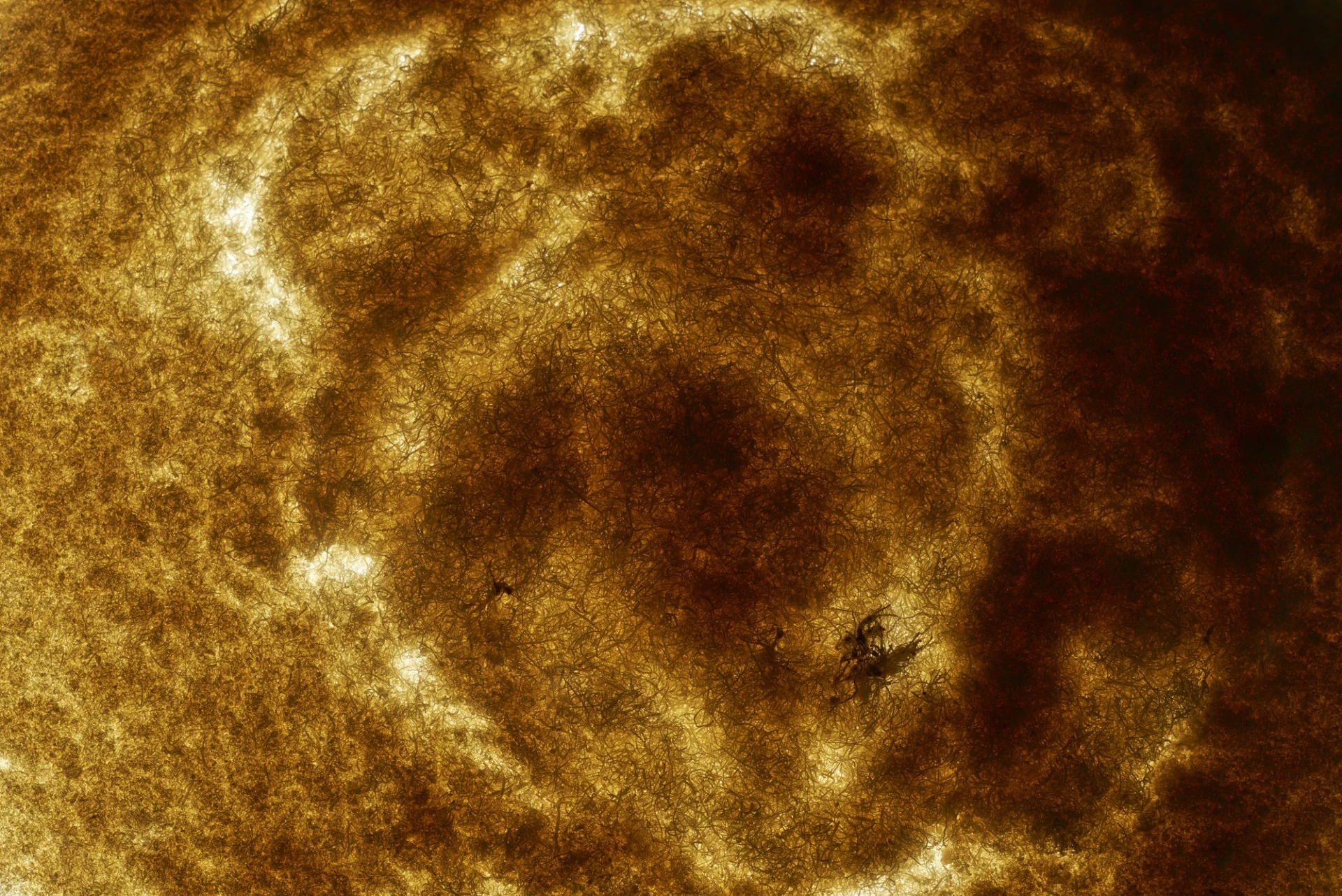Make Waste Matter
Drinking water supply and soil remediation industries are the main suppliers of metal waste for Ignorance is Bliss projects.
'AquaMinerals', based in the Netherlands, searches and identifies applications for the material streams that are generated by water treatment processes. 'AquaMinerals' conducts research and development and seeks out sustainable solutions. 'Vilniaus vandenys' is the largest water supply company in Lithuania that operates in Vilnius and its suburbs. The company provides water supply and wastewater collection and treatment services for about 265.000 consumers. 'Aquaminerals' and 'Vilniaus vandenys' mainly contribute iron byproduct to Ignorance is Bliss projects. The substance is resulting from the production of drinking water from ferrous groundwater and surface water. It consists primarily of iron oxide and small amounts of other metals, minerals and organic materials. Additionally, 'AquaMinerals' provides manganese oxide waste. Manganese can be found in both groundwater and surface water from natural sources. Similar to iron, manganese removal is carried out by oxidation and filtration.
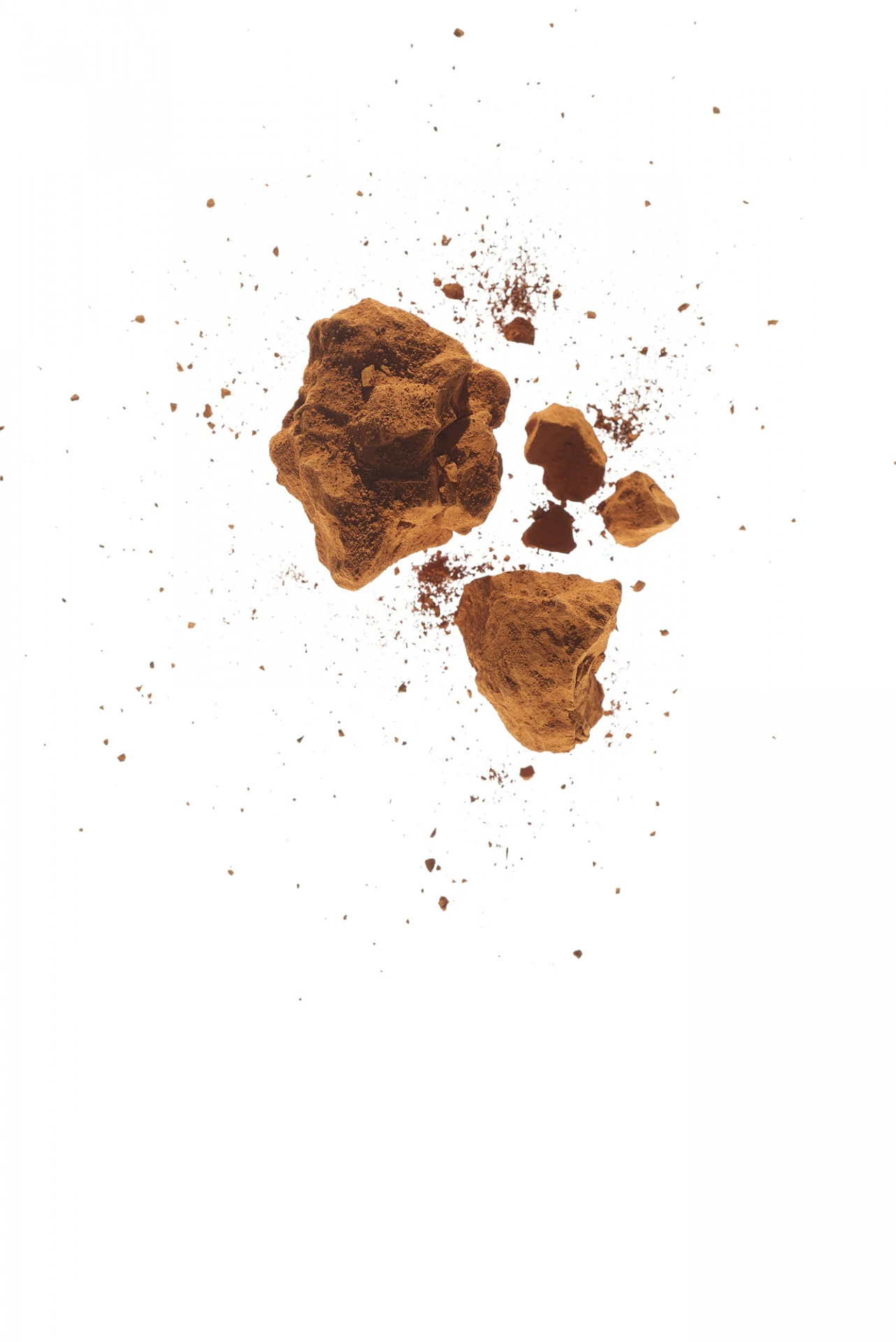
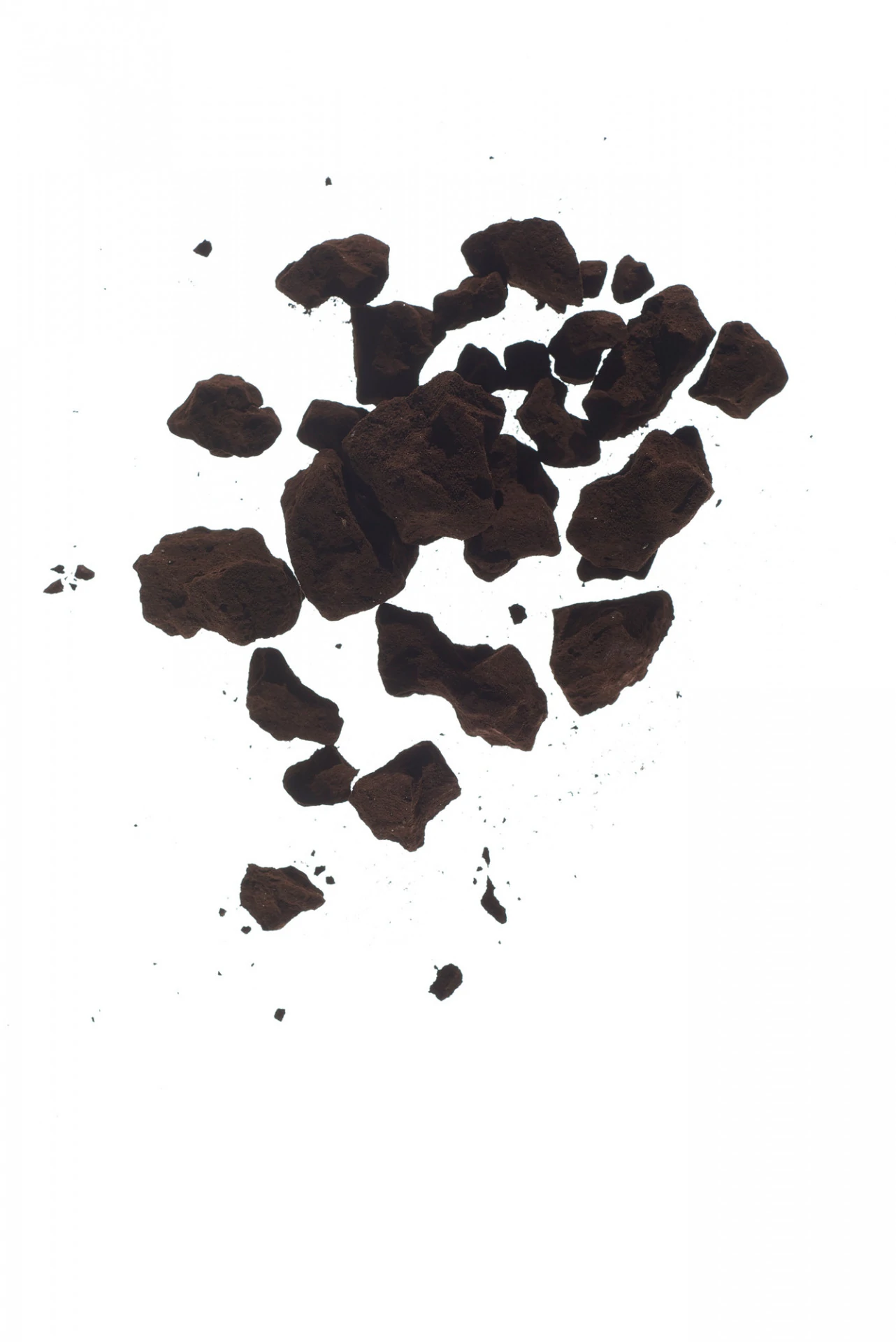
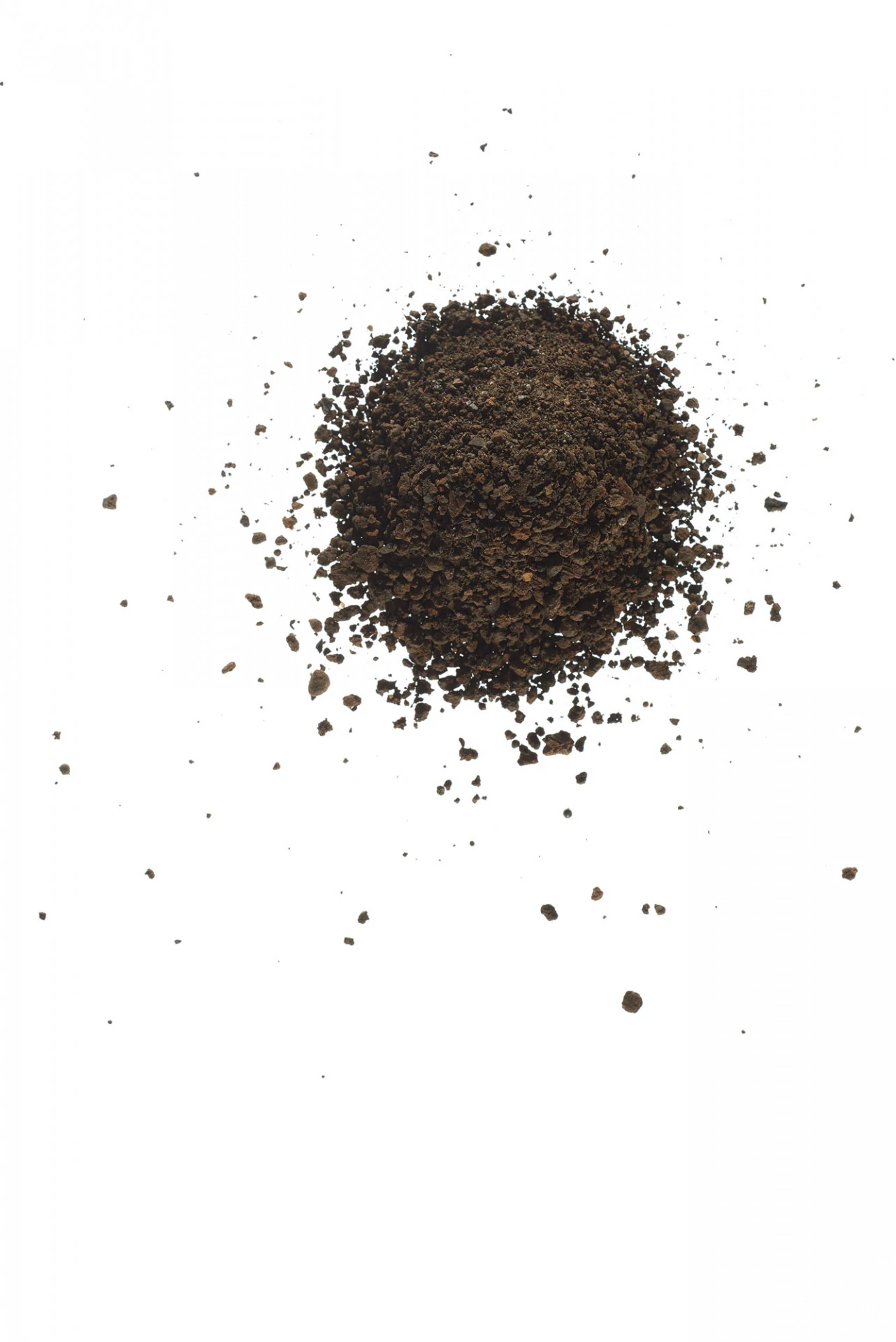
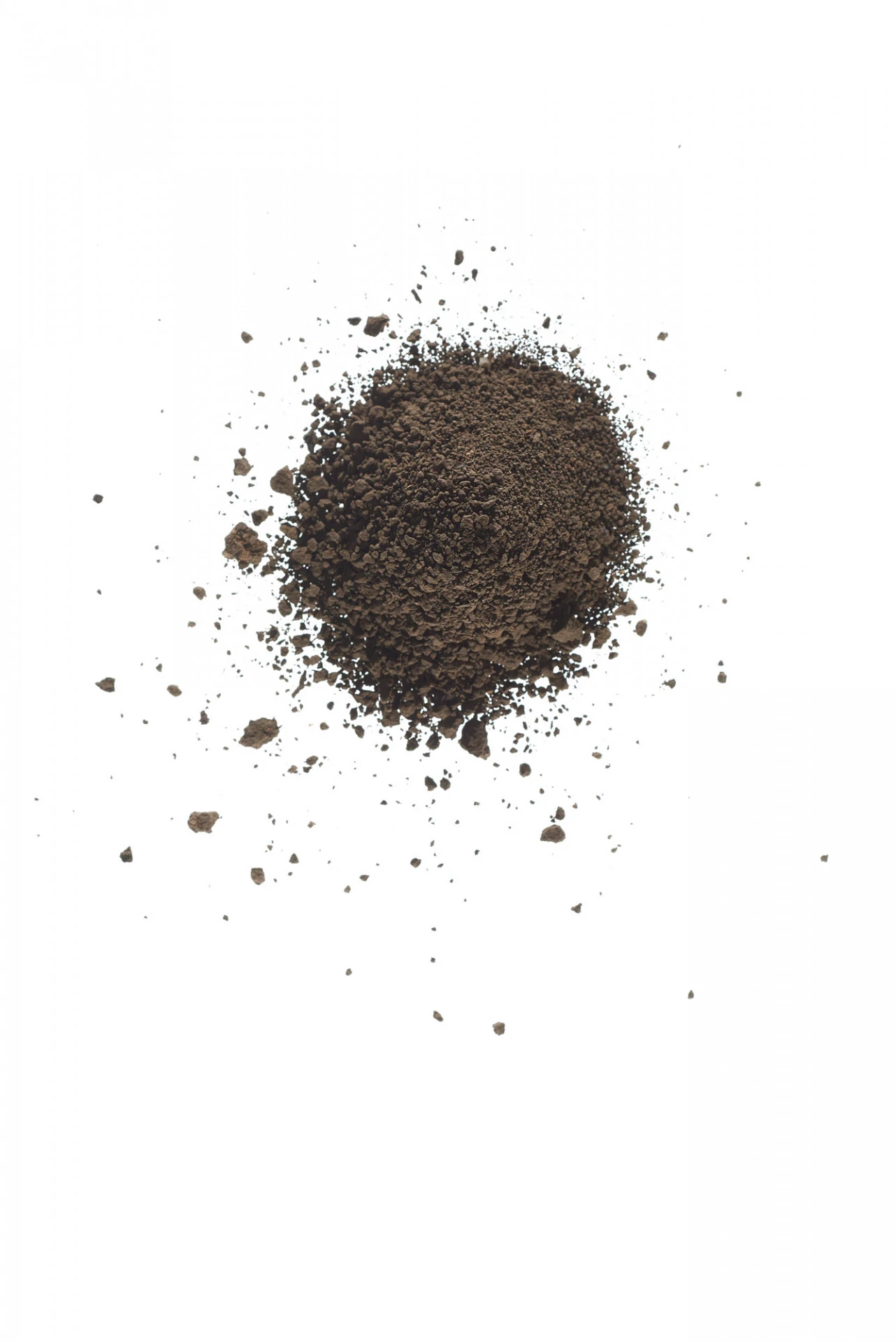
DIVERSE METAL WASTE
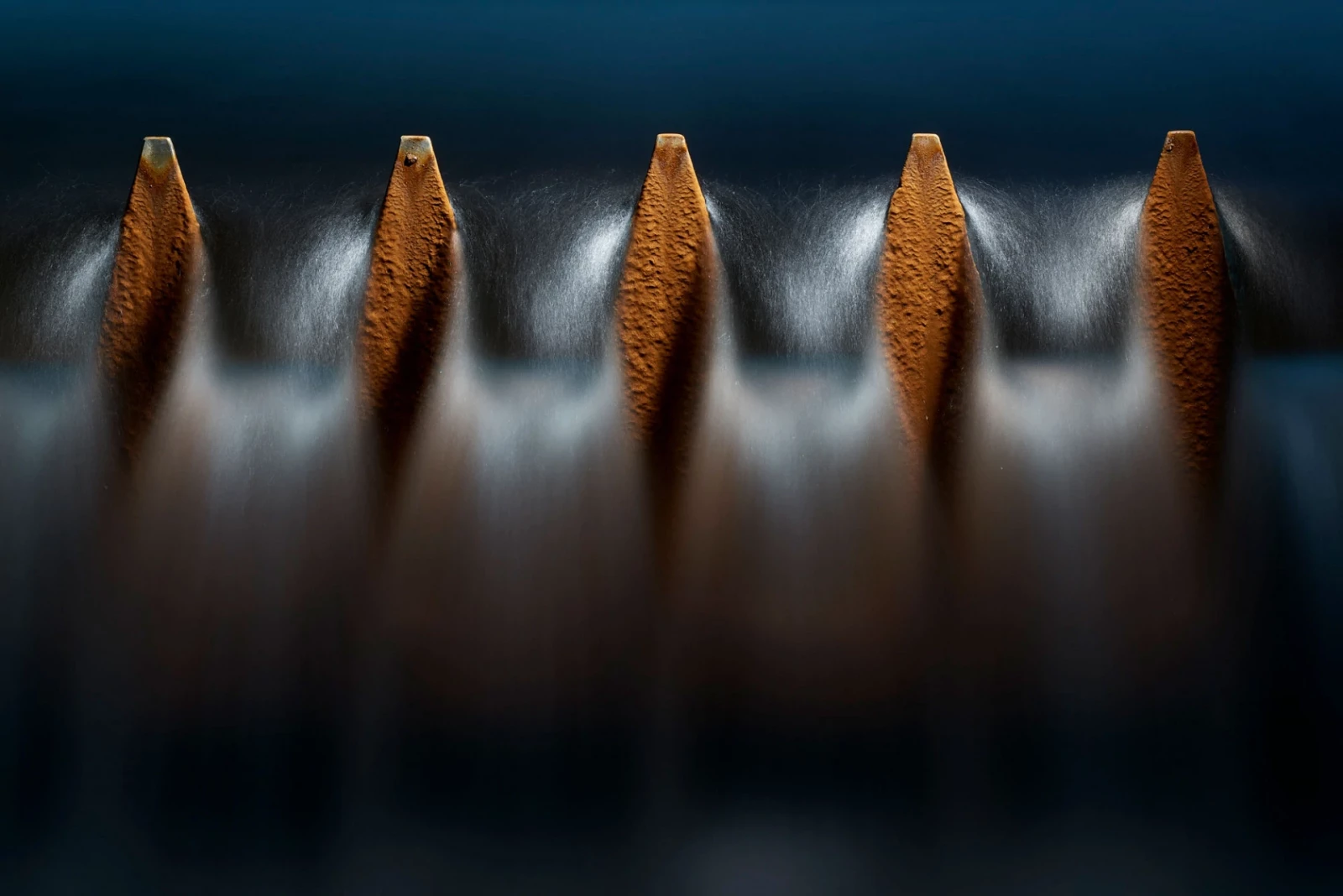
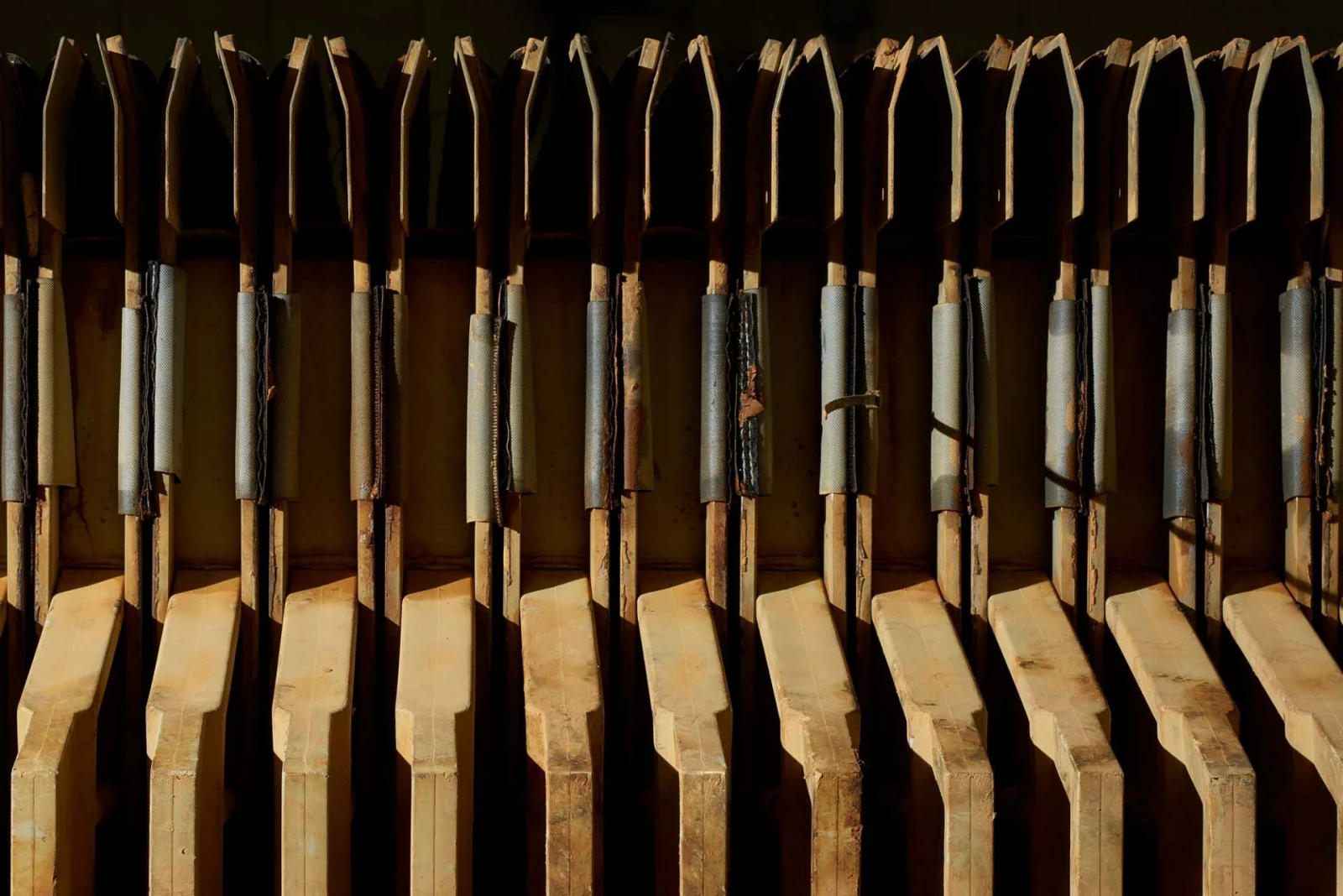
IRON REMOVAL IN DRINKING WATER BY USING AERATION PROCESS / IRON DEWATERING PRESS MACHINE
'Theo Pouw' is a soil remediation company, based in Weert, the Netherlands. It provides two types of metal waste compositions. The first one is extracted by a magnetic separator. Iron, nickel and cobalt are only three naturally occurring magnetic elements. The second one is obtained by the spiral concentrator, a device for metal and mineral separation mainly on the basis of density or shape. Both of the remaining residuals are mixtures of various metals, mostly iron.
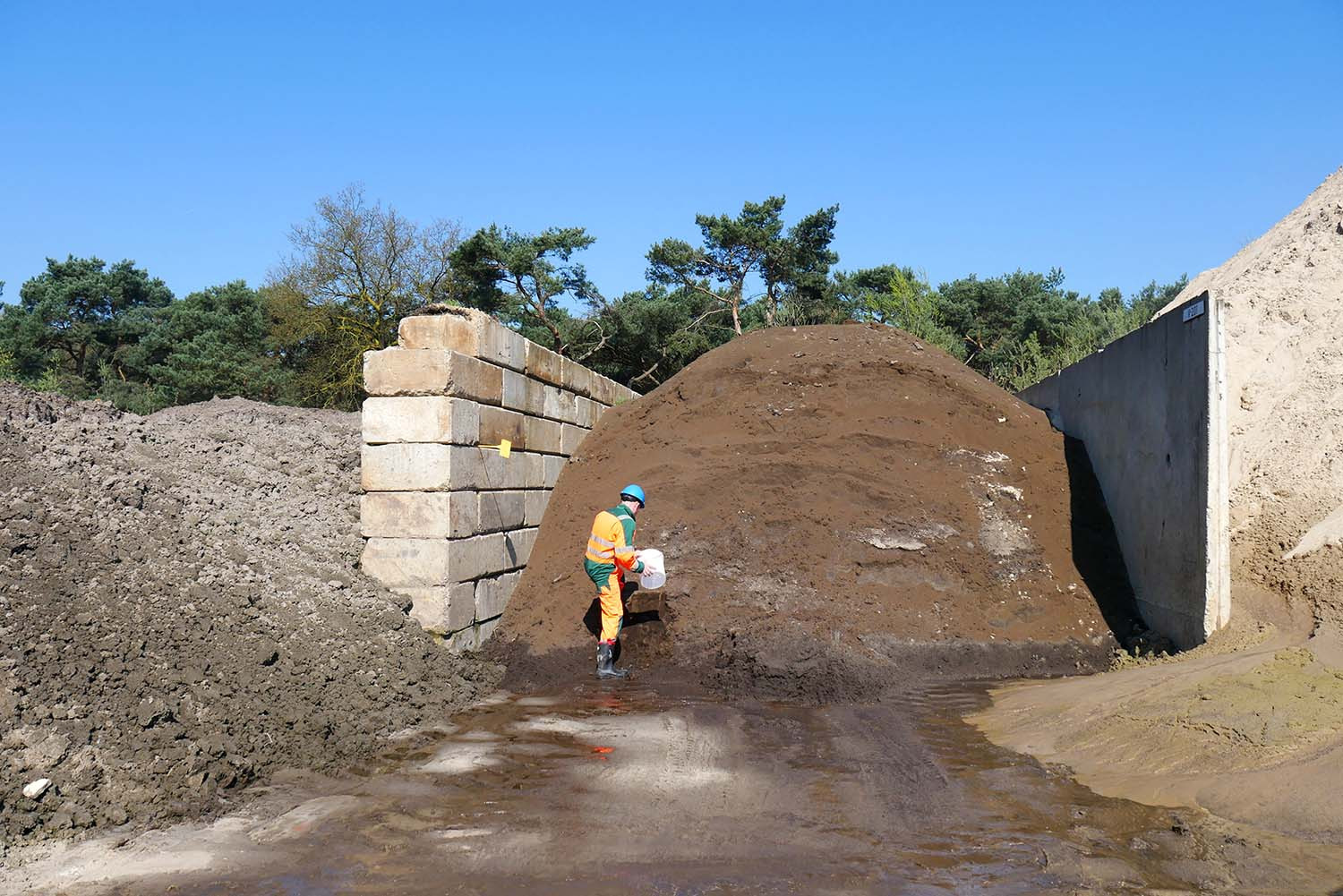
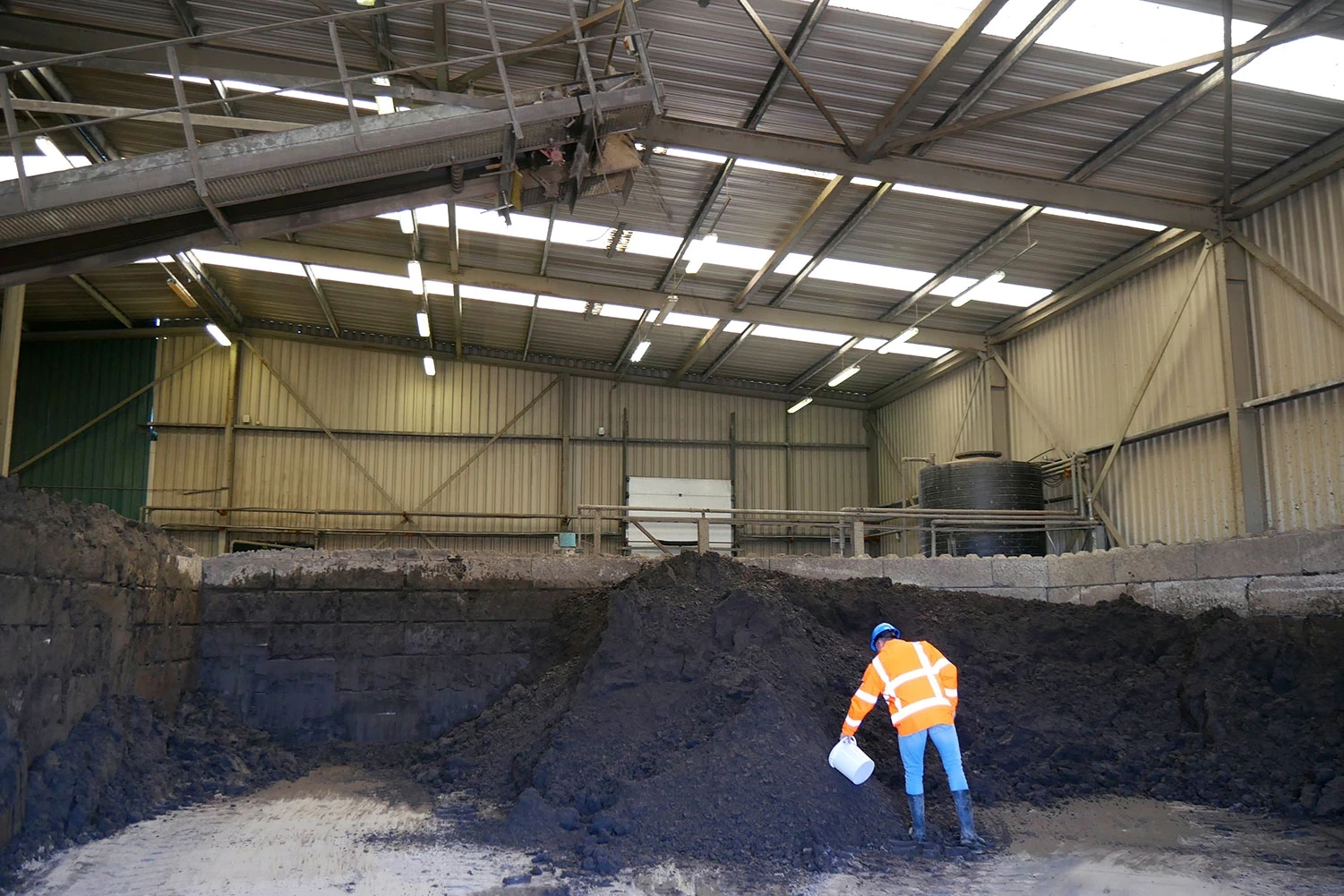
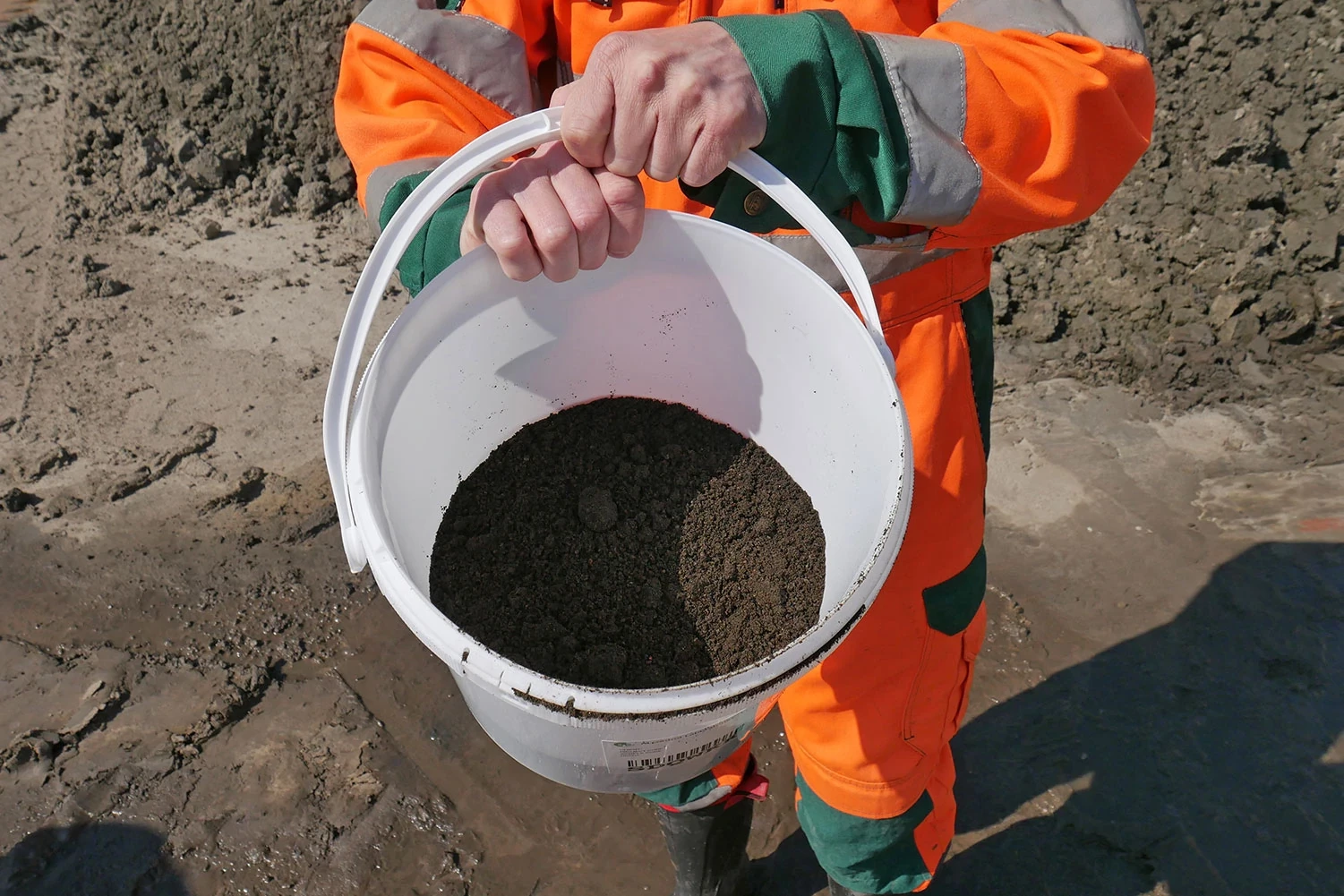
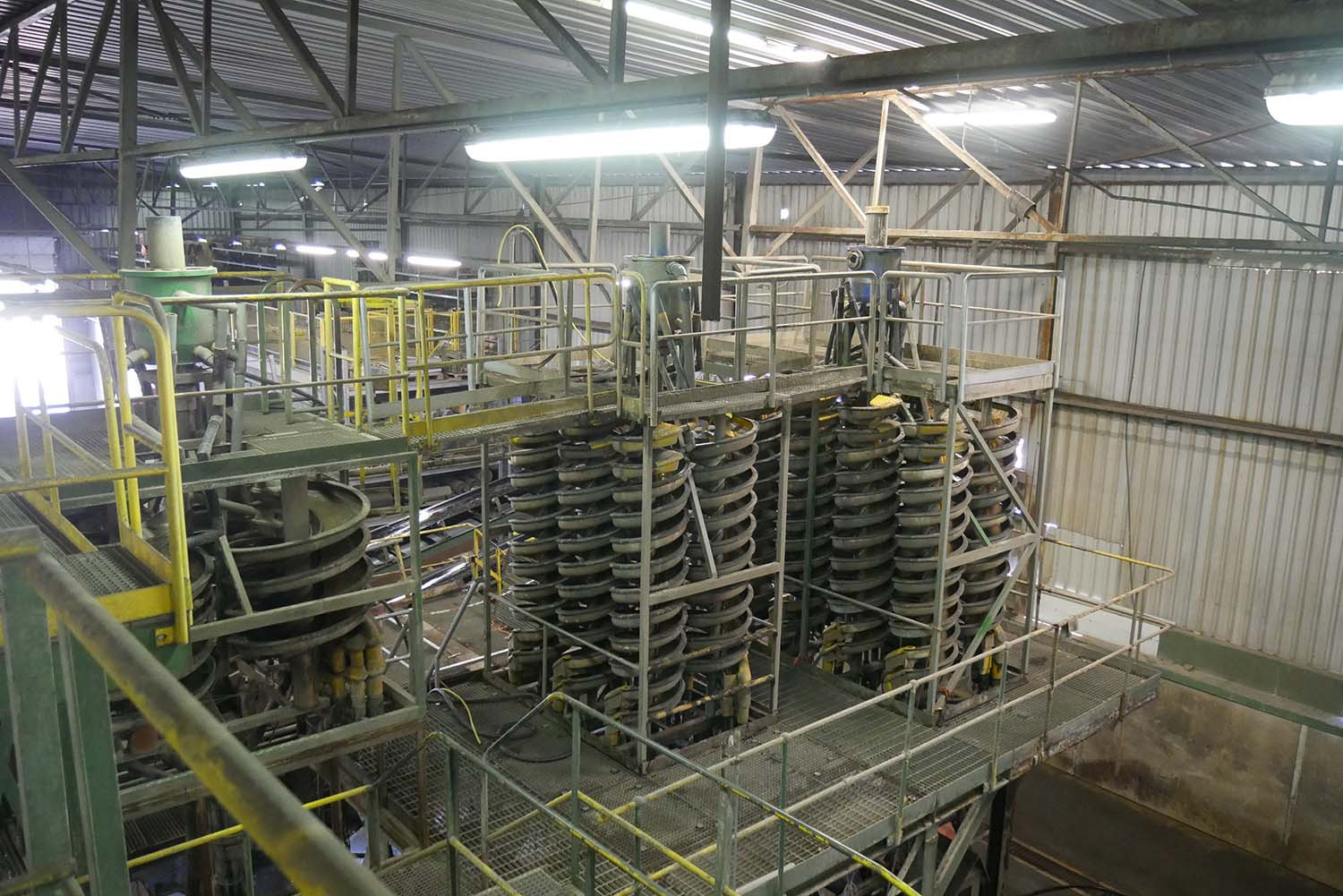
SOIL REMEDIATION PLANT
Iron (Fe) is a chemical element and a metal. By mass, it is the fourth most abundant element making up the Earth's surface and the second (to aluminum) most common metal. It makes up 5% of the Earth's crust and constitutes a large part of the planet’s core. Iron normally does not occur as a free element in the earth as it oxidises or rusts when it comes into contact with oxygen and water.
The only pure iron known to exist naturally comes from the deposition of meteorites. Iron is found in abundance in the universe because it is the endpoint of nuclear reactions in large stars. It is the last element to be produced before a supernova collapses and distributes iron into space. The surface of Mars is red due to a large amount of iron oxide on its surface. Mars contains 5-14% iron oxide in its crust, which is more than twice as much as Earth.
In a study published in 2013 in the Journal of Archeological Science, researchers examined ancient Egyptian iron beads that date to around 3200 B.C. and found that they were of meteoric origin. The period in human history beginning in about 1200 B.C. is called the Iron Age. Bronze was replaced by a more durable iron, to produce tools and weapons that gave economic and political power. In the 19th century, steel was invented by adding a bit more carbon to the iron during the production process. It became an important building block of the Industrial Revolution.
Iron is an essential element for all forms of life and is non-toxic. Males of average height have about 4 grams of iron in their body, females about 3,5 grams. Two-thirds of iron is located in the blood, which looks red because of the way in which the chemical-bonds between the iron and oxygen reflect light. Humans need 10–18 milligrams of iron each day to keep a healthy balance and in plants, it plays a pivotal role in chlorophyll production.
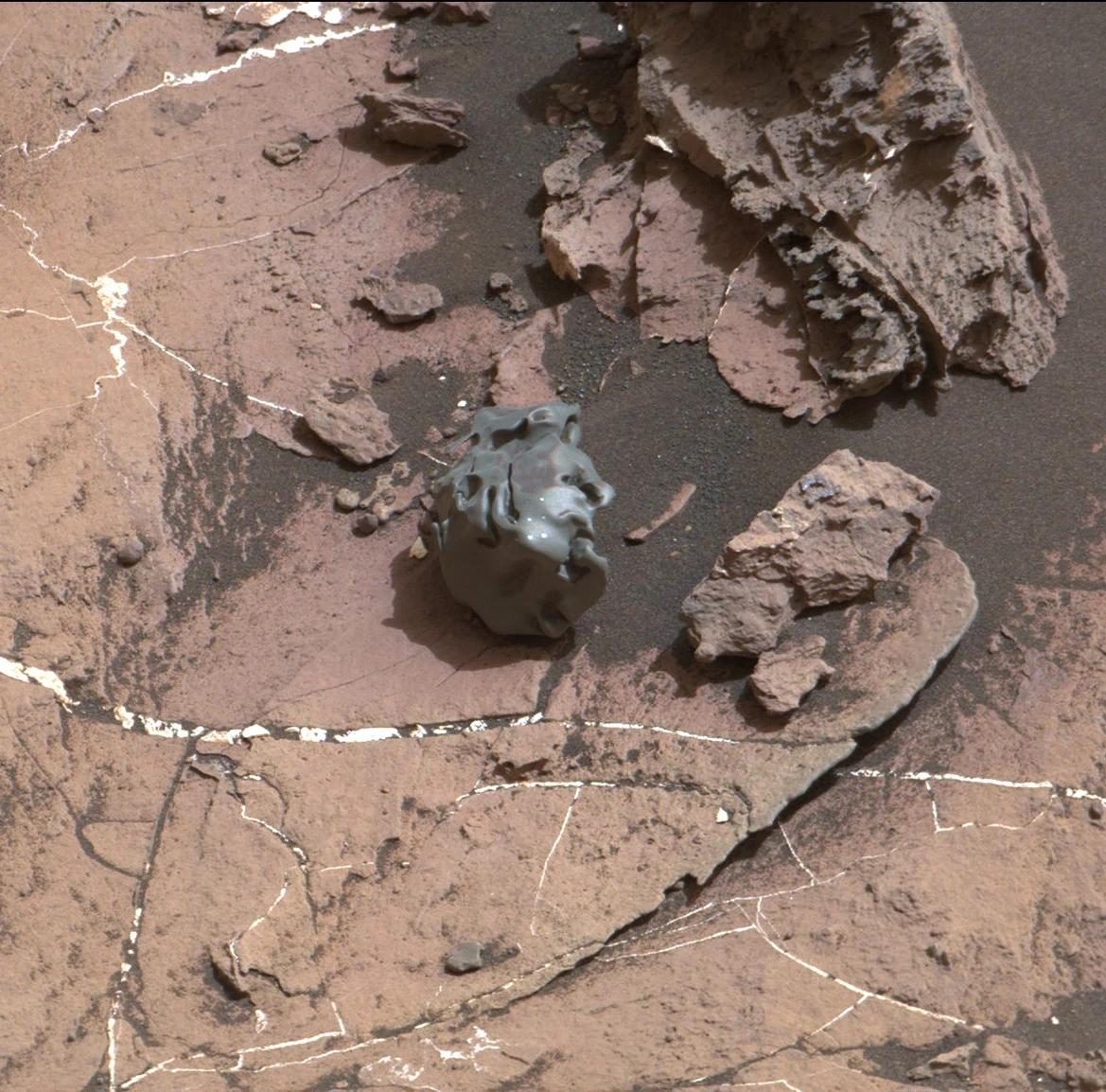

IRON-NICKEL METEORITE CAPTURED BY NASA CURIOSITY MARS ROVER
Manganese (Mn) is a chemical element and a metal resembling iron in its physical and chemical properties but is harder and more brittle. It is not found as a free element and naturally appears in a variety of minerals in combination with iron. Manganese is very abundant in soils, where it occurs as oxides and hydroxides, and it cycles through its various oxidation states.
Predominantly manganese originates from small, dense stars known as white dwarfs in the universe. An explosion of such stars creates lots of iron and manganese. It is the source for most of the manganese present on Earth. According to Nasa, high levels of manganese oxides are observed on Mars that could indicate that Earth-like levels of atmospheric oxygen once existed there.
Manganese has been used since ancient times as a pigment. Cave artists of the Lascaux region of France used manganese dioxide (pyrolusite) around 30.000 years ago. Ancient Egyptians and Romans used it in glassmaking and pottery. Small additions decolorized glass by removing the greenish-yellow tint caused by iron impurities, whereas larger additions coloured the glass pink, purple, or black. This is also apparent in the Middle ages and glass from Venice in the 14th century.
Manganese is one out of three toxic essential trace elements that are critical for humans and animals in metabolic functions, but toxic when too high concentrations are present. Human bodies contain approximately 10-20 milligrams, mostly in the bones. It can't be stored, therefore needs to be constantly replenished through the diet. Manganese is also essential to plant growth and photosynthesis to generate oxygen.
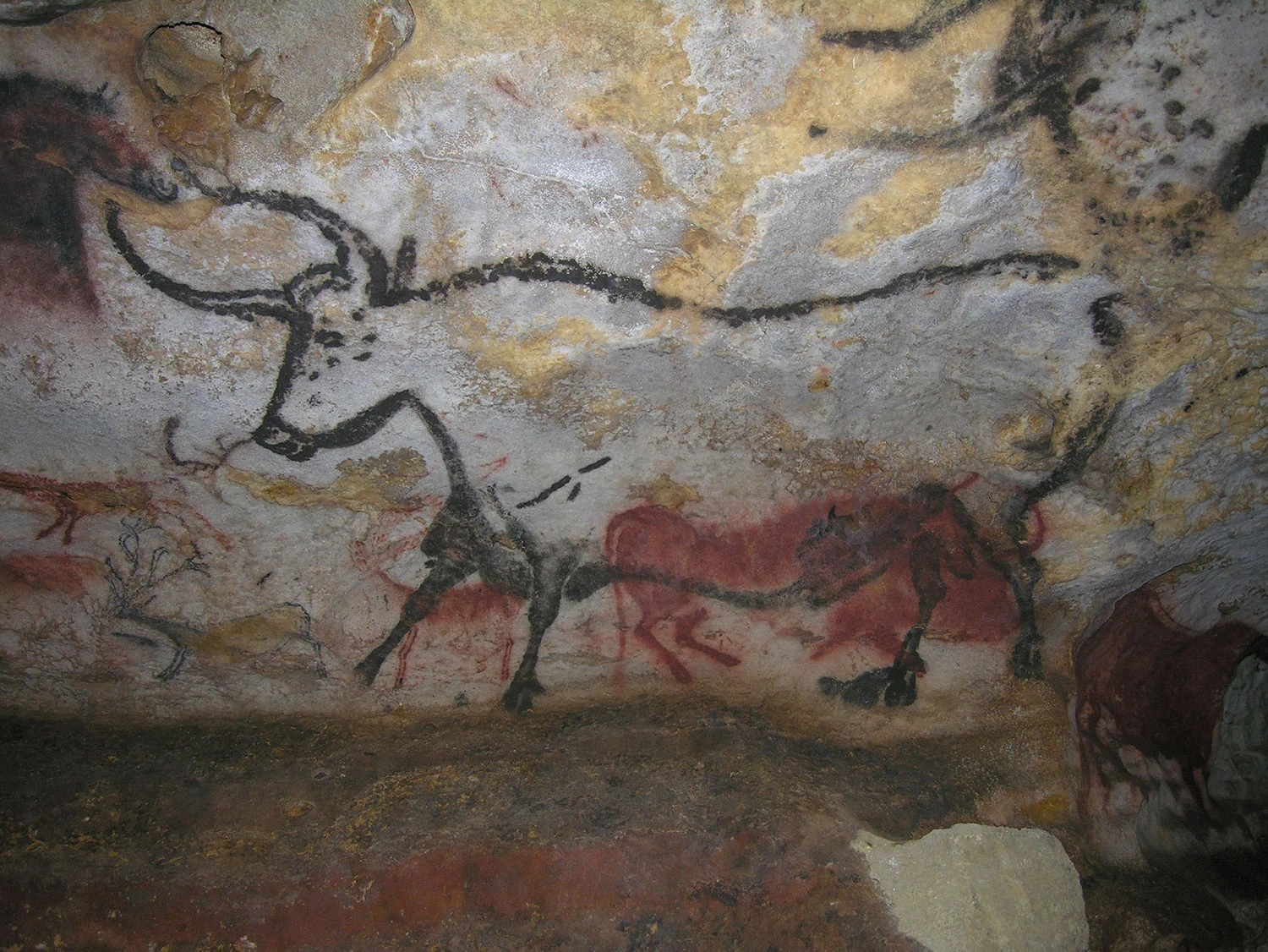
MANGANESE OXIDE USED IN LASCAUX CAVE PAINTINGS
Iron is mostly obtained from minerals hematite and magnetite, which consist of about 70% iron. Around 90% of all metal that is refined today is iron. It is easily found, strong and cheap. Using a combination of both deep mining and opencast mining, the world produces approximately 1000 million tonnes of iron ore each year. The metal is extracted by smelting with carbon (coke) and limestone (calcium carbonate) in large containers called blast furnaces. This process removes impurities in the iron ore. The main mining areas are Australia, Brazil and China. Most iron is used in alloys to manufacture steel, exploited in civil engineering and manufacturing of heavy machinery.
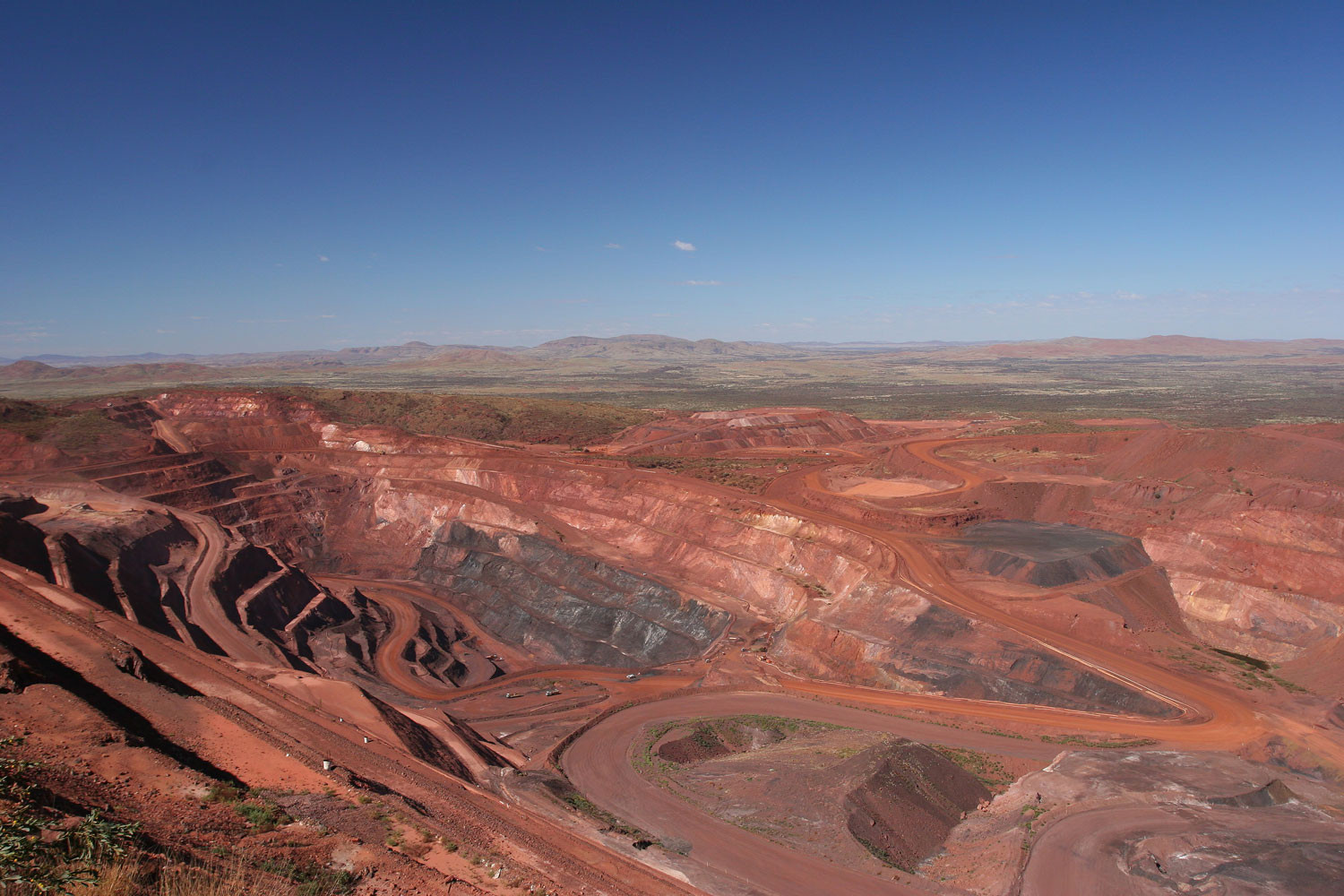

IRON ORE MINING PIT IN AUSTRALIA / AERIAL VIEW OF IRON MINING SITE
Iron industry causes permanent environmental impacts. Opencast mines degrade natural landscapes, surface and groundwater, animal and plant species and air quality within the mining area. Today, depleted mining sites are commonly used as landfills, sometimes for the disposal of highly toxic substances. The process of extracting iron from ore produces great quantities of poisonous and corrosive gases, which are recycled, however, some small amounts of toxic gases escape into the atmosphere. The by-product of iron purification is slag, limestone and iron ore impurities, generated in huge amounts. Part of it must still be disposed of in landfills.
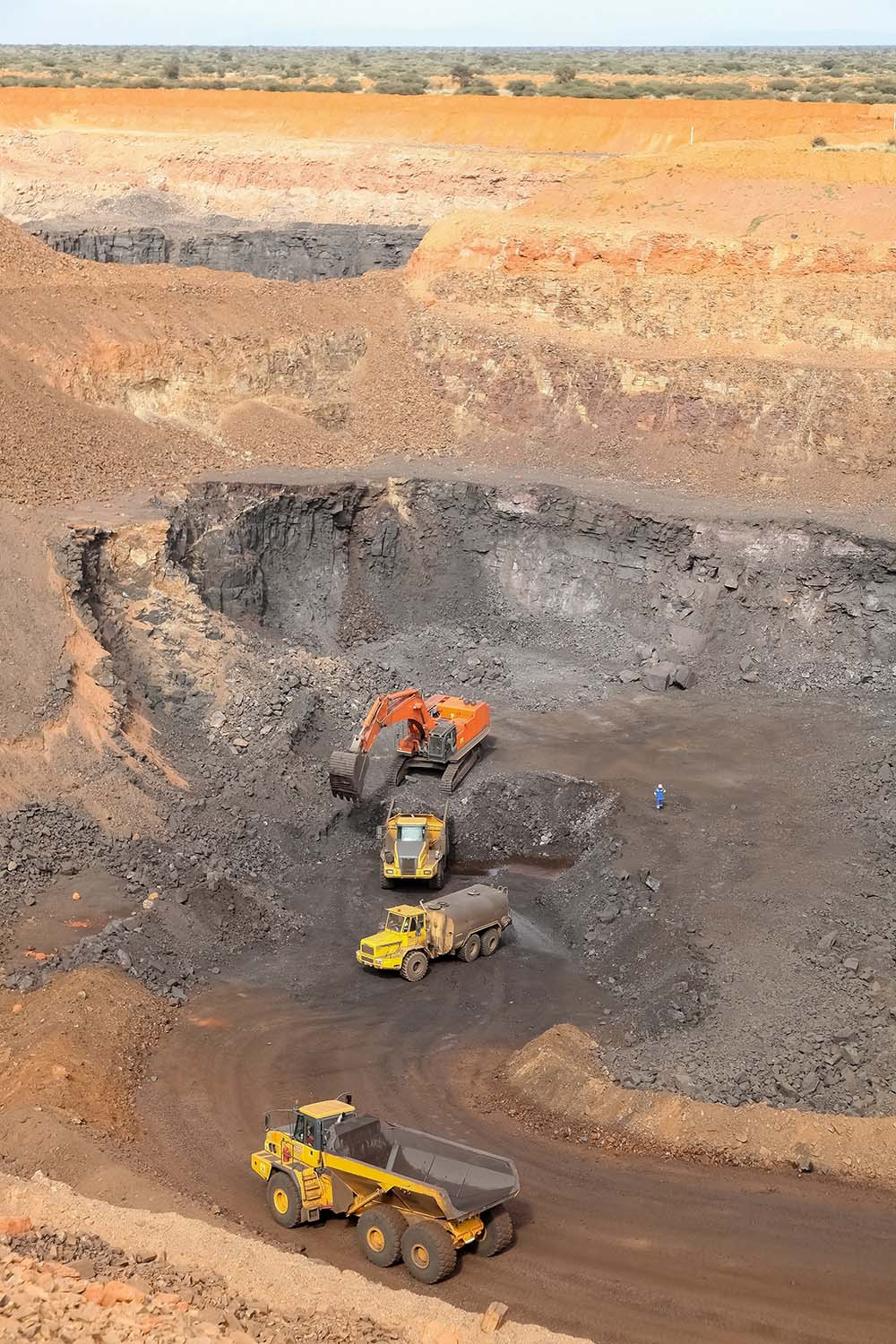
MANGANESE ORE MINING PIT IN SOUTH AFRICA
Pyrolusite (manganese dioxide) and rhodochrosite (manganese carbonate) are among the most common manganese minerals. Manganese ores usually contain 25-45% manganese. Such ores are widespread, but most of the world’s supply is from a small number of manganese mining districts. More than 25 million tonnes are mined annually, mainly in South Africa, Australia, China and Gabon. Nearly 90% of mined manganese is used in the steel industry. Manganese has no substitute in metallurgy as it is adding strength, wear and corrosion resistance. It is also used in manufacturing batteries, glass, fireworks, cleaning supplies, fertilizers, varnish, fungicides and cosmetics.
Environmental pollution by manganese is a serious problem around the mining areas. Through the precipitation, harmful particles are absorbed in the soil and can also enter surface water and groundwater. Manganese is also released into the environment through burning fossil fuels and the usage of agricultural pesticides. Although manganese is essential for all living organisms, the concentration can exceed the norms necessary for biological function.


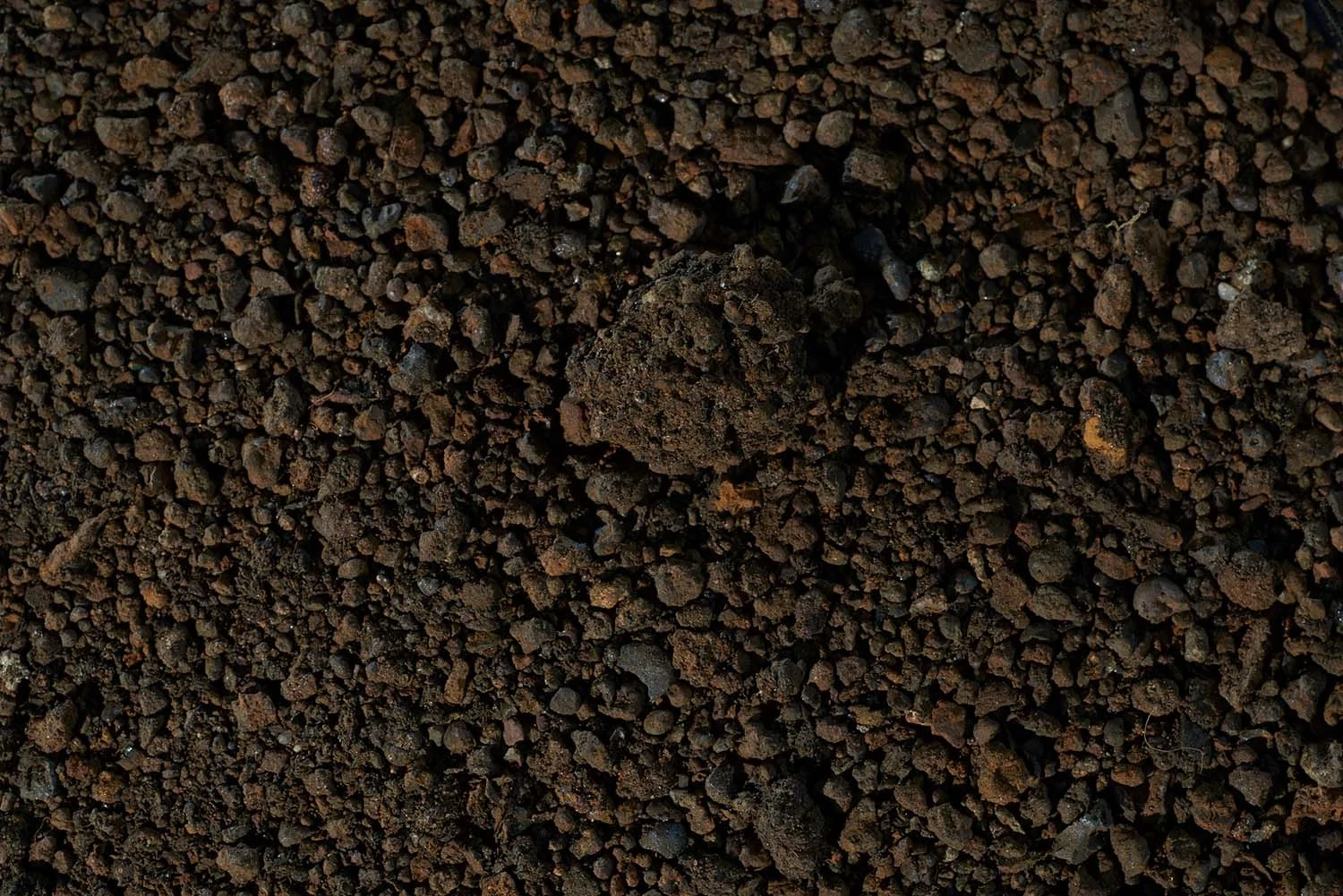
DIVERSE METAL WASTE USED IN IGNORANCE IS BLISS PROJECTS
'Theo Pouw' soil remediation company, based in the Netherlands, generates around 30.200 tonnes of various metal waste per year. Partly it is utilised as secondary building materials for infrastructure engineering works and other purposes. Although, the big part is not recycled and stored in depots or transported to dumpsters. Antaviliai water treatment plant, based in Vilnius, Lithuania (responsible to supply drinking water for half of the capital's residents), generates around 5 tonnes of iron sludge each month. Similarly, the Netherlands has around 100 water production locations that produce iron residuals of comparable amounts. 'AquaMinerals', based in the Netherlands develops circular applications for waste within the water sector. As an example, they established a way to reduce arsenic concentrations in drinking water by using pellets made from iron residue. However, such iron by-products are generated continuously and more novel solutions are needed. Iron-rich sludge from the drinking water industry is usually non-hazardous. Iron is easy to recycle as it can be separated magnetically from the waste stream.

EXPLOSION IN THE QUARRY FOR THE EXTRACTION OF IRON ORE
Recycling various metal waste and by-products helps to reduce the use of natural resources by contributing to lower levels of carbon emissions, less water pollution, less mining waste and decreasing energy consumption in order to produce more metal from virgin ore.
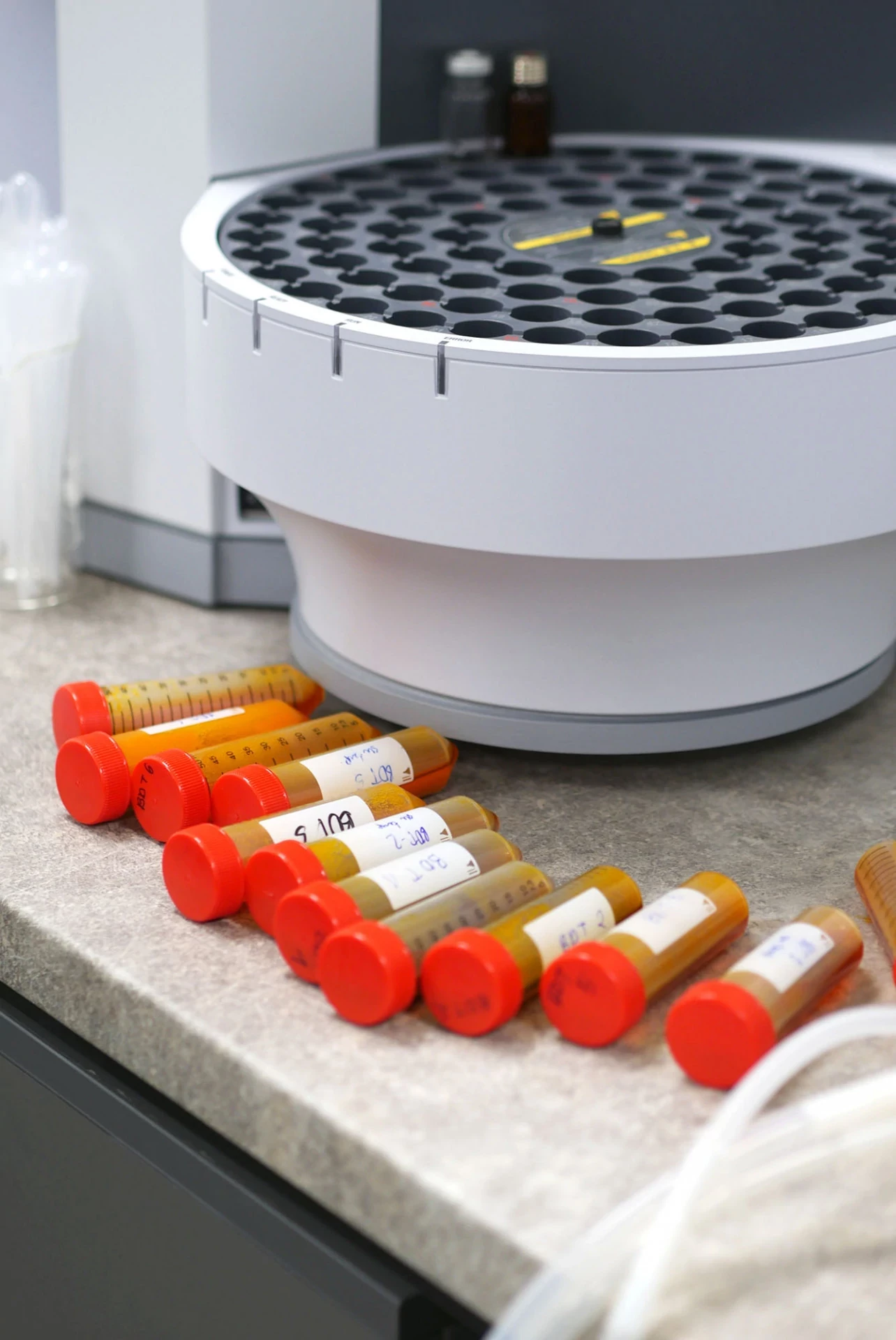
TESTING OF METAL WASTE SAMPLES AT AN ANALYTICAL LABORATORY
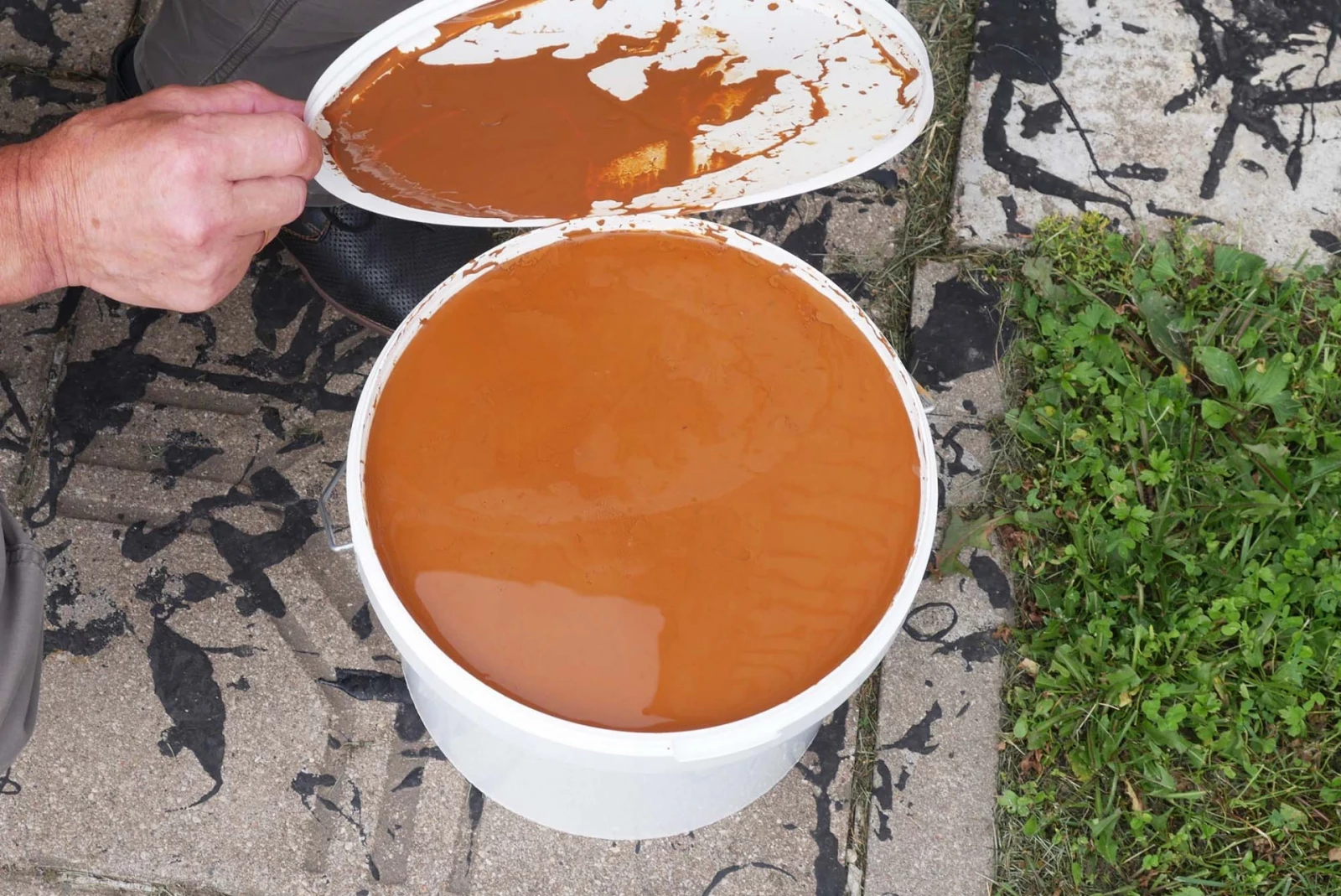
IRON WASTE SLUDGE
Agne Kucerenkaite is exploring metal waste from drinking water supply and soil remediation industries and reclaiming it as a pigment in ceramics, glass and textiles.
Metal waste is usually delivered as wet mud, similar to clay. No extraction is needed, but this sludge has to pass a process of preparation in order to be used as a pigment: drying, milling and sieving. All the metal waste samples are tested in a certified lab to assess the full data of ingredients. Drinking water supply companies provide so-called iron and manganese by-products, indicating that iron or manganese are dominating metals in the sludge. Iron is also predominant in waste from soil remediation, but there are numerous other metals and minerals present.

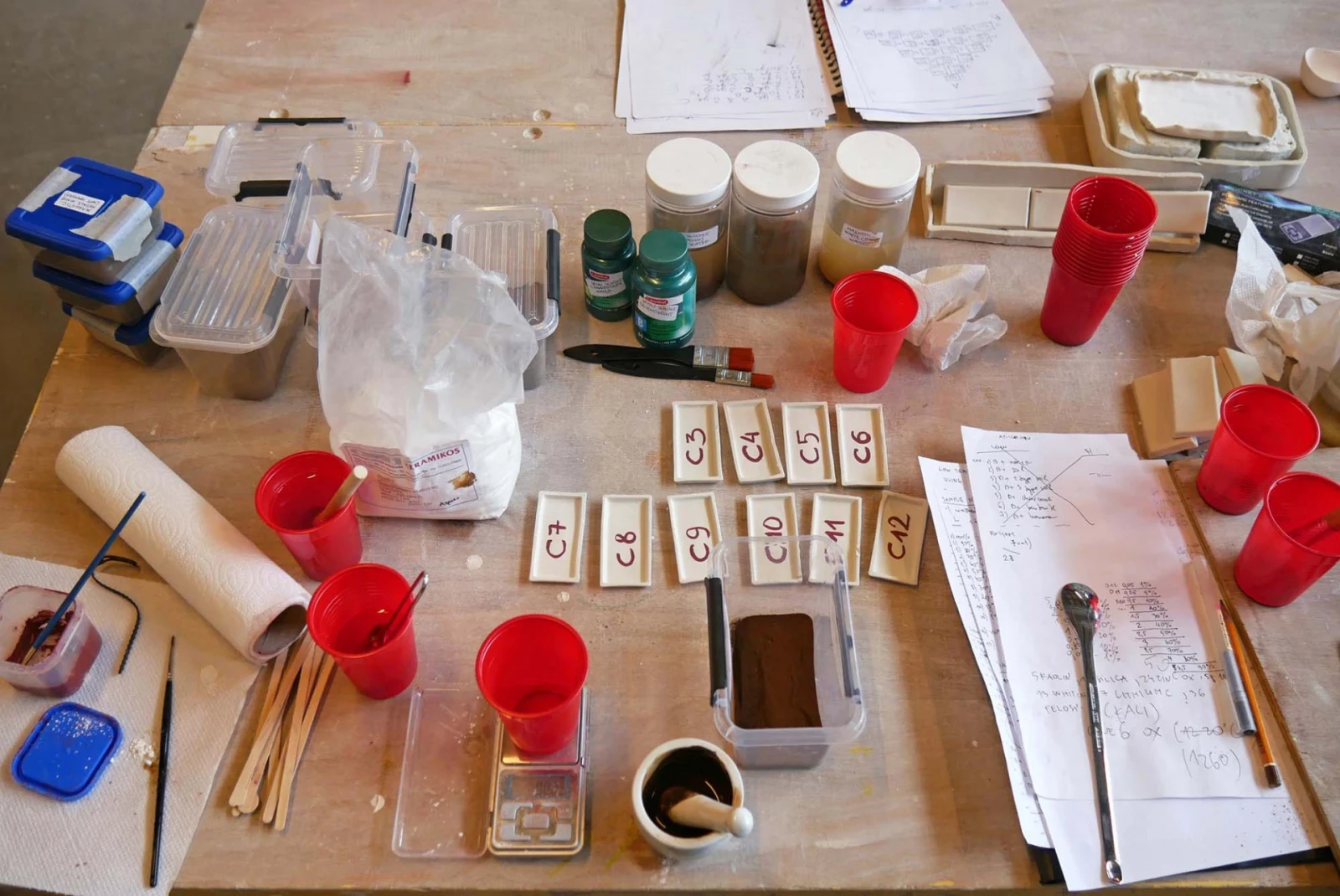
MATERIAL RESEARCH AND TESTING
Ceramic glaze is a water-resistant coating of glasslike matter which has been applied to a ceramic body and fused through firing. Ceramic glazes consist of three main components: glass formers, fluxes and refractories (stiffeners). The most common glass former is silica, generally known as industrial sand. The melting point of silica is too high and as a consequence, silica cannot be used on its own as a glaze. Fluxes play a key role in lowering the melting point of silica. Aluminum oxide is used as a stiffening agent which prevents the glaze from running off the surface. A glaze may include additives, such as colourants depending on the intended surface finish. Very early in human history, iron, manganese and other metal oxides were adopted as pigments. Ceramics and glass are coloured by adding metal oxides as they must be able to withstand high temperatures without burning off. Organic compounds decompose in relatively low temperatures while metals have a high melting point, e.g. manganese at 1246 C and iron at 1538 C. Iron pigment can produce various earthy shades of yellow, orange, brown, black and green while manganese gives purple, brown and black. In ceramics colour can be altered in various ways, such as adding other metals and minerals, choosing different firing ranges and types of firing, e.g. oxidation or reduction. There are hundreds of ceramic materials available on the market. Generally, ceramic glazes can be composed of 3 to 8 different chemical compounds. Each of the components has its own function, therefore great knowledge and experience are needed to manipulate those raw materials.
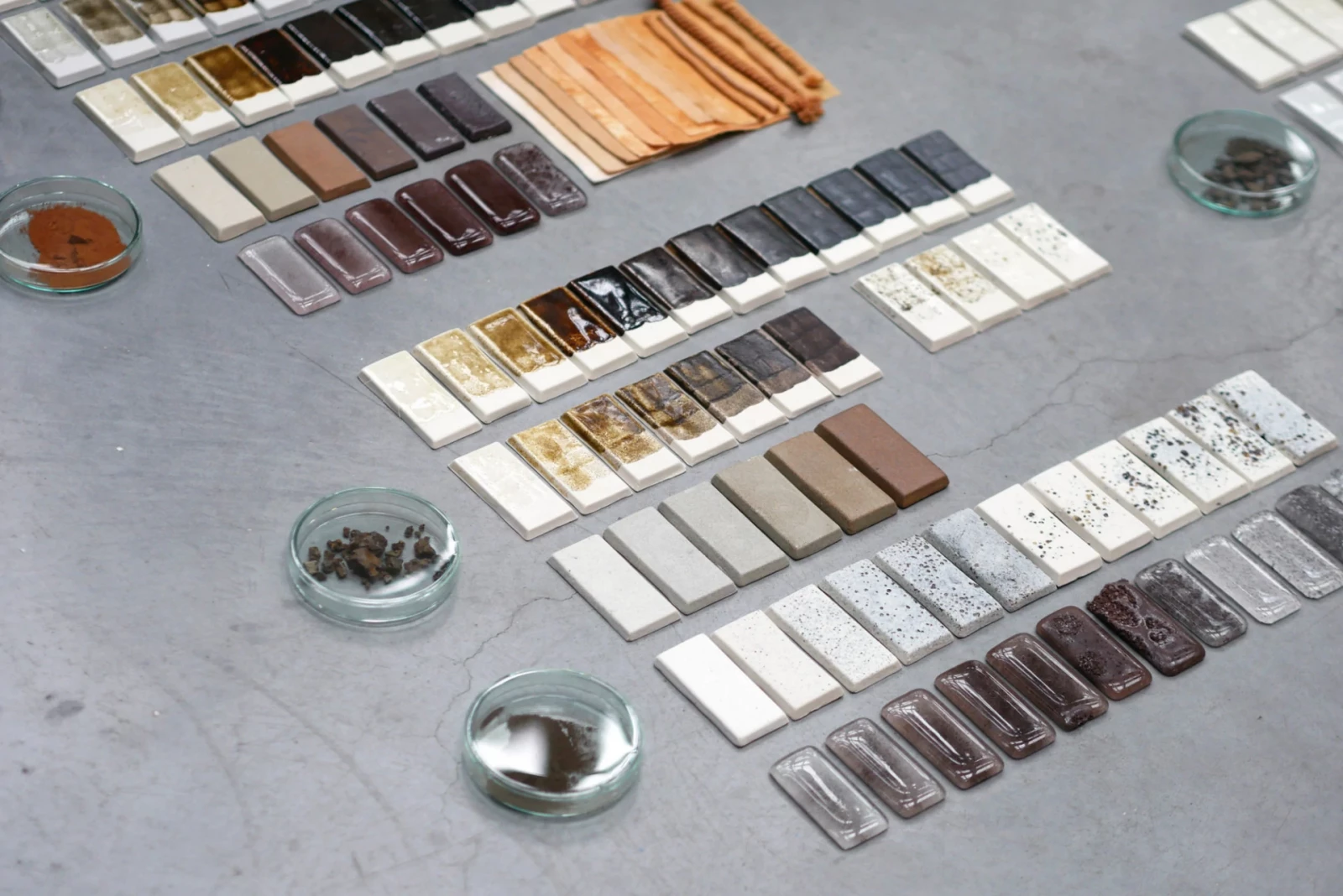
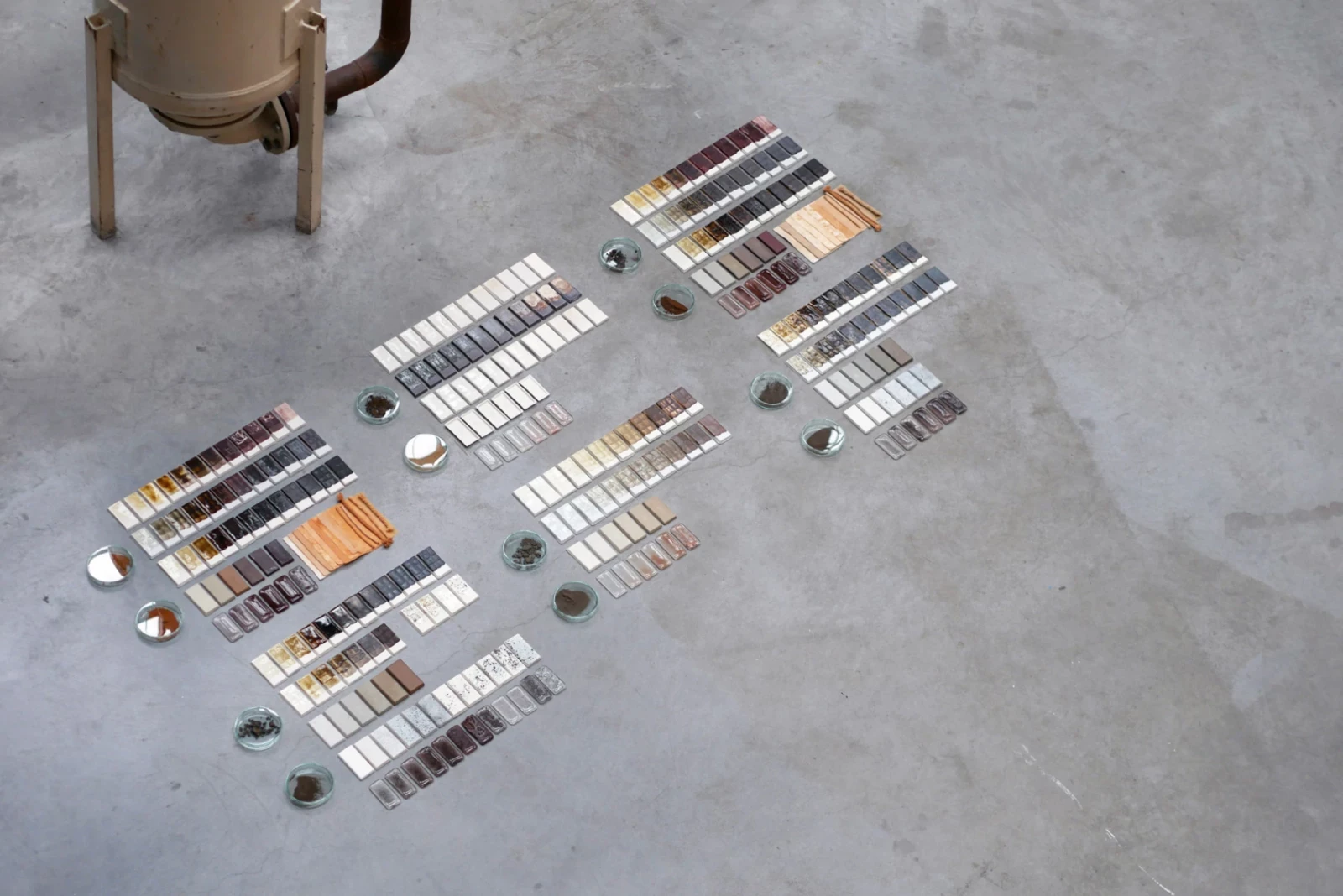
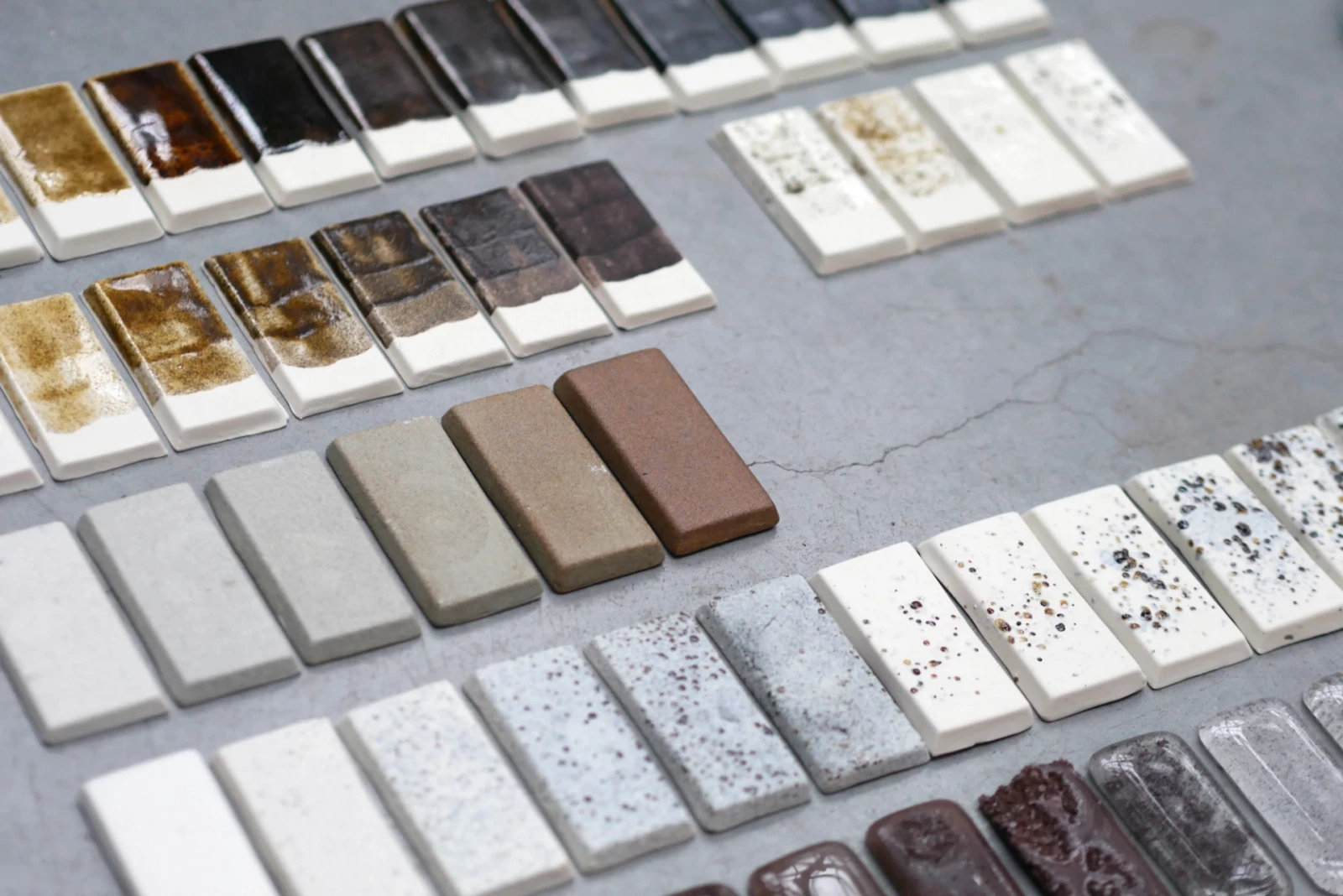
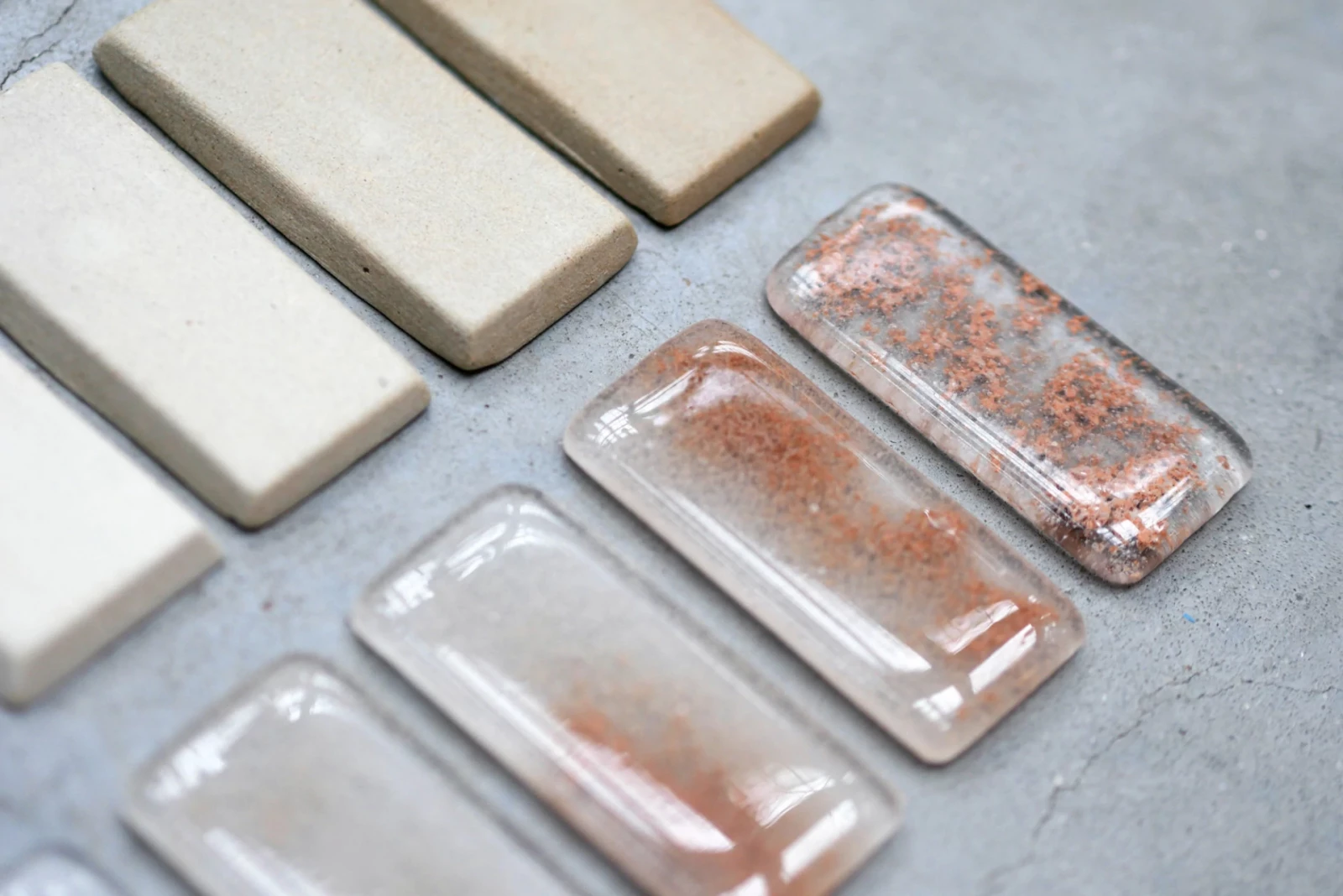
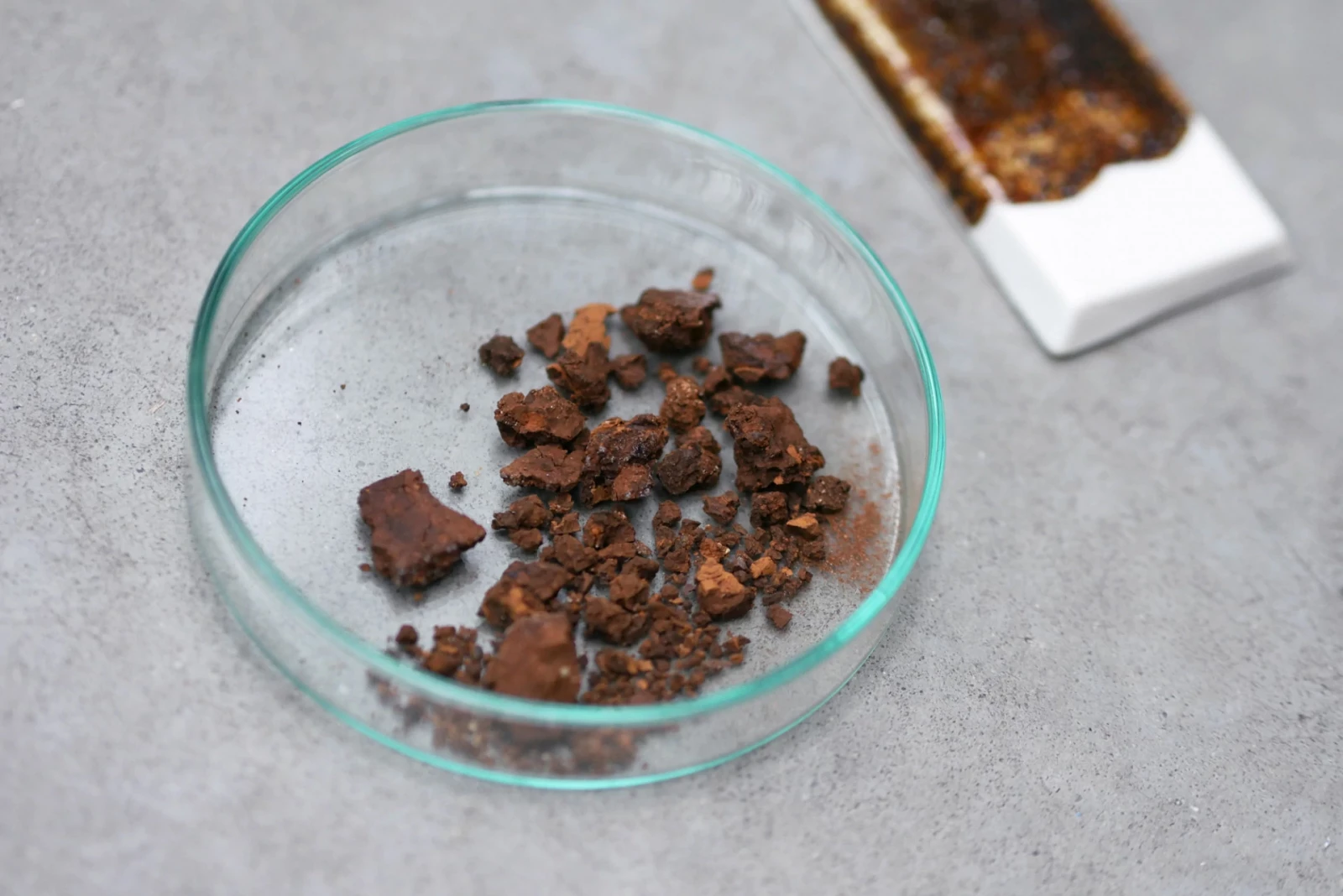
CERAMICS, GLASS AND TEXTILES SAMPLES
Agne Kucerenkaite replaced industrially made pigments with the ones derived from waste. Waste might be seen as a limitation, due to the fact that the given metals can produce a reduced range of colours. Ignorance is Bliss projects seek to take on this challenge and still achieve a significant variety of shades and colours. In addition, glazes are intentionally formulated without poisonous lead and barium, which typically are common choices for bright colours. The amount of waste for a balanced glaze is up to 40%.
Thorough research is conducted in several directions, such as adding waste pigments in clay and glaze, applying to flat and three-dimensional surfaces, using glazes on different clays (earthenware, stoneware and porcelain), firing within diverse temperature ranges, working with various firing programs and types of kilns. Each change requires different chemical formulations. Since the beginning of the project in 2016, unique know-how is collected through extensive research and experimentation. As a result, the personal ceramic samples library contains hundreds of tests.
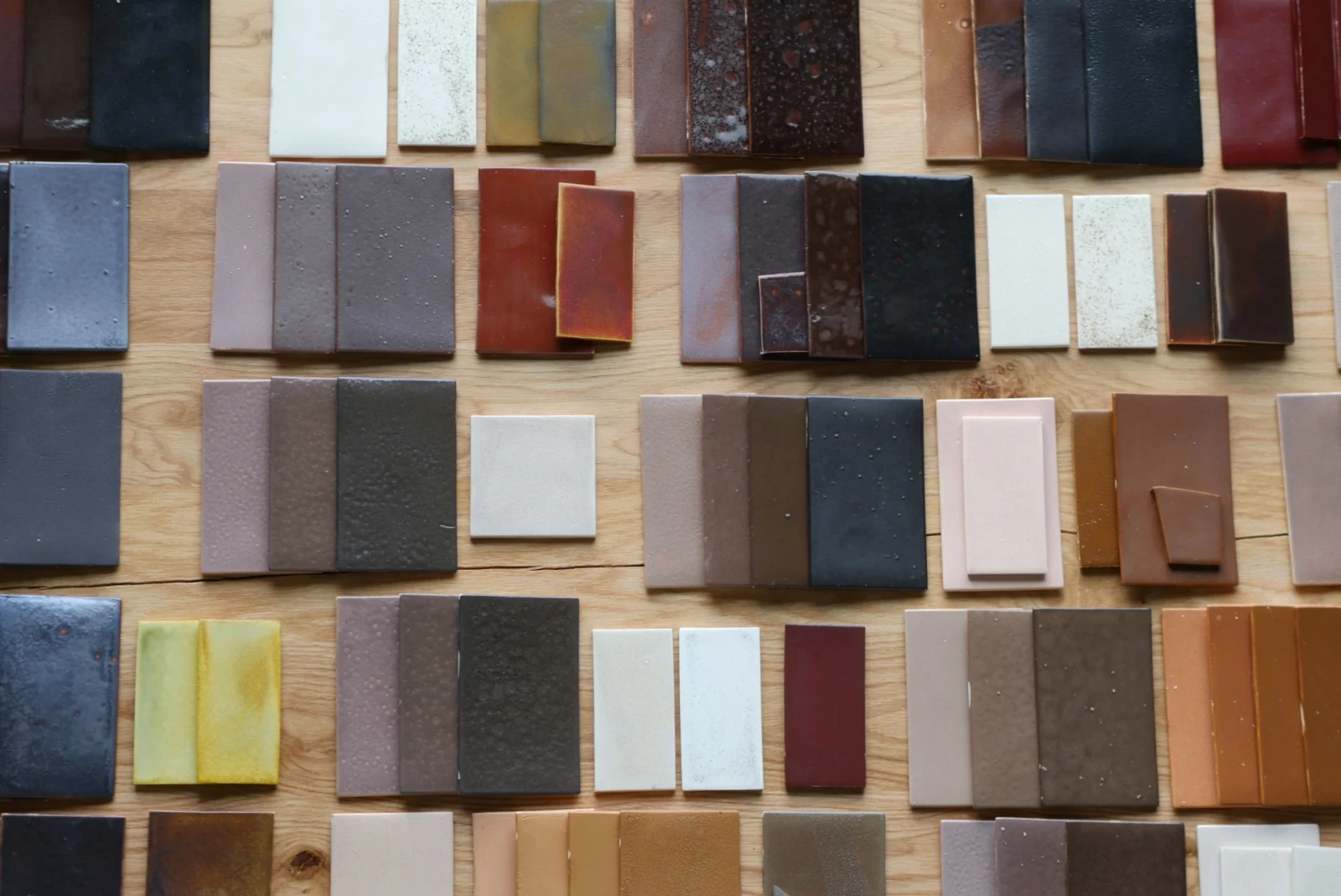
CERAMIC GLAZE RESEARCH
Agne Kucerenkaite is experimenting with glass in combination with metal waste to bring the colour. Glass fusing technique in molds is used for such application. This technique requires a quite low temperature of 900 C, therefore metal waste particles are not completely melted. The colour goes through the transformation and is trapped in the glass solid.
Glass is made by fusing sand (silica), soda ash and limestone (calcium carbonate). Similar to ceramic glaze, the temperature required to melt silica alone is too high, therefore, soda is added as a modifier. Additionally, limestone makes the glass more durable. When these ingredients are heated together, they form liquid glass. It is cooled in such a way that it doesn't form a crystalline structure. Scientifically, glass is neither solid nor liquid. It is called amorphous solid or supercooled liquid - a state between two states of matter. Glass is coloured by adding metal oxides.
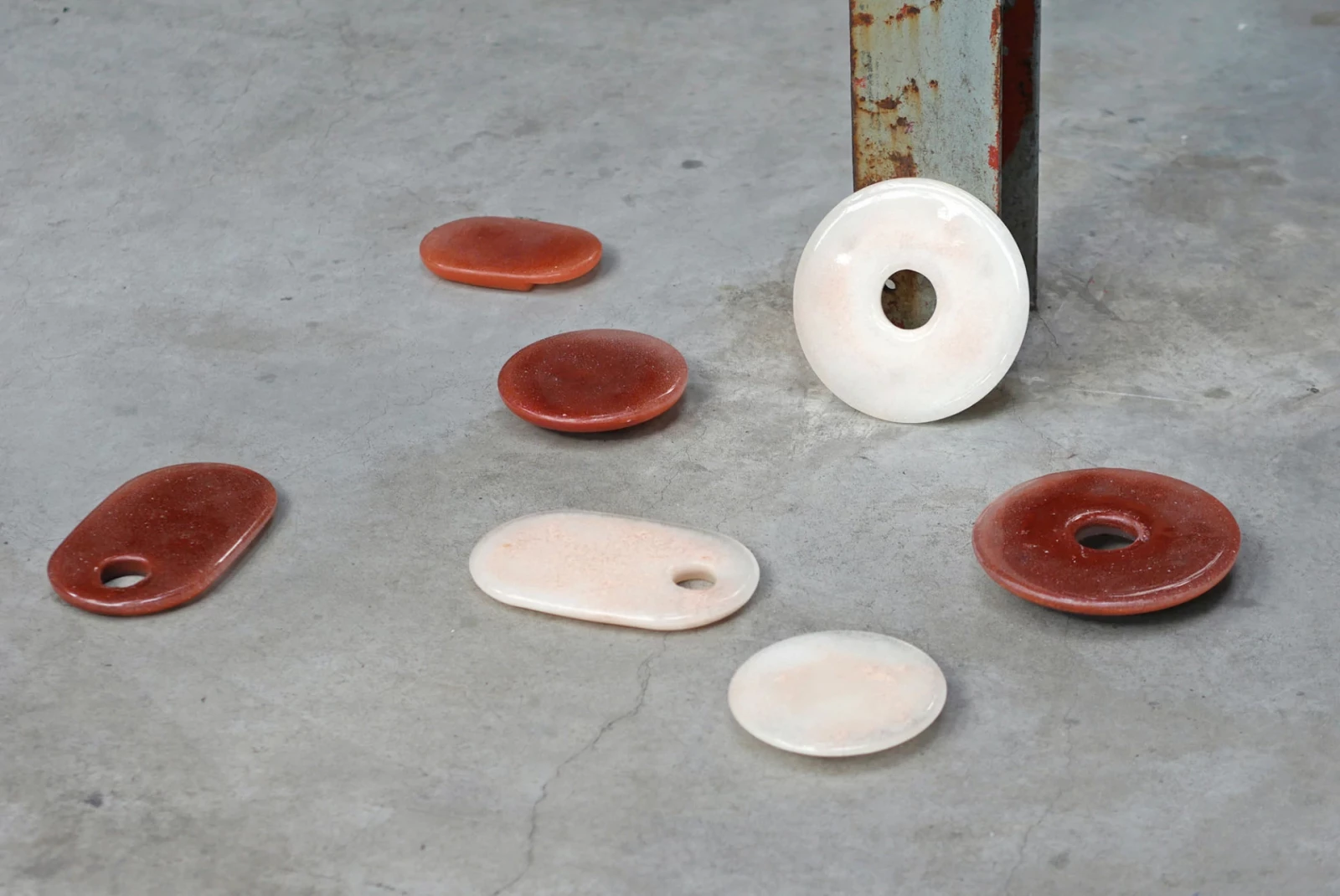
GLASS RESEARCH ON SOLID SURFACES
Iron leftover from the drinking water supply industry is not toxic and can be used as a pigment in the textile industry. Dyeing causes a lot of environmental problems due to the chemicals used in the colouring process. Iron, besides giving intense rich colours, is being used as a mordant for centuries, preventing colour to fade away. Iron can vary from orange and red to brown and black.
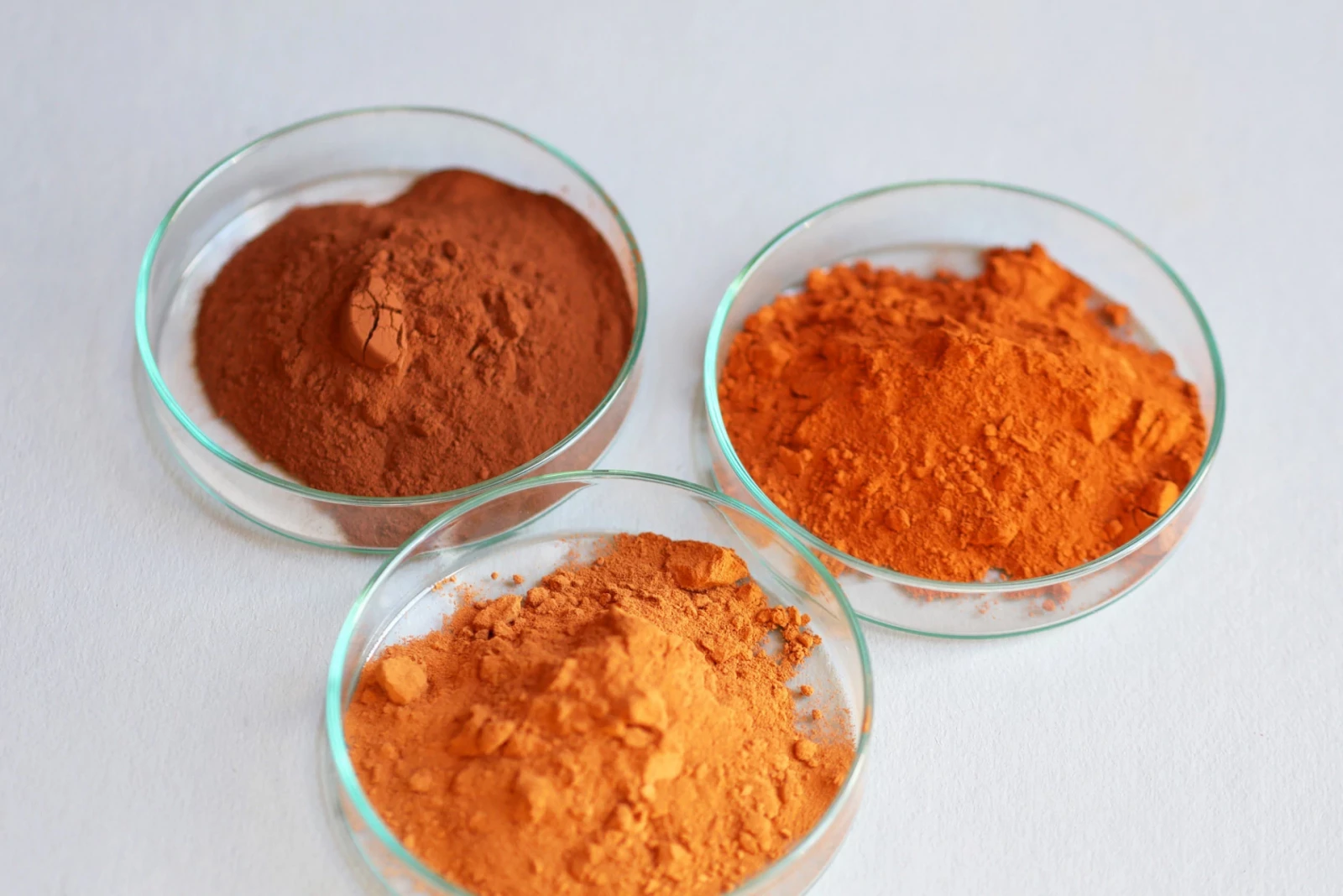
IRON WASTE COLOUR DIFFERENCES FROM VARIOUS LOCATIONS
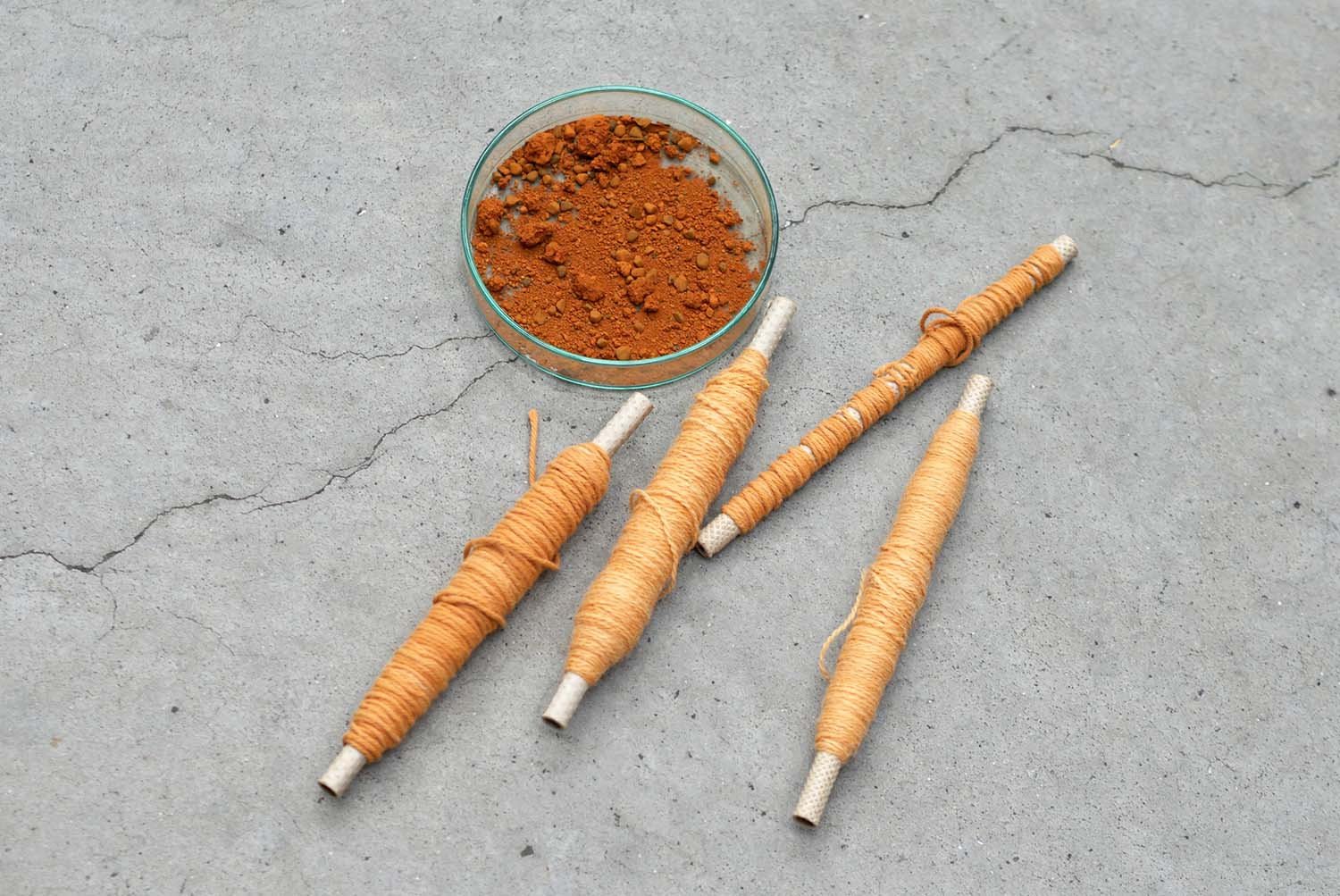
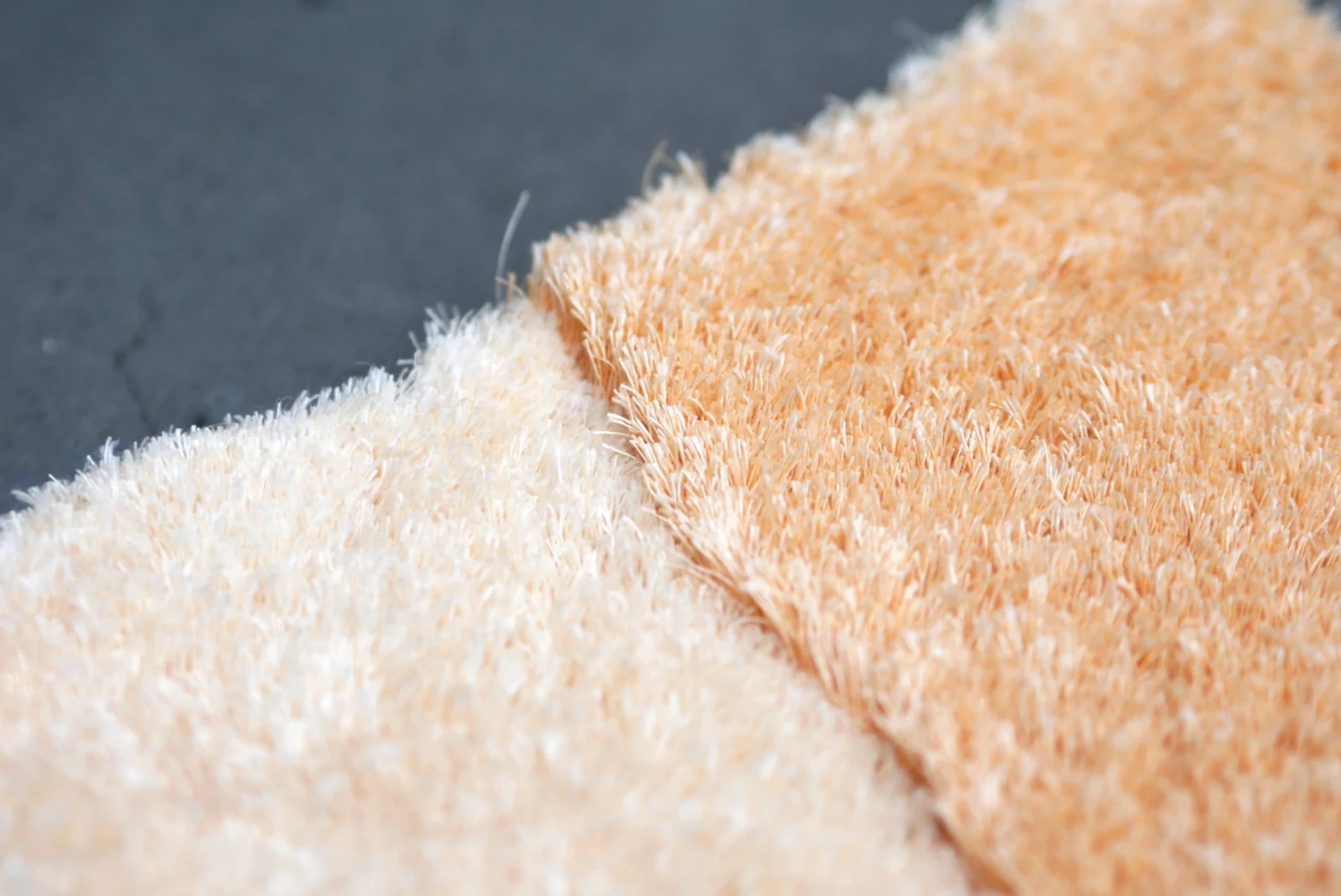
TEXTILE RESEARCH ON DYEING WITH IRON WASTE
As a result of detailed research, the Ignorance is Bliss porcelain tableware collection was developed in 2016. The colours are purely obtained by adding industrial metal waste functioning as pigments. Waste from soil remediation produces warm green and white grainy colours while iron waste from the drinking water supply gives shades of green, brown and black. Each porcelain piece is hand-crafted and fired in a unique reduction gas oven. Such oven eliminates oxygen during firing, contributing to the appearance of the glaze.
MORE INFORMATION

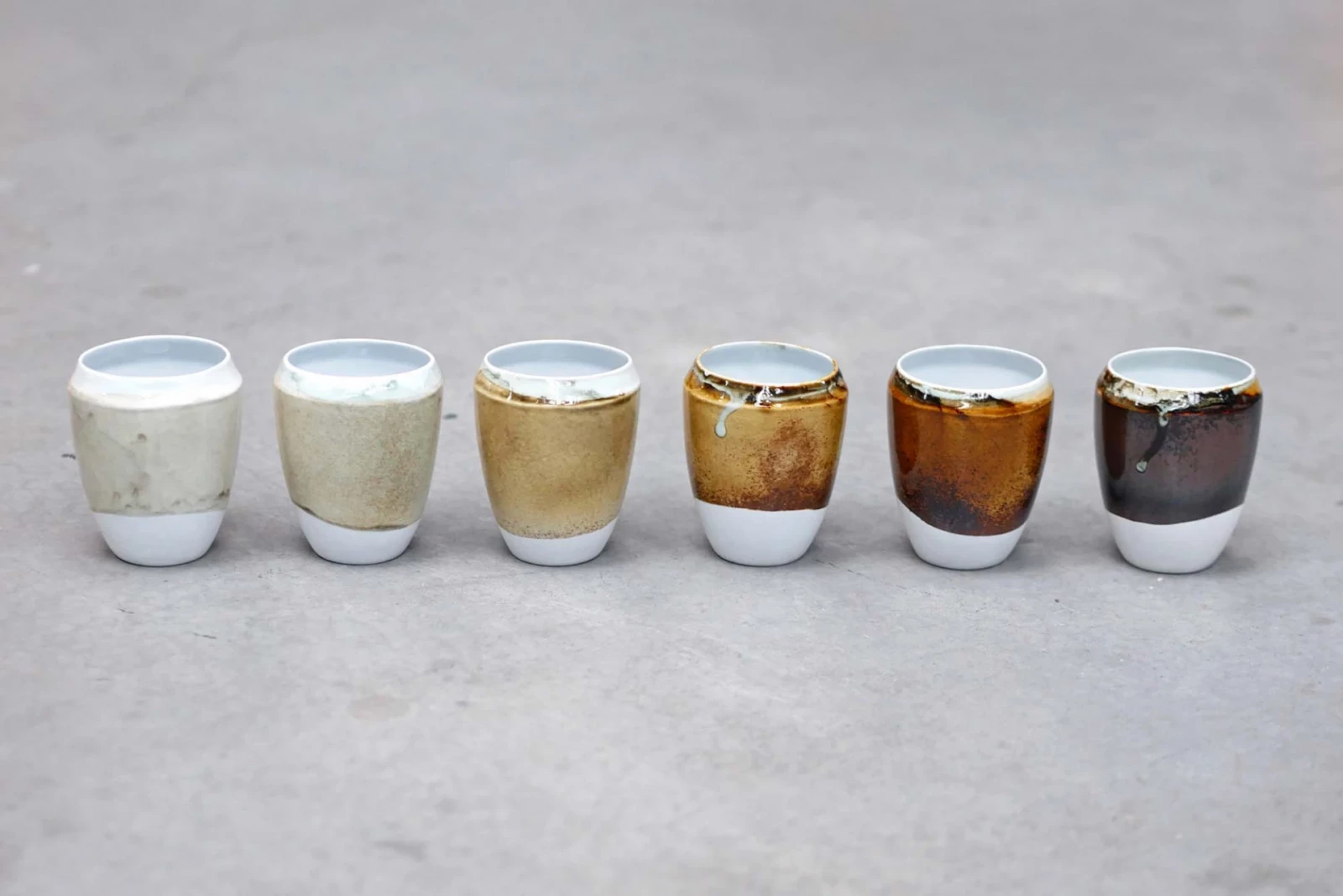
IGNORANCE IS BLISS PORCELAIN TABLEWARE
In 2017 Agne Kucerenkaite developed a range of stoneware tiles for Jordy's restaurant in Rotterdam, the Netherlands. New formulations of glazes were developed as stoneware differs from porcelain. At the time tiles were hand-made in a private ceramic workshop resulting in distinctive colours and subtle variations and textures. Ignorance is Bliss porcelain tableware and the first edition of tiles coloured with industrial metal waste were nominated for New Material Award 2018 and shortlisted for Dezeen Awards 2018, Homeware Design category.
MORE INFORMATION

FIRST EDITION STONEWARE TILES



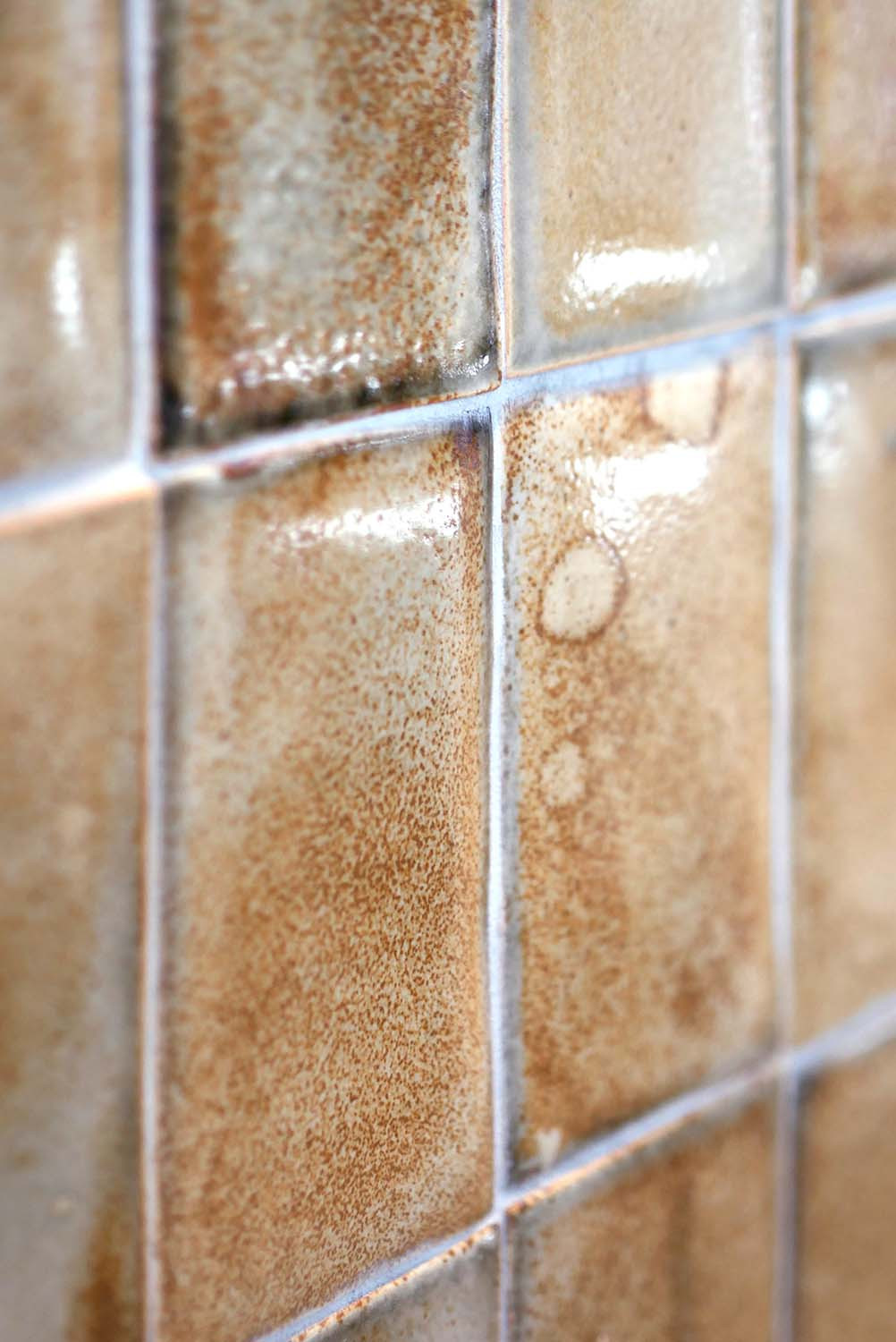

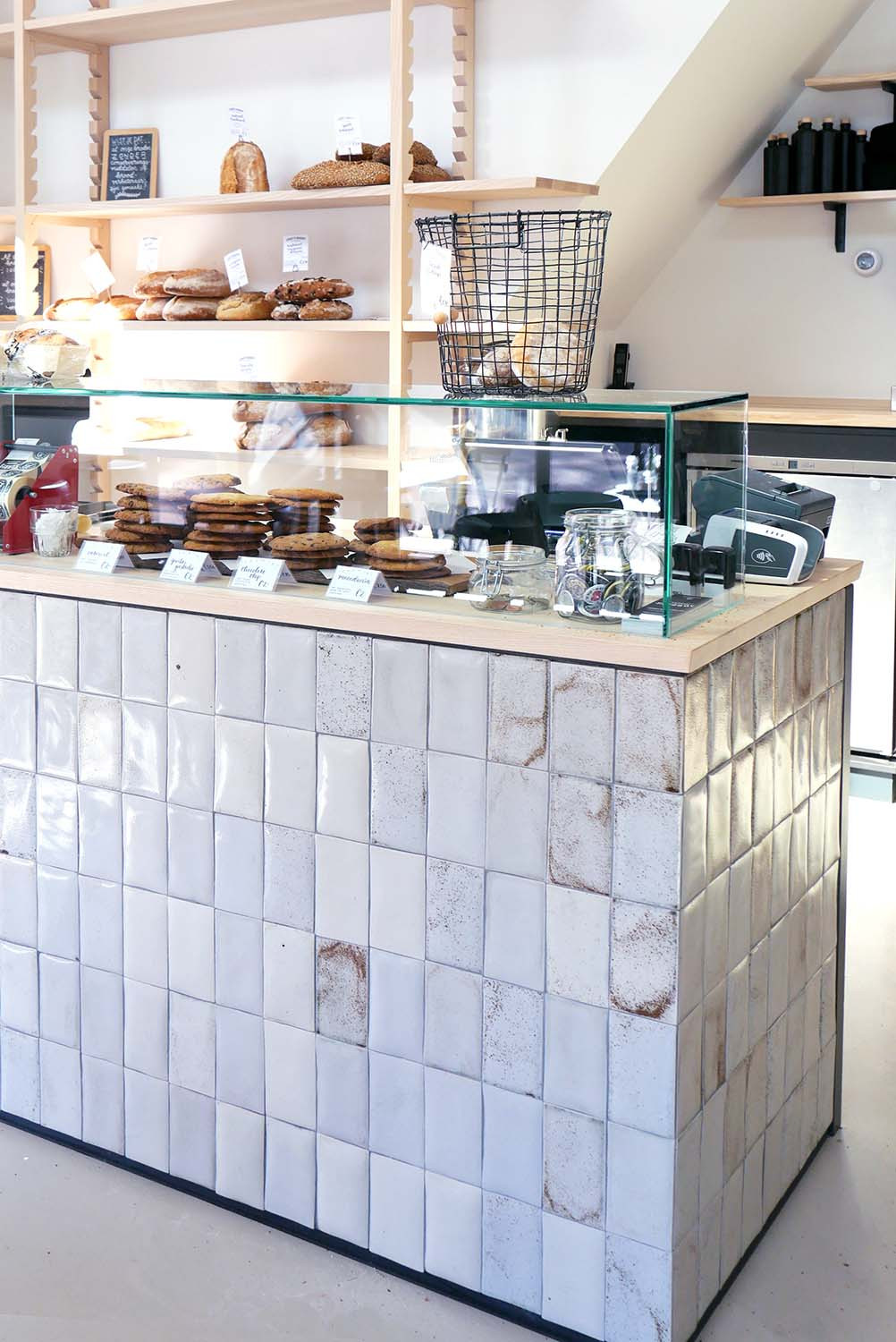
CERAMIC TILES IN JORDY'S RESTAURANT, ROTTERDAM
In 2018 'Albarello' tile factory became the manufacturer of Ignorance is Bliss ceramic tiles. The entire tile collection is glazed using pigments solely derived from industrial metal waste and by-products. The collection of 20 selected colours is the result of years of extensive research and experimentation. During the production process, each tile is touched by human hands around 9 times, leading to slight irregularities and subtle variations in shades. The collection has a distinctive look and feel and is intentionally formulated without poisonous lead and barium, which typically are common choices for bright colours.
VIEW PRODUCT
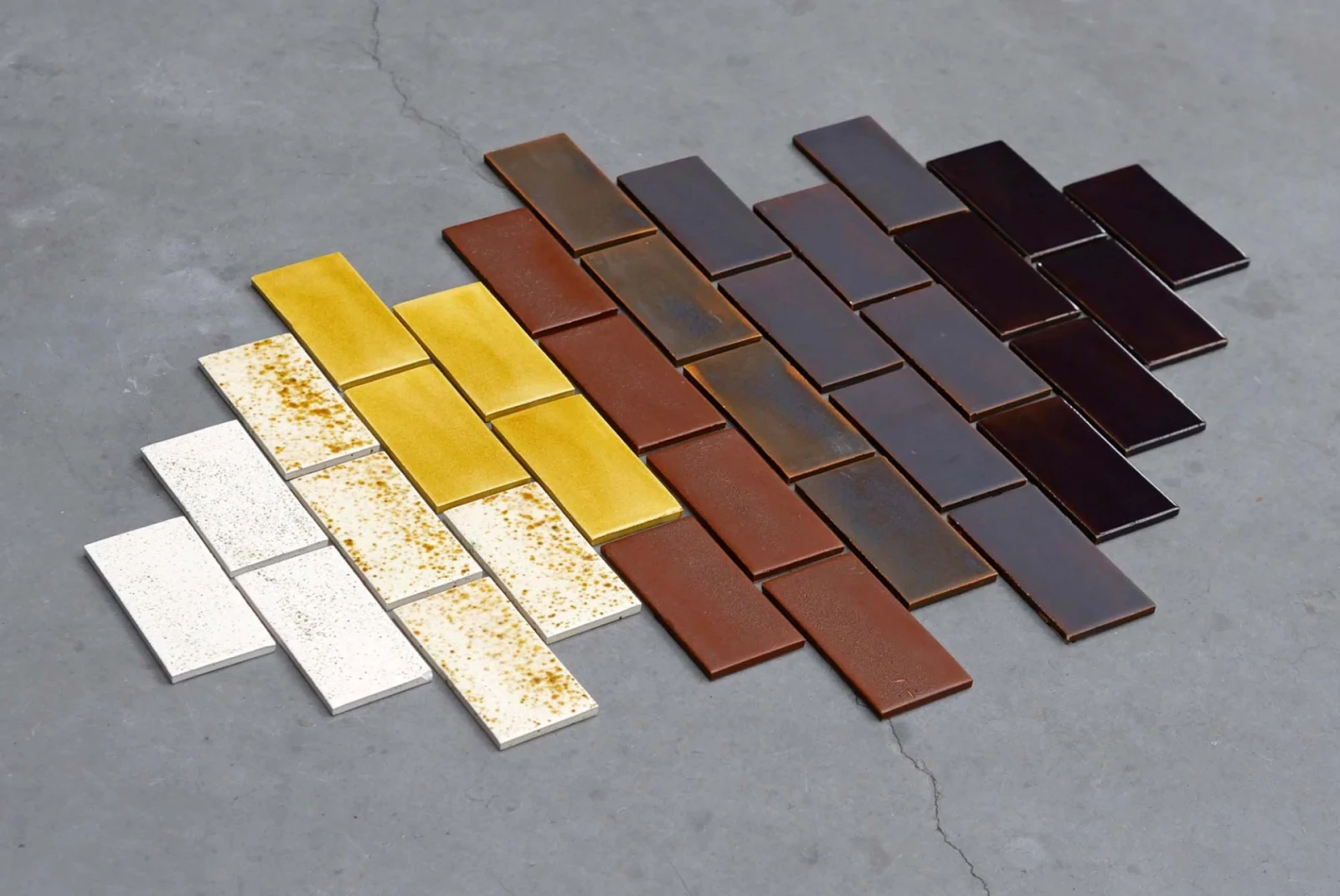
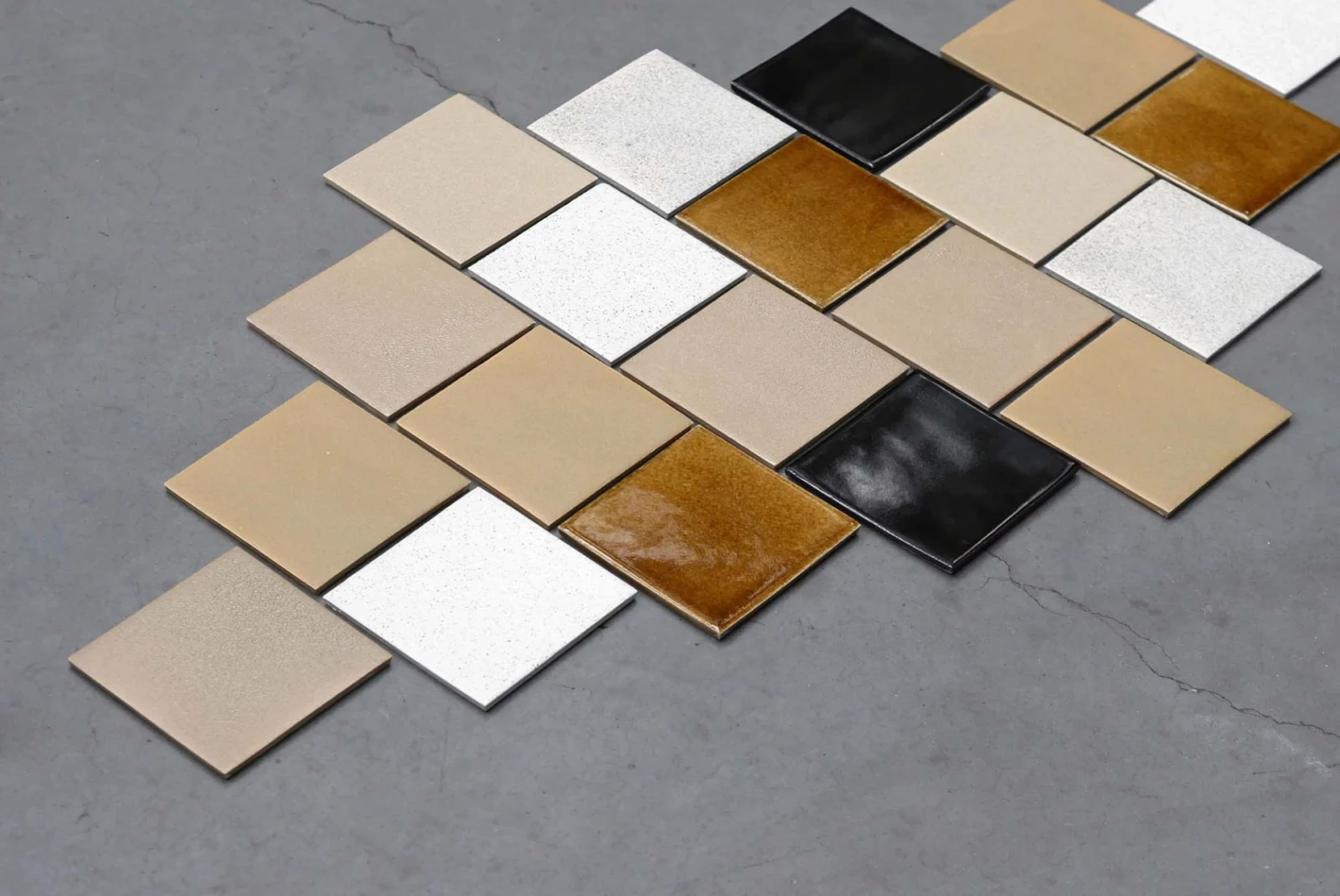
FACTORY PRODUCED IGNORANCE IS BLISS CERAMIC TILES
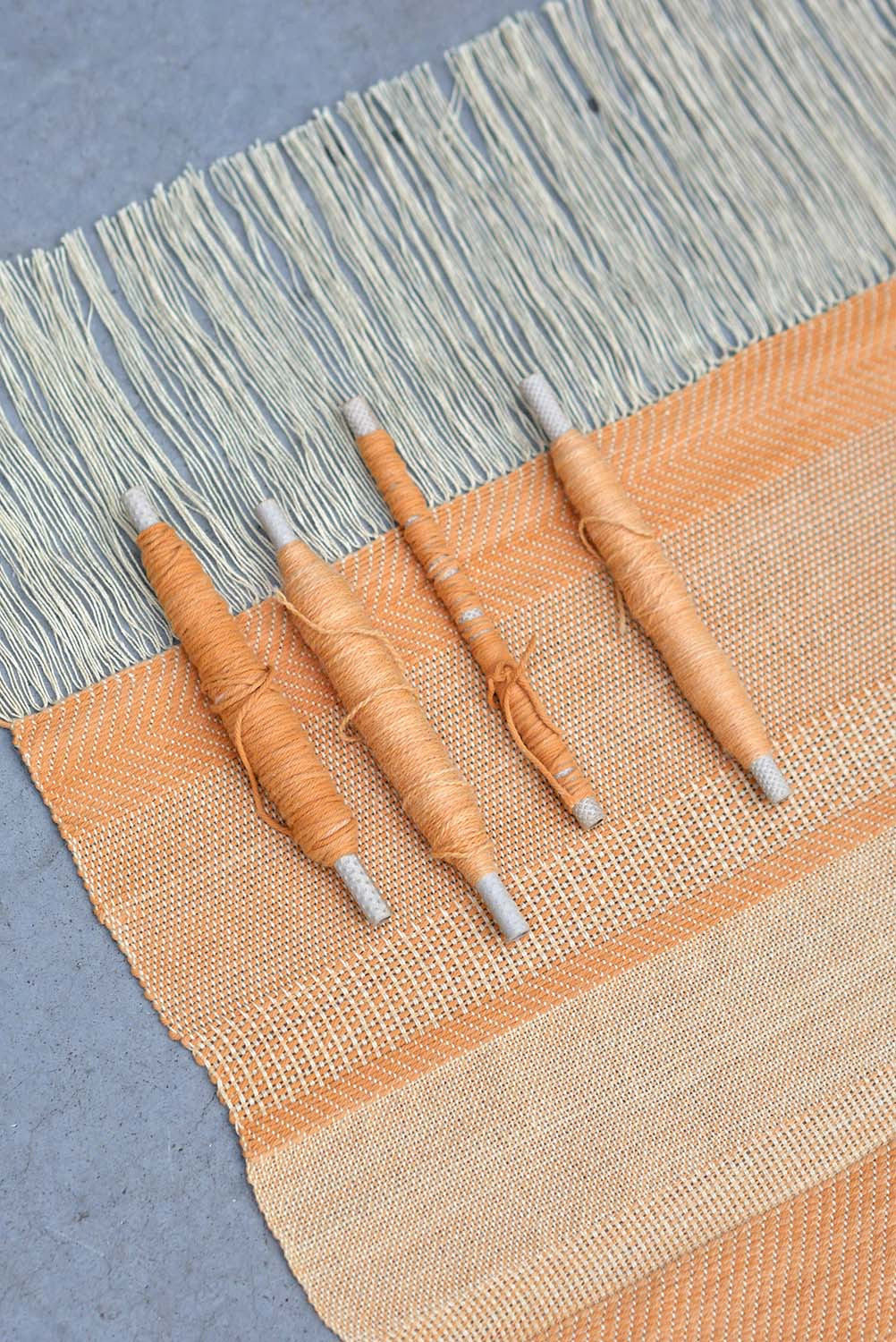
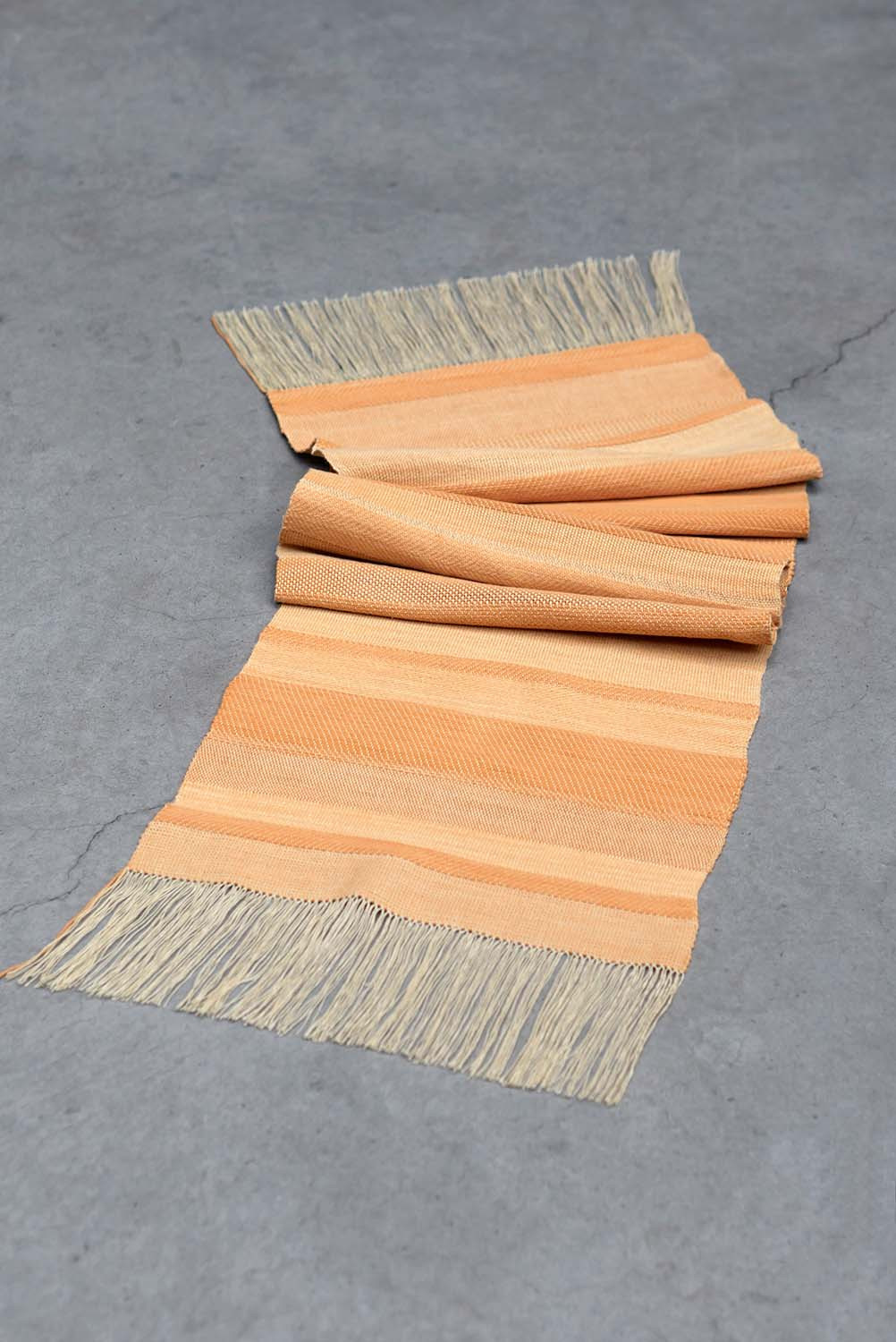
WOVEN FABRIC DYED WITH IRON WASTE
In 2016 the first textile prototype was made using industrial iron waste as a pigment. Later botanical waste and by-products were likewise explored for their colouring properties. The Ignorance is Bliss rug collection 'Lutetia' and 'Juno' was launched in 2021. Commercial textile dyeing causes a significant amount of environmental and health problems due to the chemicals used in the process whereas natural dyeing is rarely employed on an industrial scale. Drinking water supply and agriculture industries are the main waste suppliers for the collection. The Ignorance is Bliss rug collection is made from linen; a deliberate choice as it is a durable, resistant and hypoallergenic material. At the moment, yarns are hand-dyed with 9 natural colours that have been developed from waste.
VIEW PRODUCT
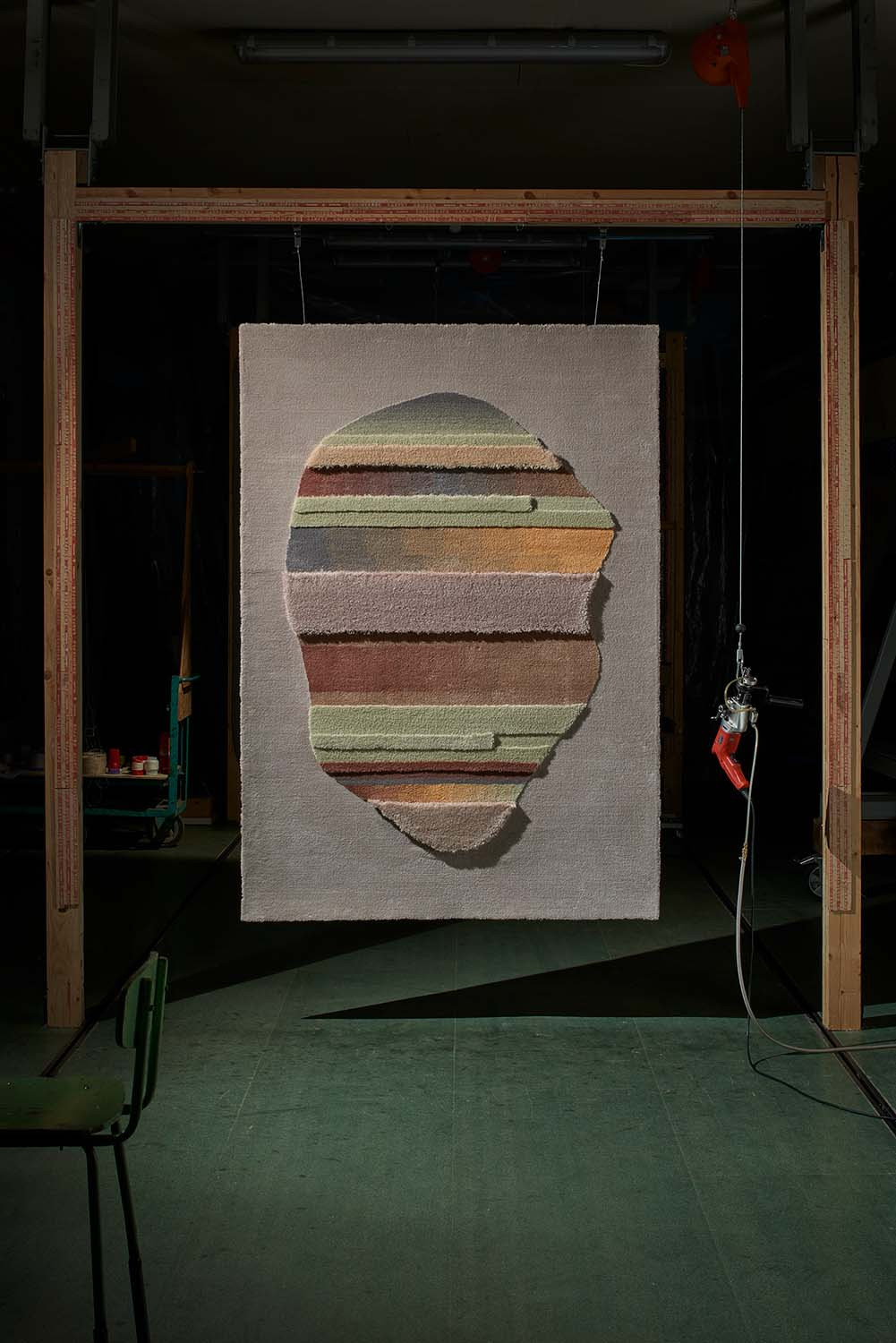

IGNORANCE IS BLISS LINEN RUG COLLECTION
As the research continues, Ignorance is Bliss ceramic tiles are being developed towards an even more environmentally friendly version. A holistic vision is adopted since the beginning of the project in order to rethink each cause and effect. Concerning sustainability, ceramic products are likely to fare well compared with other surfaces in architectural applications. Primarily, ceramic clays are composed of naturally occurring raw materials. Ignorance is Bliss glazes are designed without any highly toxic ingredients, such as lead and barium. At the moment up to 40% of each glaze is from upcycled content. It is expected to find further sources of industrial waste to increase the percentage. Ceramic products usually require significant energy to manufacture, although they can last for generations. Each decision for Ignorance is Bliss tiles regarding size and shape is made to be most energy- and cost-efficient. The various tile sizes are adapted to the current factory production setting, in this way the tiles can be cut using existing knives and dried before firing, which allows an unlimited stock. In addition, the current tile sizes are fitting in special cassettes that are saving a lot of space during firing.
Classic square and rectangular shapes save the most space, limit the occurrence of defects and are best for handling and efficient logistics. In order to save energy, the focus is on the low-temperature firing of 1060 C versus high-temperature above 1240 C. Ceramics as a material has great qualities, such as immense hardness and durability, good thermal and electrical insulation, good weather resistance. Furthermore, ceramics is non-fading, easy to clean, unreactive with other chemicals, prone to cuts and water damage. Ceramic tiles are difficult to reuse in their primary purpose, because of the adhesives used to glue them to the surface. Mounting techniques are being reevaluated for the Ignorance is Bliss tiles in order to rescue them if the interior is demolished. Currently, if the interior happens to be dismantled, tiles can be pulverised and added into new tiles and slabs. Ignorance is Bliss tiles are visually unique, a combination of tradition and craftsmanship through the manufacturing process. Therefore, customers are investing in tiles for long-lasting interiors.
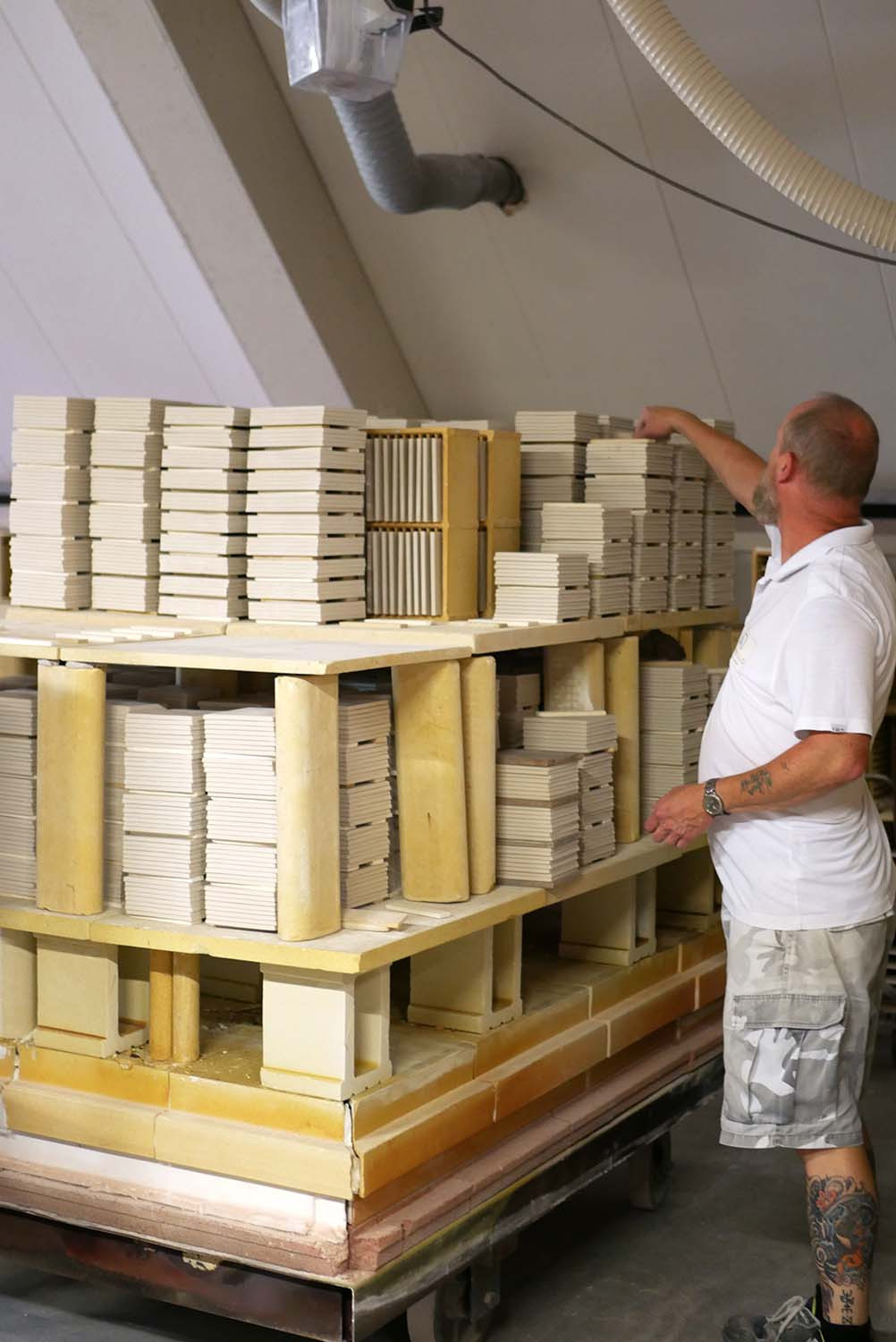
CERAMIC TILE FACTORY

CERAMIC GLAZE RESEARCH
At the moment, yarns for the Ignorance is Bliss rug collection are hand-dyed with 9 natural colours that have been developed from waste. In order to produce bigger quantities, the yarn dyeing process has to be industrialised. The next step is to formulate sustainable and reliable dyes that can be used in industrial textile dyeing and applied to diverse fabrics. Iron leftover from the drinking water supply industry is not a dye, but a pigment as it is not water-soluble. Further research is required to estimate the most suitable size of the iron powder in order to attach it to the fibers. Mud or soil dyeing is an ancient technique used throughout the world. Fabrics are usually soaked in a clay-like mud, rich with naturally occurring iron oxide. Additional mordants are used, such as soy milk to fix the colour.
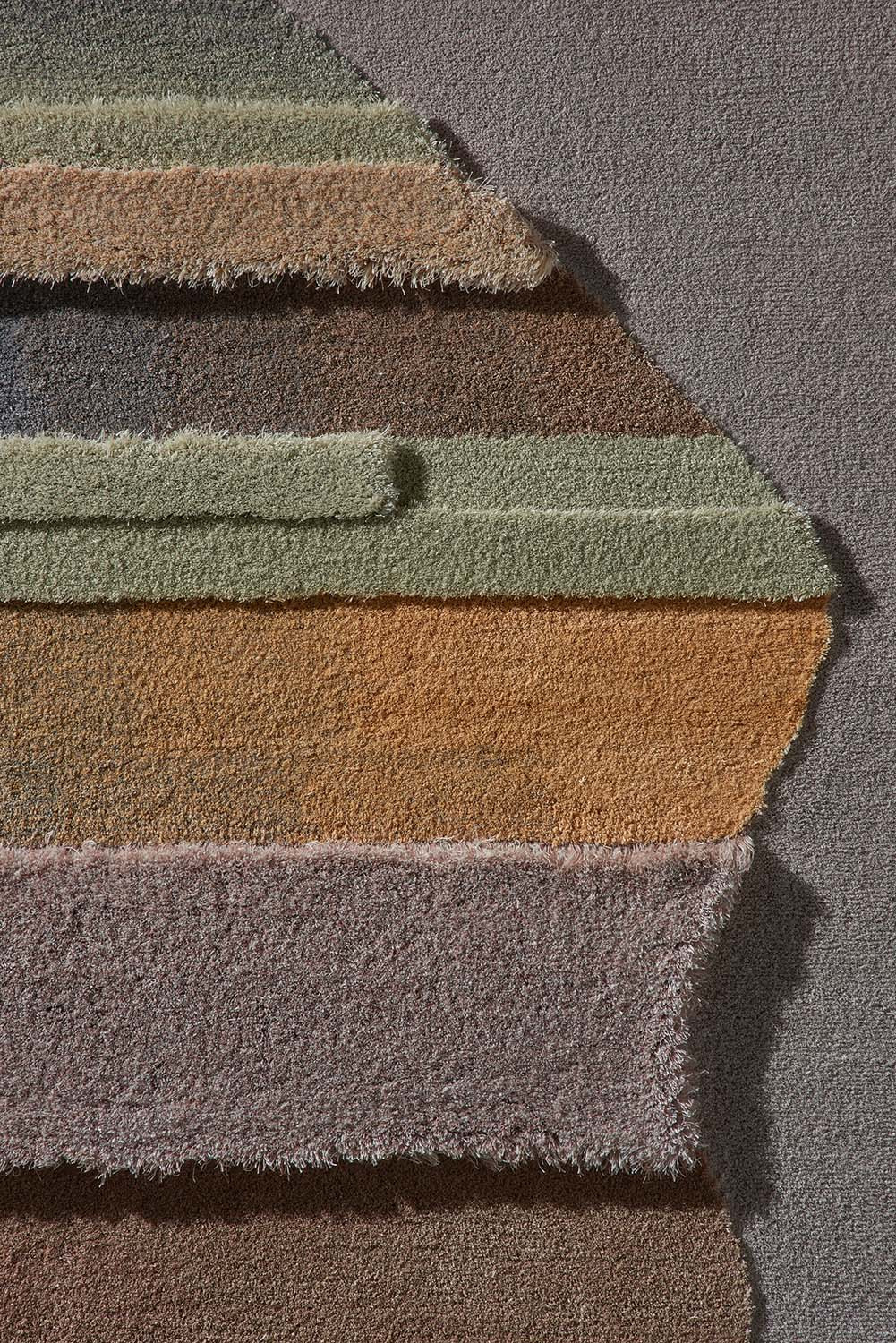
ORANGE COLOUR OF THE RUG IS MADE FROM IRON WASTE
Iron-rich sludge waste from the drinking water industry is classified as non-hazardous. Therefore, it is easily treatable and the integration into other materials and techniques is less regulated. Sludge waste from soil remediation is defined as hazardous. This means that the amounts of various metals are higher than the norm and can affect living organisms when inhaled or swallowed. 'Hazardous' industrial metal waste can be used in glass-type compositions, where extremely high temperatures are needed for the structures to close preventing any leakage. Additional material research is being carried out to create glass blocks and vitreous enamel metal panels.
Agricultural industries are the main suppliers of botanical waste for Ignorance is Bliss projects.
'Jorus' is a mid-size farm, based in Lithuania, that cultivates approximately 364 hectares of land. In 2020 'Jorus' processed around 2 tonnes of industrial hemp for food and pharmaceuticals. Furthermore, the company produces its own cold-pressed oil. Hemp hulls are the protective outer shell of the hemp seed that remains after the seed has been extracted. 'Jorus' provides hemp hulls for Ignorance is Bliss projects. Another Lithuanian partner 'Forest Energija' grows and processes various agricultural plants and produces edible oils. The company mainly supply with mustard (Brassicaceae) and evening primrose (Oenothera biennis) leftover after mechanically extracting oils from the seeds.

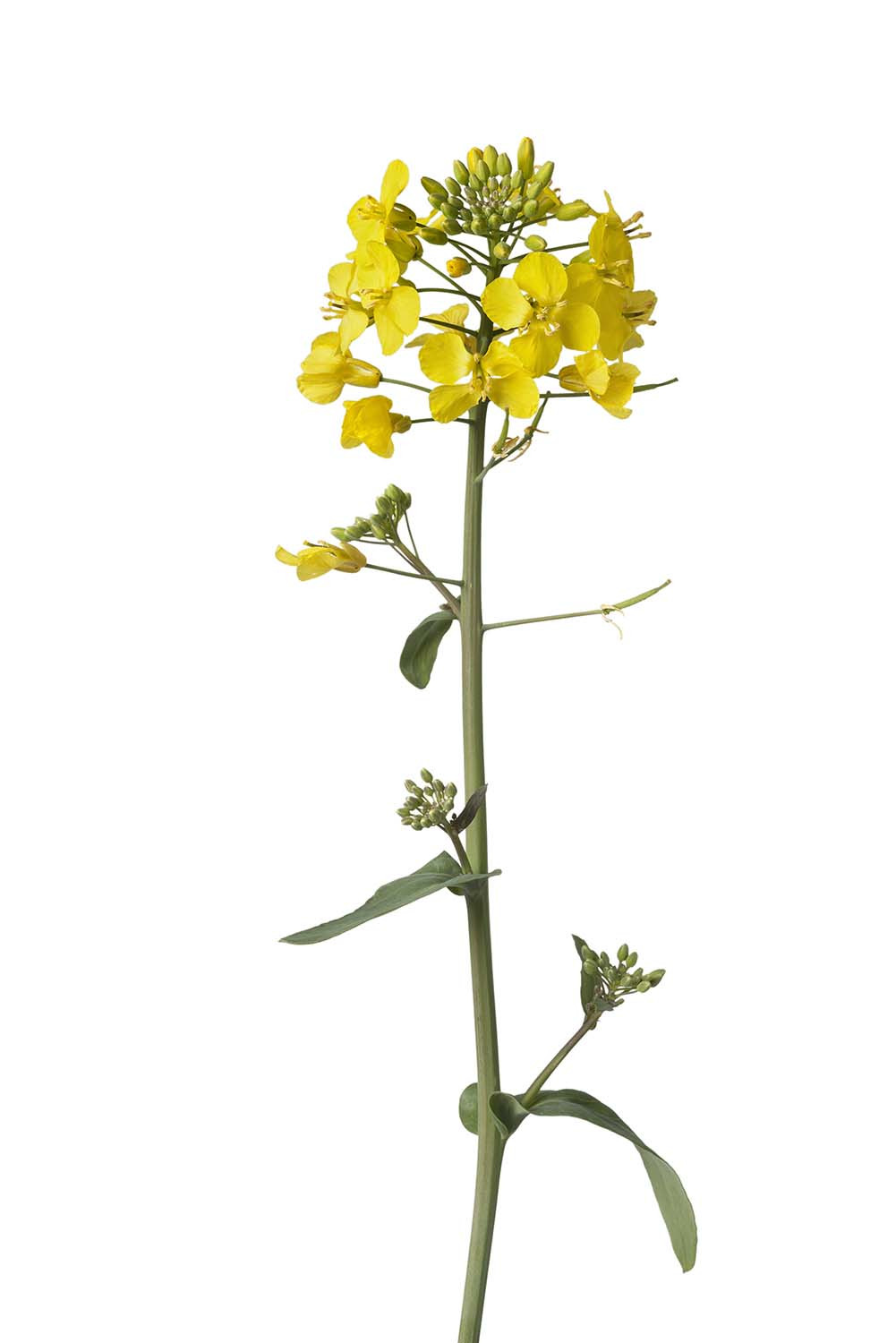
BLOOMING EVENING PRIMROSE / MUSTARD


INDUSTRIAL HEMP CULTIVATION
Industrial hemp (Cannabis sativa) is cultivated for its fibres or its edible seeds. Hemp is an exceptionally versatile crop, therefore can grow in a variety of conditions. Plants typically reach between 2 to 5 metres and mature in about three to four months. With the optimal conditions, yields of hemp fibre can reach 7.5 tonnes per hectare.
The confusion between industrial hemp and marijuana is based on the visual similarities of widely differentiated variations of plants. This association led to regulations that banned the farming of hemp in the 19th century. At the moment, the legality of industrial hemp differs among countries. Industrial hemp is high in fiber and low in psychoactive ingredient tetrahydrocannabinol (THC). Furthermore, hemp contains higher concentrations of a chemical compound called cannabidoil (CBD), which has therapeutic applications.
The edible hemp seeds contain about 30% oil and are rich in essential fatty acids. Additionally, they are a great source of complete protein, vitamin E and various minerals. The leaves are not as nutritious as the seeds, but can be fully consumed.
Hemp was one of the first crops cultivated in human civilization. The first traces of hemp are found in Asia, dating back to 8.000 BC. The Chinese used hemp to make textile fiber. Around 150 BC, they produced the world’s first paper, entirely from hemp. China has the longest continuous history of Hemp cultivation. Later hemp is found in Europe, Africa and South America, which was used also for pottery, medicine, food and recreation. During the middle ages, hemp became a major crop with immense economic and social value. Hemp canvas and ropes were further used in sailing ships. The word 'canvas' is derived from the word 'cannabis'. Until the prohibition in the 19th century, 80% of clothing was made from hemp textiles. Hemp fiber has been used extensively throughout history, because of its versatility and ease of cultivation.
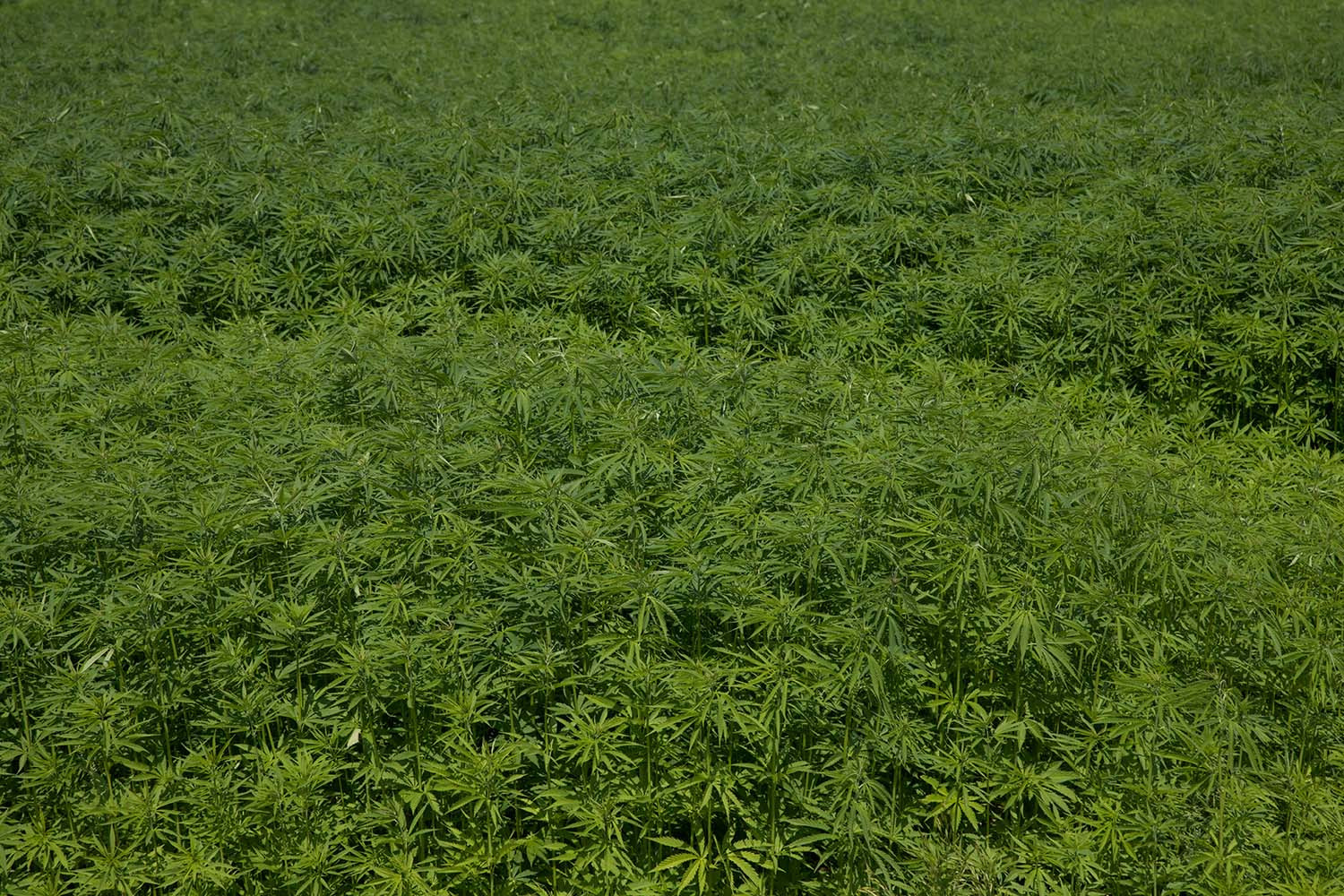
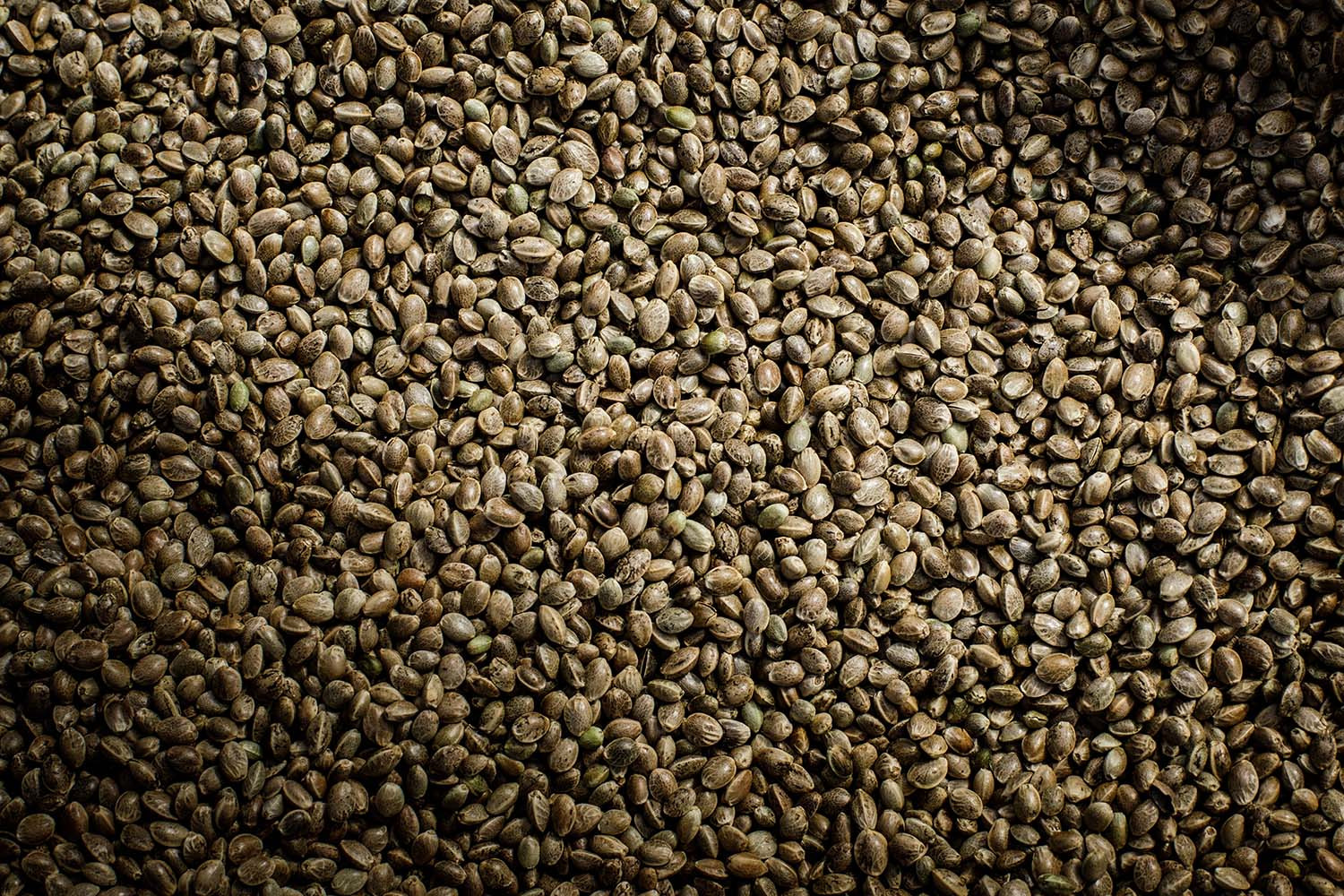
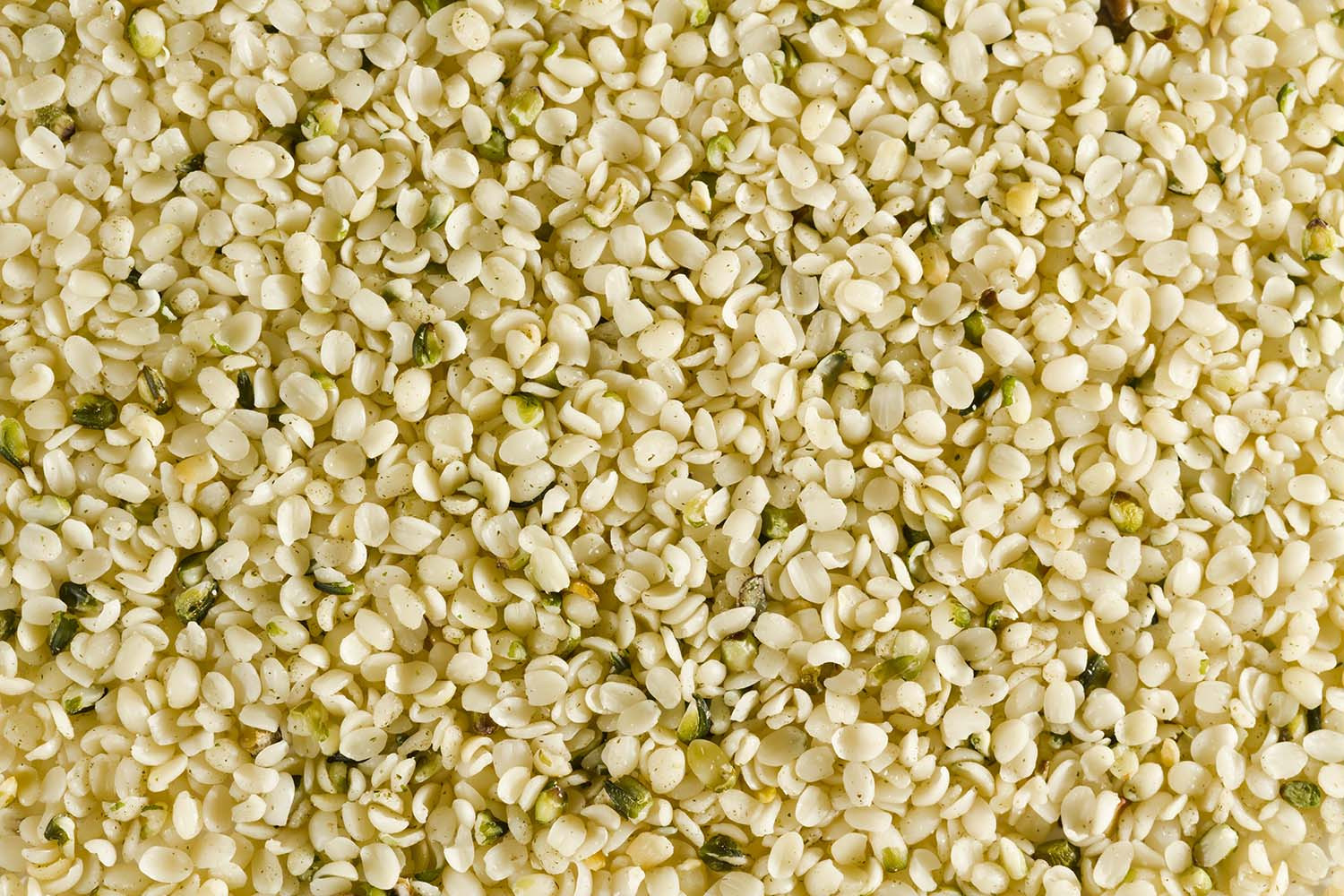
INDUSTRIAL HEMP FIELDS / SEEDS / HULLED SEEDS
Even though my partners grow sustainably and belong are ecologically certified, they are facing difficulties with the organic waste problem. A part of this by-product can be sold to the livestock feed, but there are no clear regulations and understanding of the potential use. As the quantities of the partner shells were still relatively small, they were spread in the fields, but with a continually growing business, they admit, that it will be neither logical nor economical. Additional research is needed on the potential use of such a waste and how it could become a part of the circular economy. One such potential use could be creating dyes for the textile industry.

HEMP, MUSTARD, EVENING PRIMROSE, AND NIGELLA SATIVA WASTE PELLETS, REMAINING AFTER OIL PRODUCTION
Sustainability issues in the textile industry include the use of toxic chemicals, high water consumption, high energy consumption, and huge waste generation. Too many dyes are used in the dyeing and printing of textiles; the Color Index International lists 27,000 individual products under 13,000 Color Index generic names. Volatile chemicals pose particular problems because they evaporate into the air or are absorbed into foods or through the skin. Some chemicals are carcinogenic or may cause harm to children even before birth, whereas others may trigger allergic reactions in some people. The wastewater from textile plants is classified as the most polluting of all the industrial sectors, considering the volume generated as well as the composition.
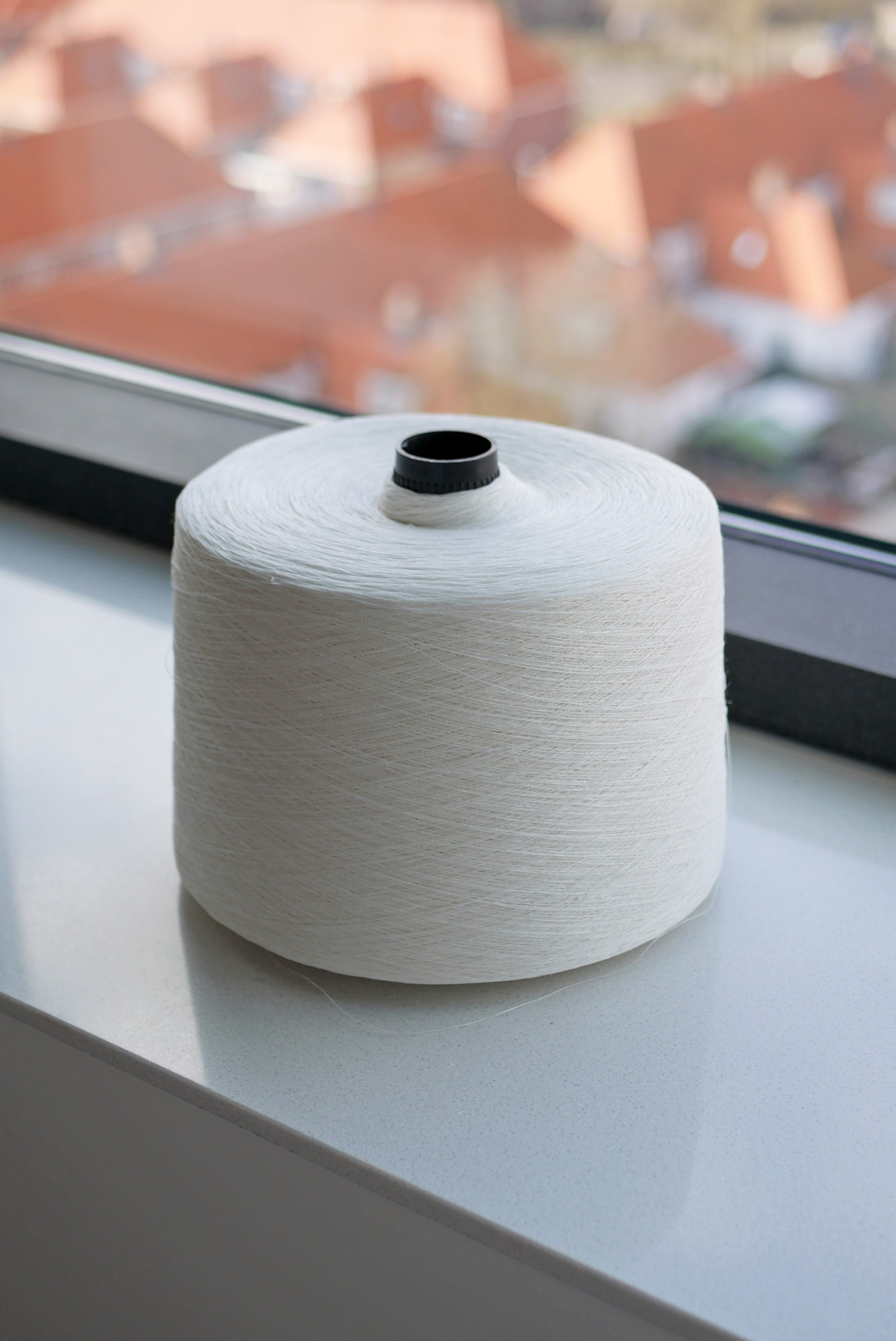
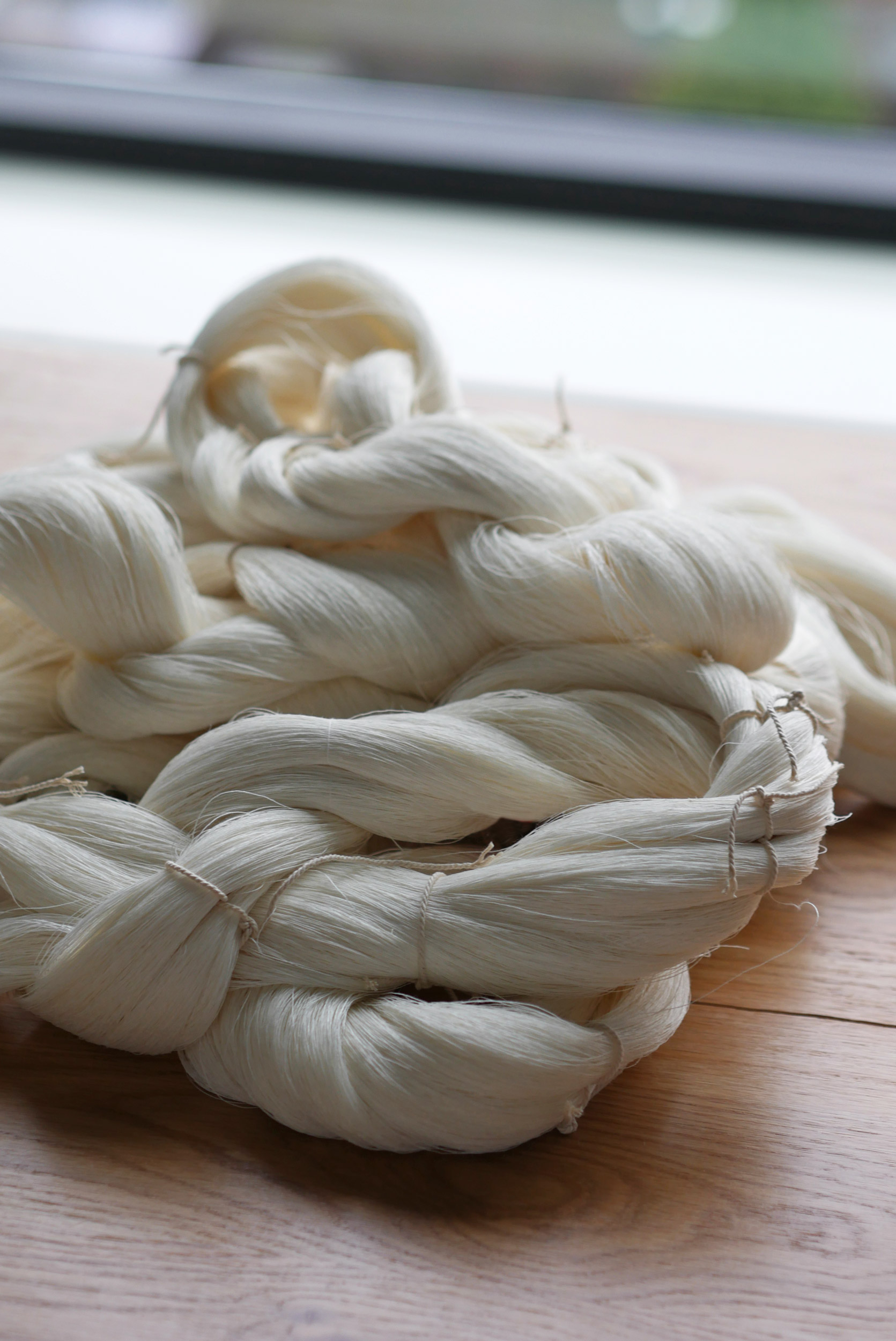
The main objective is to create reliable sustainable natural textile dyes using waste from the industries such as drinking water supply, food, beverage, pharma, and cosmetics. Such dyes could be used in professional textile dyeing and applied to diverse fabrics. The current research was focused mainly on plant-based textiles, such as linen and cotton, and partly wool and silk. Fibers from animals required a different methodology than plant-based fibers.
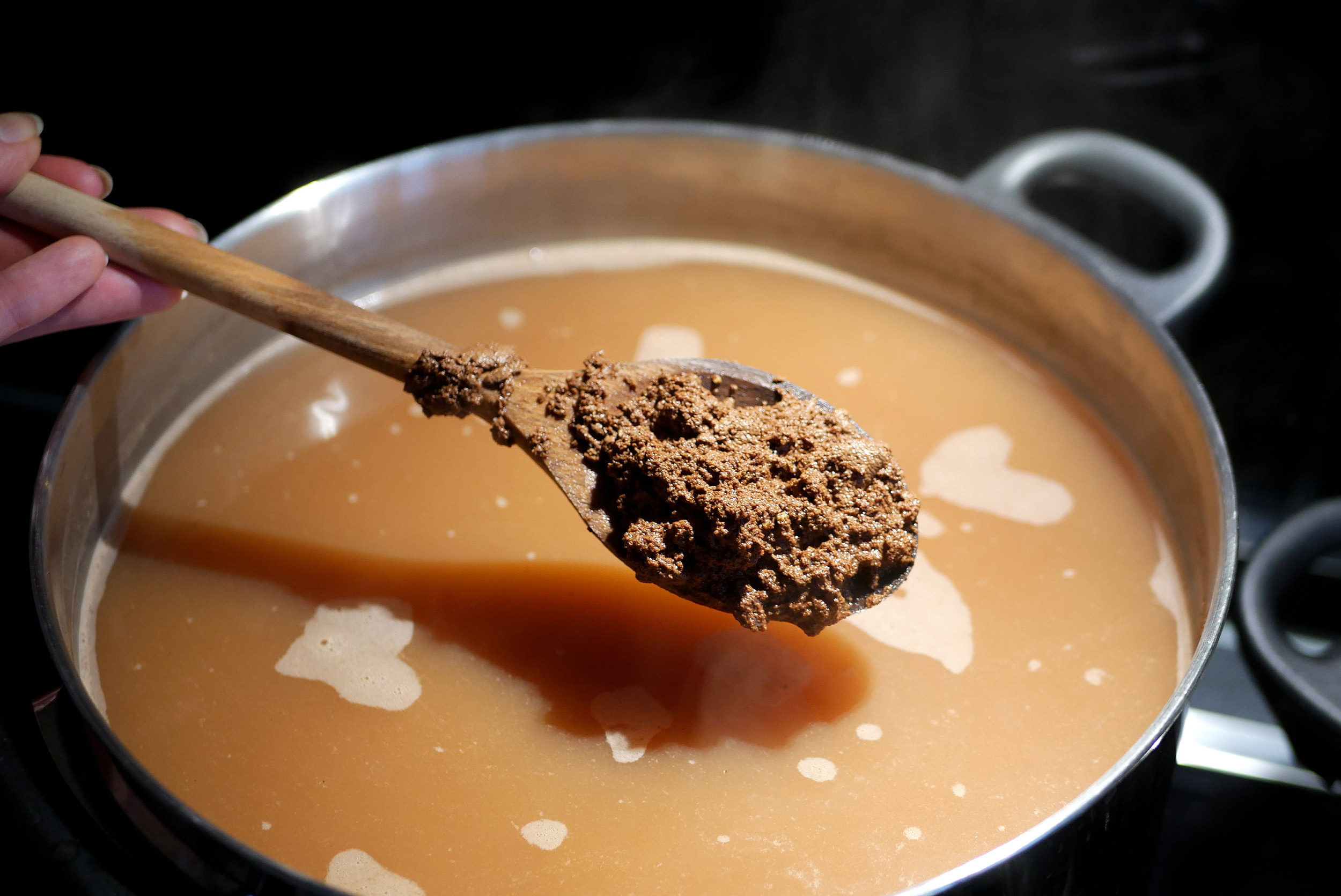
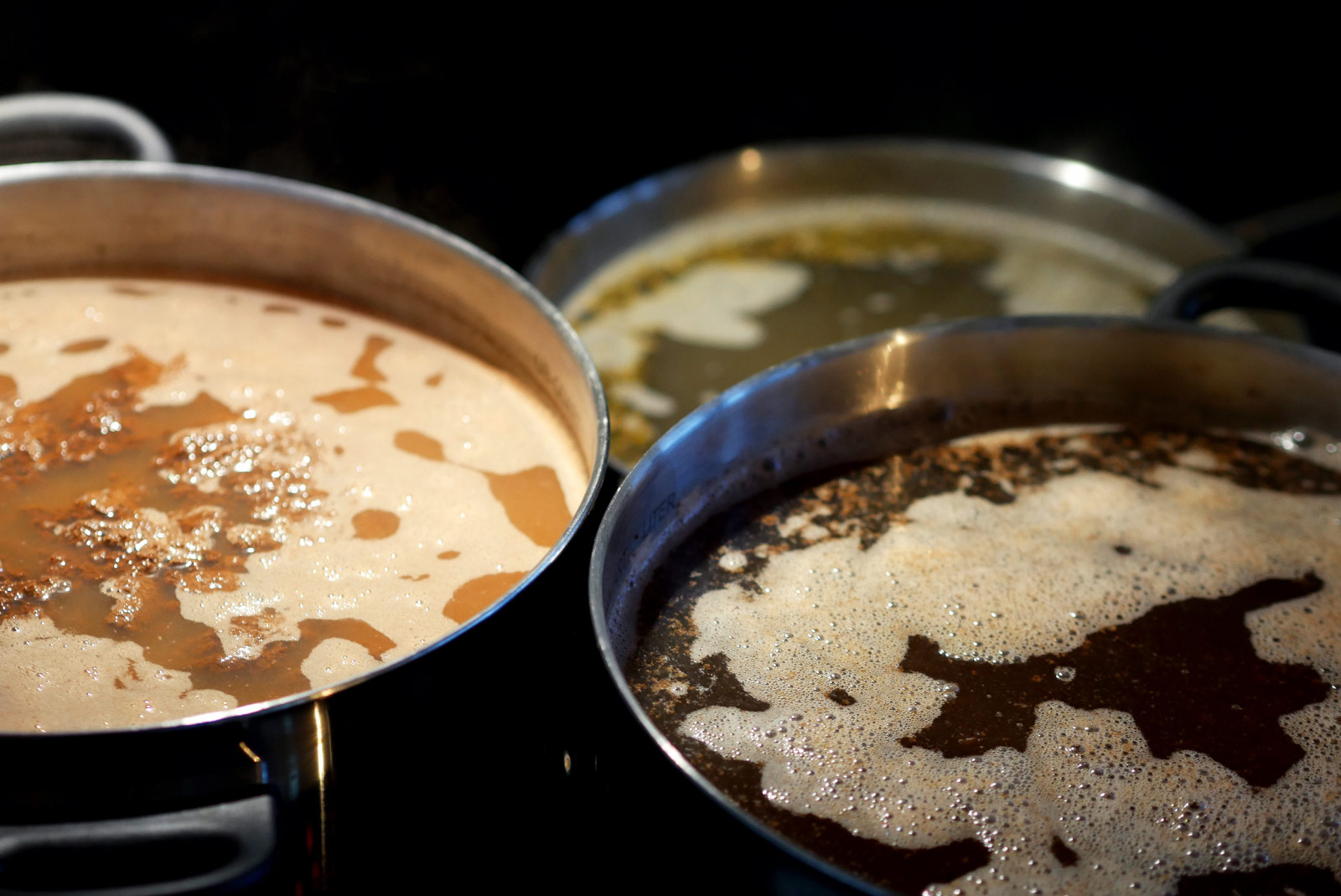
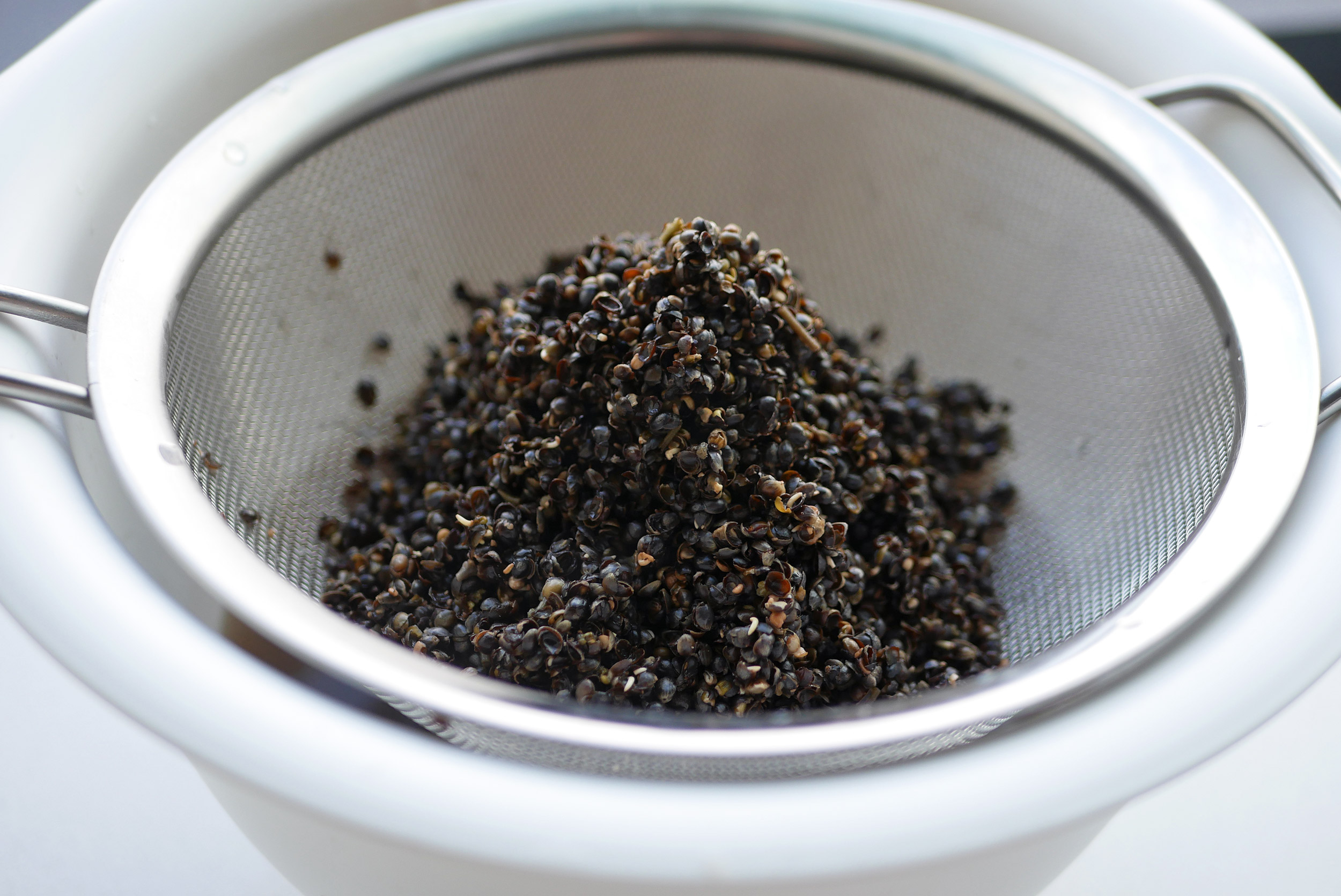
PREPARING PLANT DYE BATH
To achieve the best possible results yarns should be scoured to get rid of industrial chemicals and waxes. The botanical waste used from edible oil and seeds industries doesn't require specific preparation as part of it already comes in dry pellets, which can be easily broken. First, the plant bath has to be prepared by boiling large amounts of leftovers. When boiling, waste easily disintegrates. The boiled mixture has to go through the fine mesh and the solution is ready for dyeing. Yarn is boiled in the solution, carefully monitoring the right temperature. Mordants and fixators have to be used as well, otherwise, the colour can be easily washed out. The experimentation was done with iron and copper sulphates, and alum.

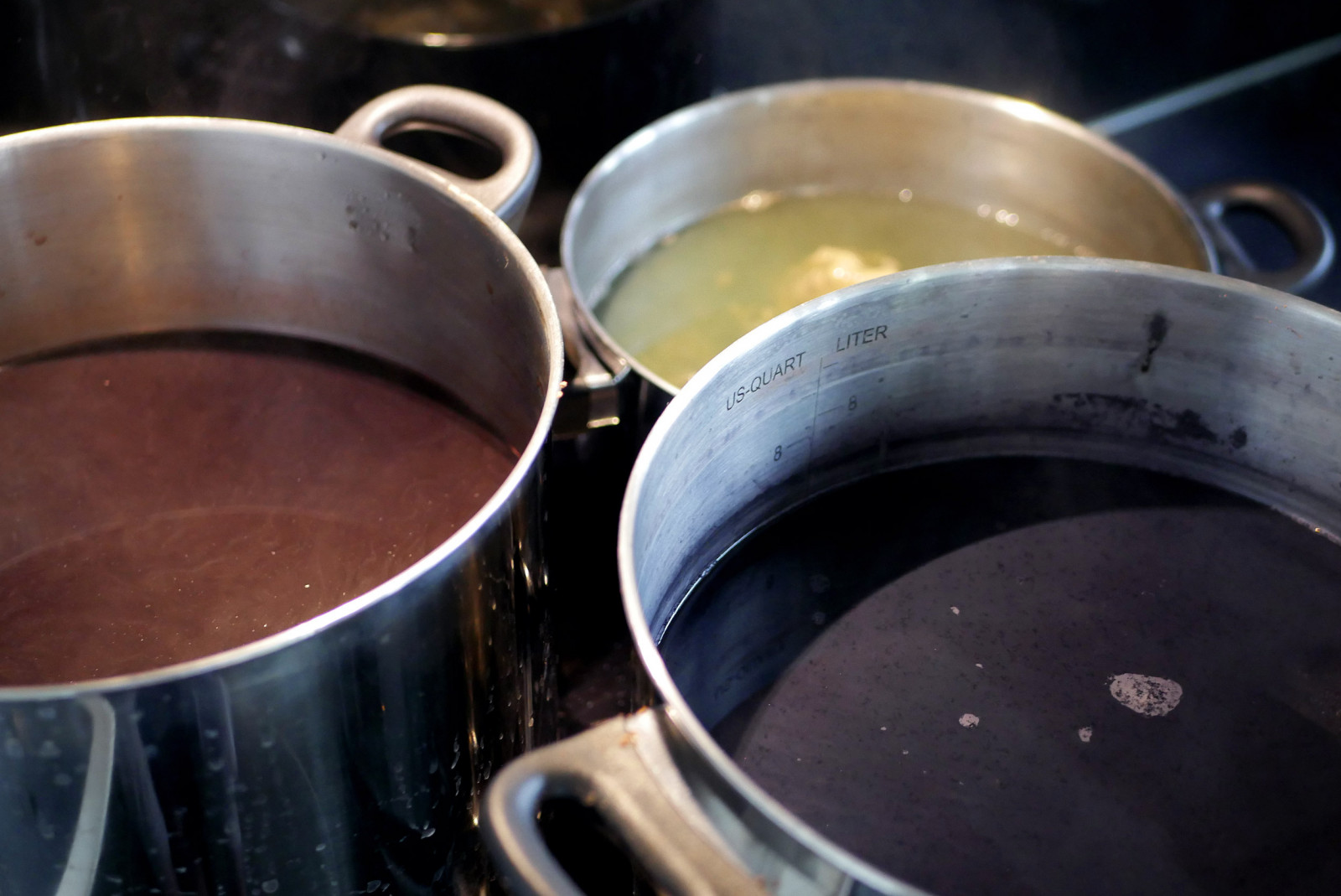
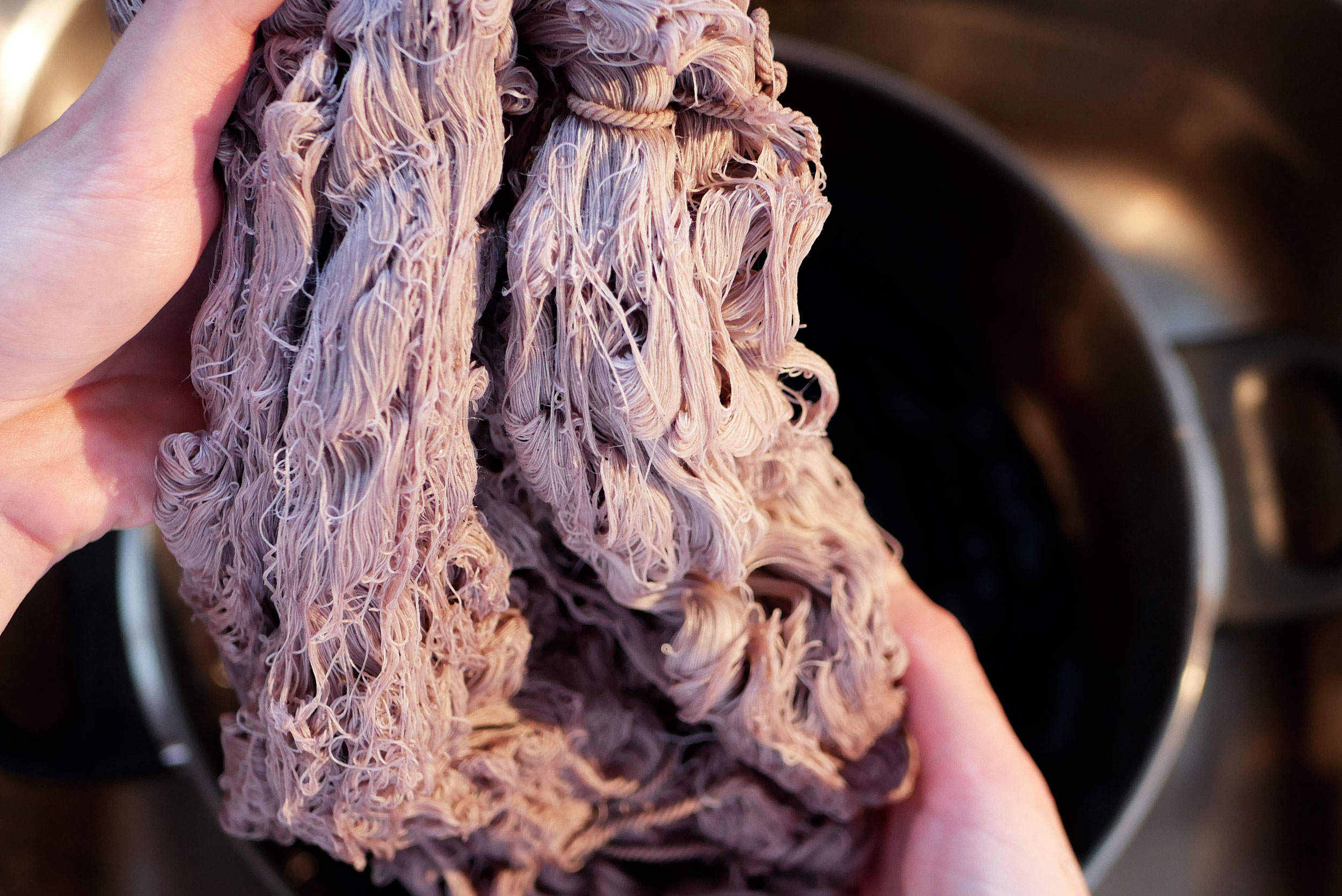

Continuous in-depth research, experiments with numerous potential waste materials, and various techniques lead to promising results. The current colour palette displays a broad range colours of beige, orange, pink, violet, purple, brown, green, and black. Yarns are dyed solely using evening primrose, industrial hemp, mustard, and iron residue.
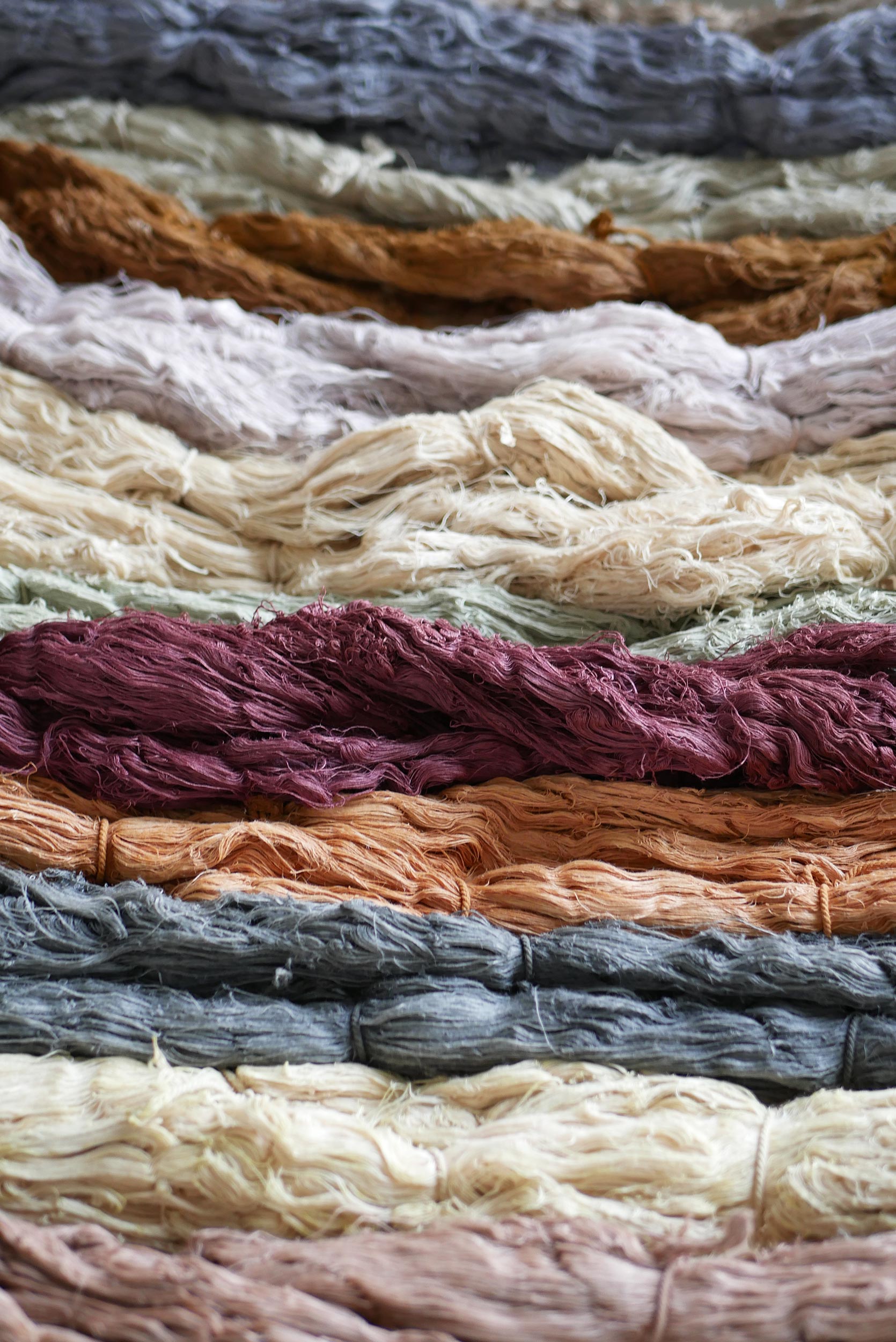
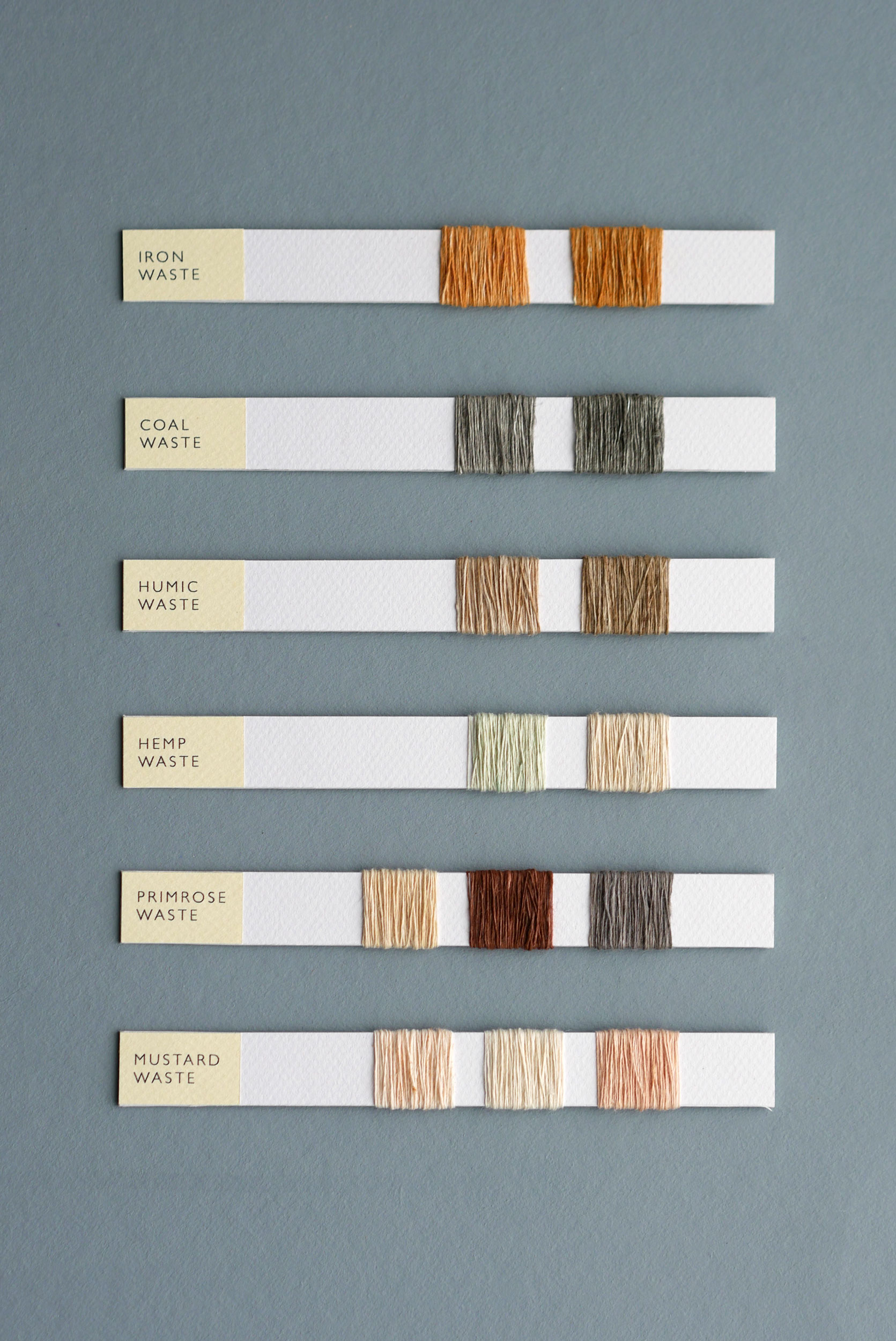
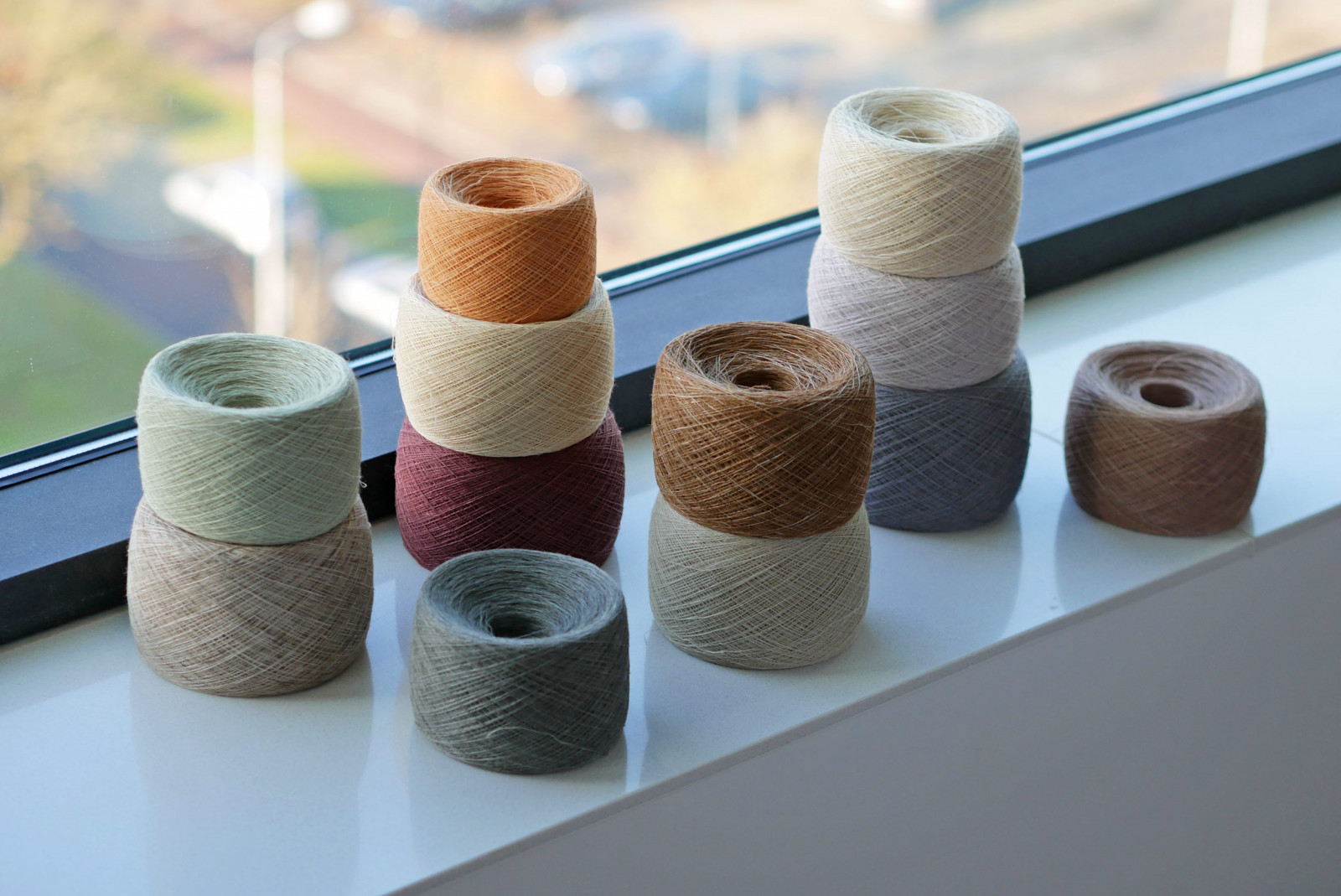
The carpet was chosen as an object to show the coloring possibilities. A carpet is a perfect object as most people have one at home and it doesn't need special care. It doesn't need to be washed often, such as e.g. clothing, so colours of the natural dyeing can be preserved better. Collaboration is established with Ecolinum, a Lithuanian manufacturer, producing hand-tufted eco-friendly linen rugs. Flax fibers, used in carpet making, are long-lasting, durable, hypoallergenic, and don’t shed, comparing with other types of yarns.
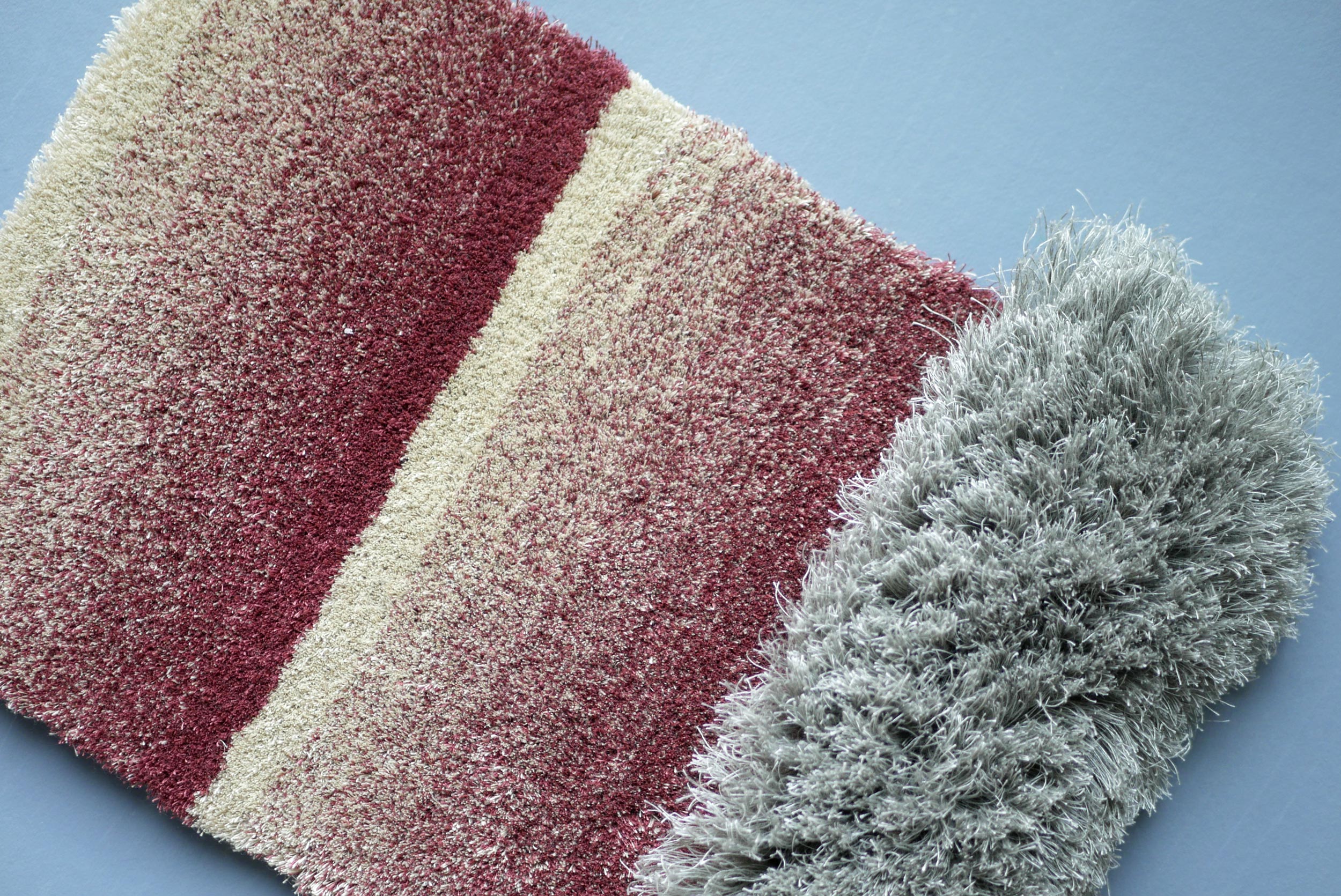
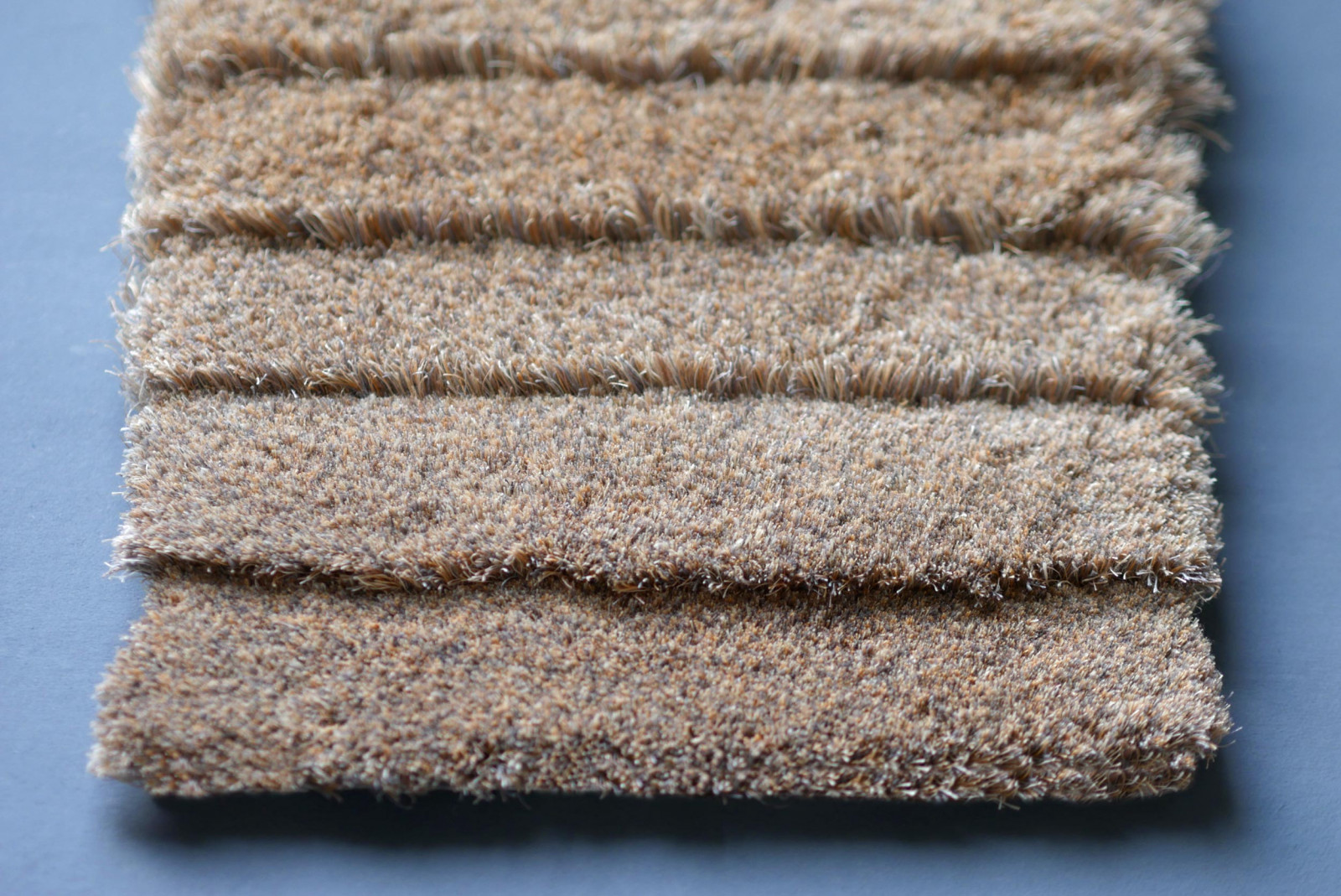

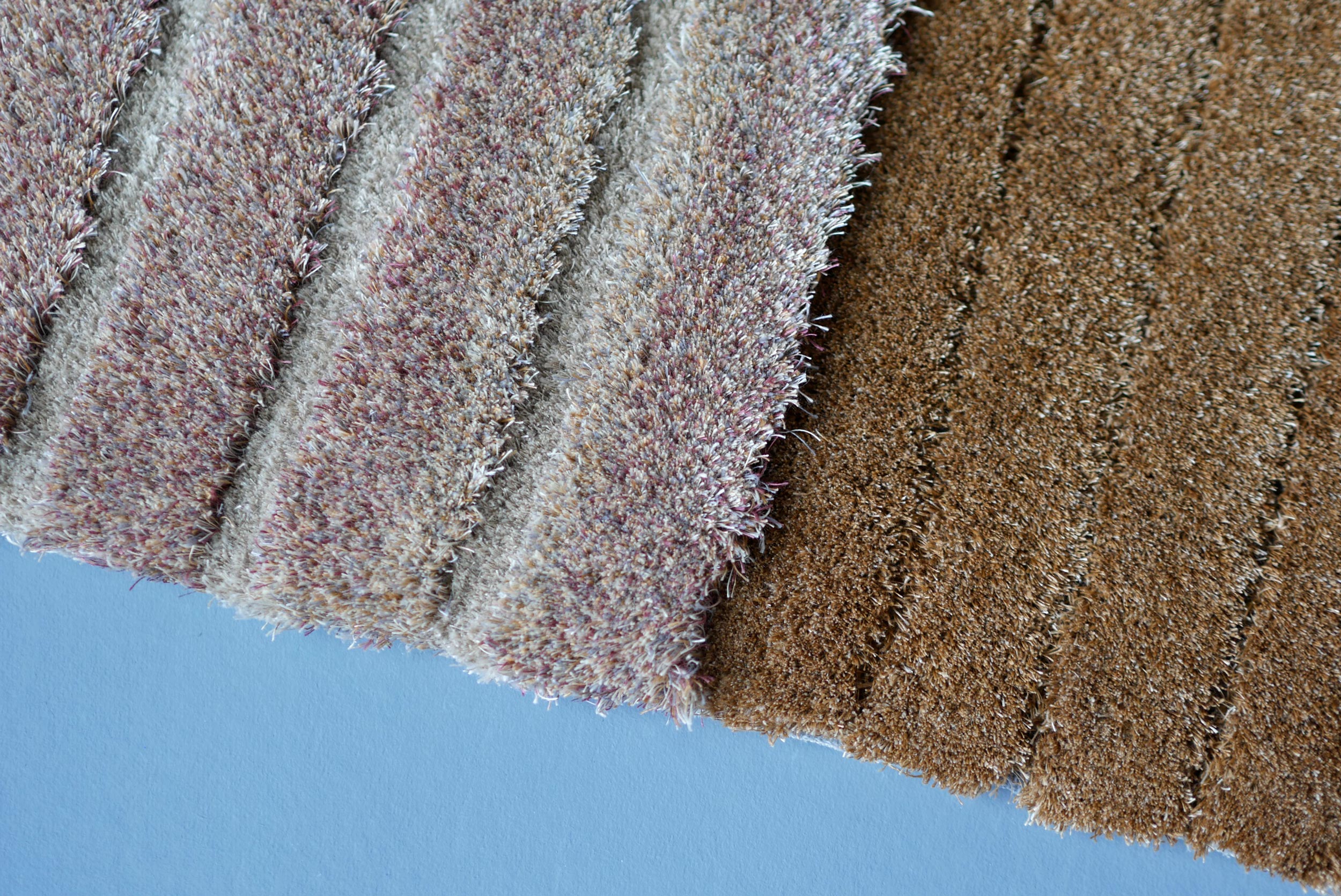
CARPET SAMPLES USING YARNS DYED WITH BOTANICAL WASTE


ASTEROIDS JUNO AND LUTETIA
The final rug design is a blend of organic and geometrical shapes resembling natural and artificial. Industrially generated waste represents the post-industrial revolution, but the dyeing methods and materials are healthy and natural, often using generational knowledge.
The structure within the carpet is inspired by the shape of an asteroid. The asteroid is a small rocky object orbiting the sun. Asteroids are leftover from the formation of our solar system. Since asteroids formed at the same time as other objects in our solar system, these space rocks can give scientists lots of information about the history of planets and the sun. The parallel is drawn between an asteroid being a primal raw material and industrial waste similarly being a starting point to creating new materials and objects. There is gentle gradient fusion between some colours, most of which are subtle. The current palette allows creating a rich blend of such color combinations. This as well as A varied pile height provides the three-dimensionality to the collection.
VISIT PRODUCTS
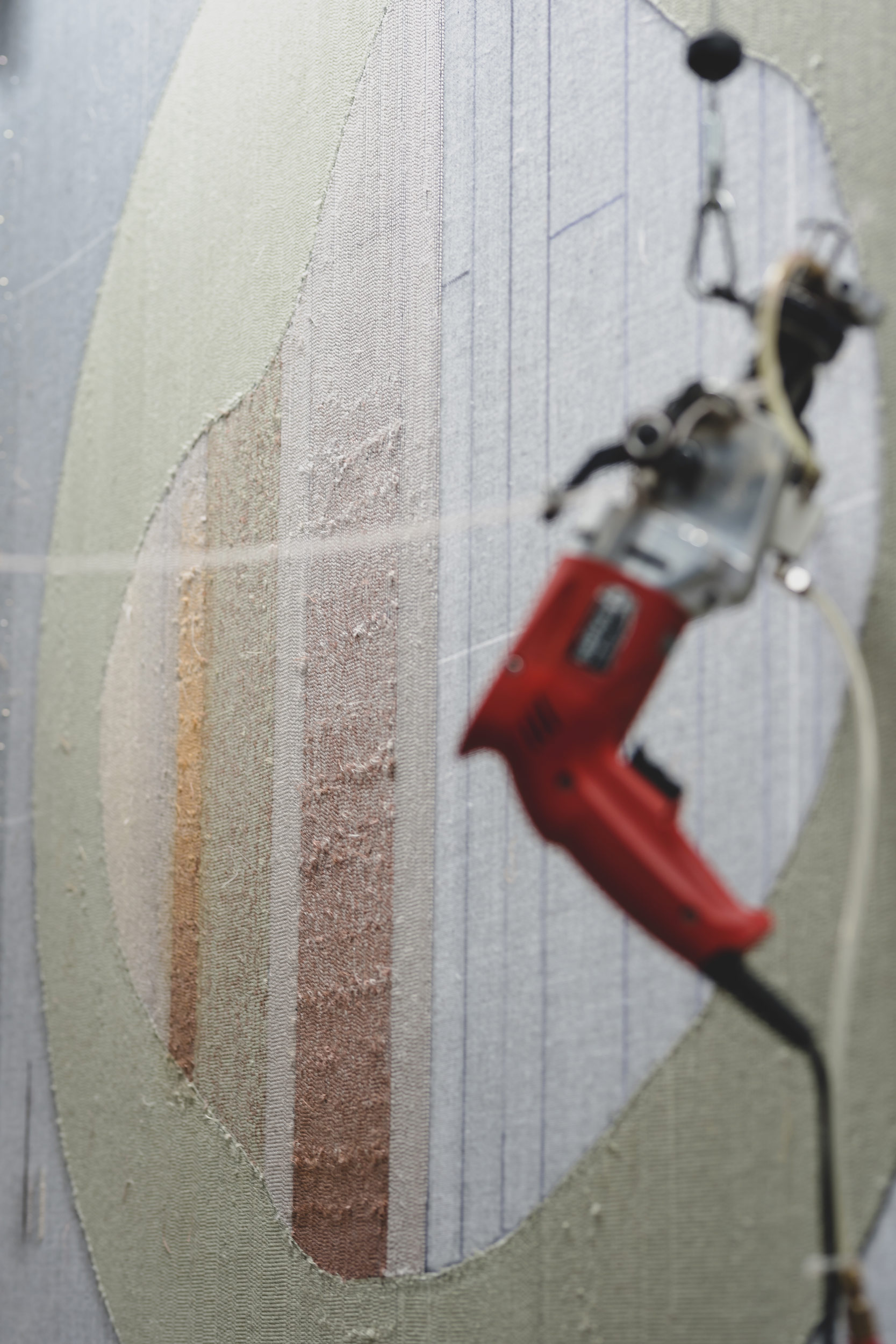
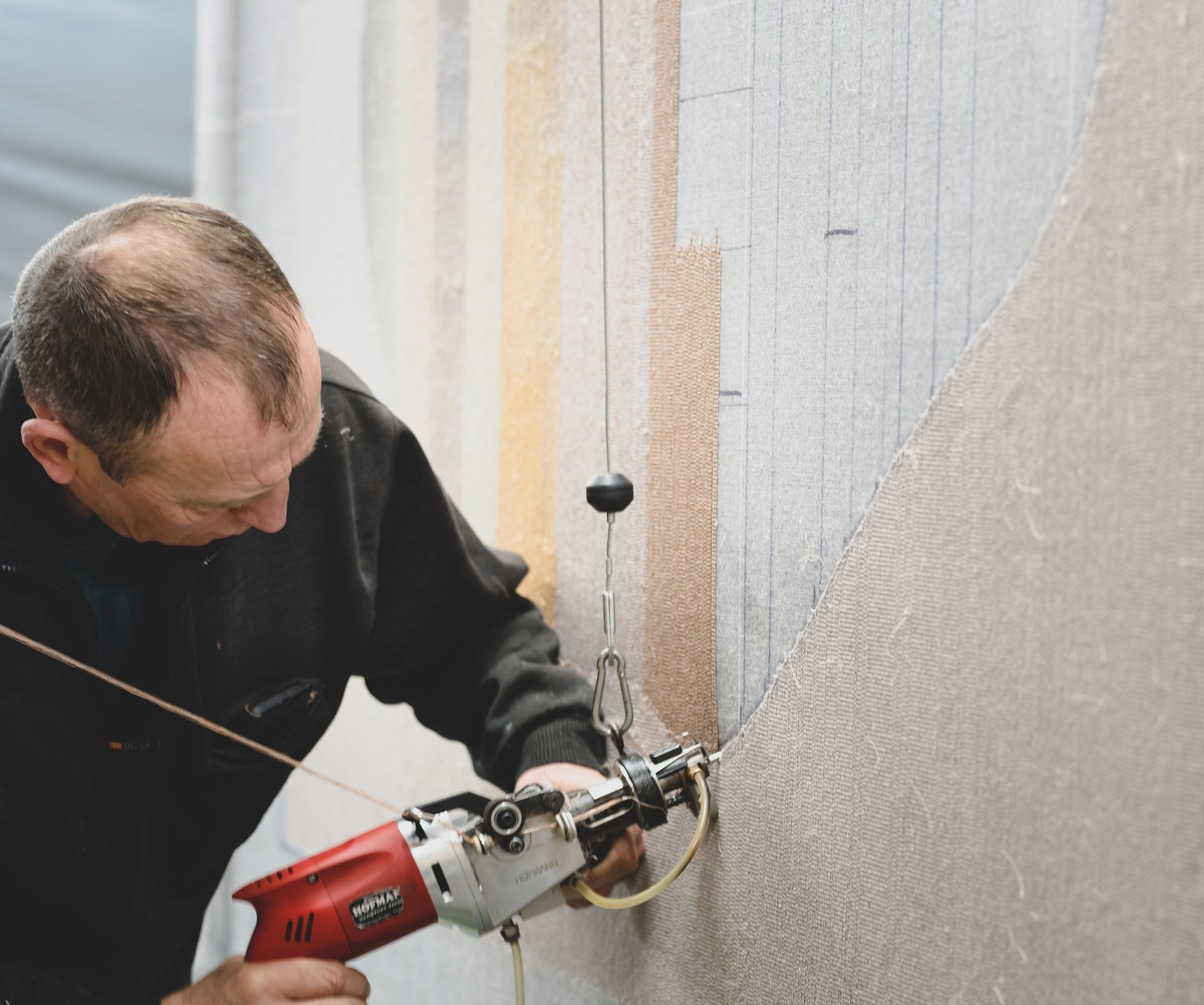
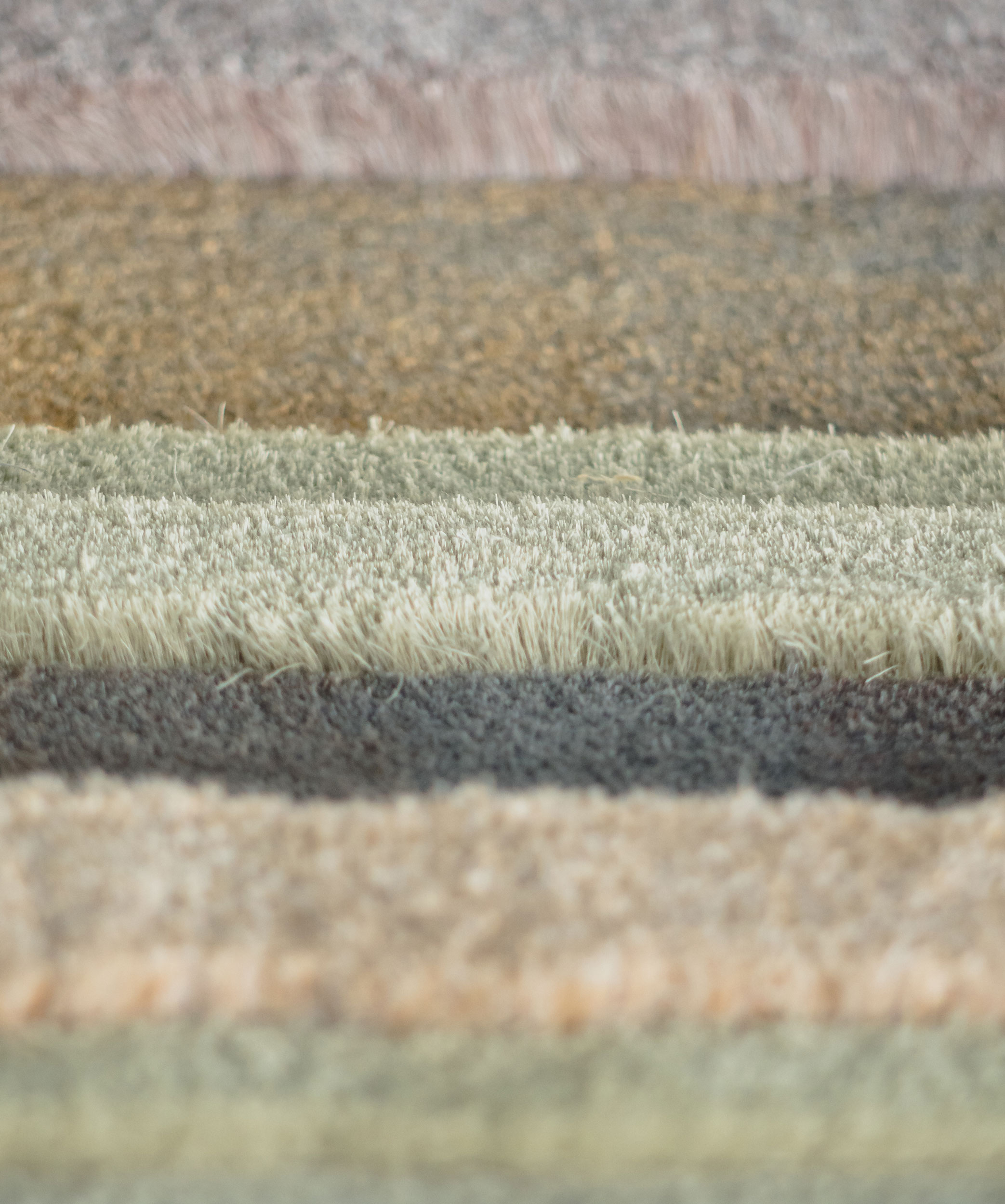
In order to produce in bigger quantities, the yarn dyeing process has to be industrialized. The next step is to create sustainable and reliable dyes that can be used in industrial textile dyeing and applied to diverse fabrics.

The project will include expanding the sources of waste materials and by-products, which have the potential to be used further for the coloring properties. It is important to determine, which waste sources have the most potential according to their chemical structure. As waste materials are not water-soluble or partly soluble, further research will include waste preparation, extraction processes, and the right solvents. Besides, the effects on different fabrics, mordants, and fixators have to be analyzed. Dyes could be used in industrial textile dyeing and applied to diverse fabrics. That requires close collaboration with professional labs and production companies. It is a long process as waste materials have to be tested and safe, reliable, and match with the standard manufacturing process. For E.g. Textile dyeing in the kitchen, the environment is completely different than coloring in the professional dyeing facility. Each waste stream requires different pigment preparation, such as drying, grinding, mixing with the right mordants, etc. Complementary goals would be analyzing the diversity of plant, animal-based and synthetic fabrics in terms of sustainability and how well the fabrics can absorb the dye. Further, analyzing mordants and fixators and finding the most suitable ones. In addition, exploring the possibilities of pairing the textile dyeing with other types of technologies and finishing.
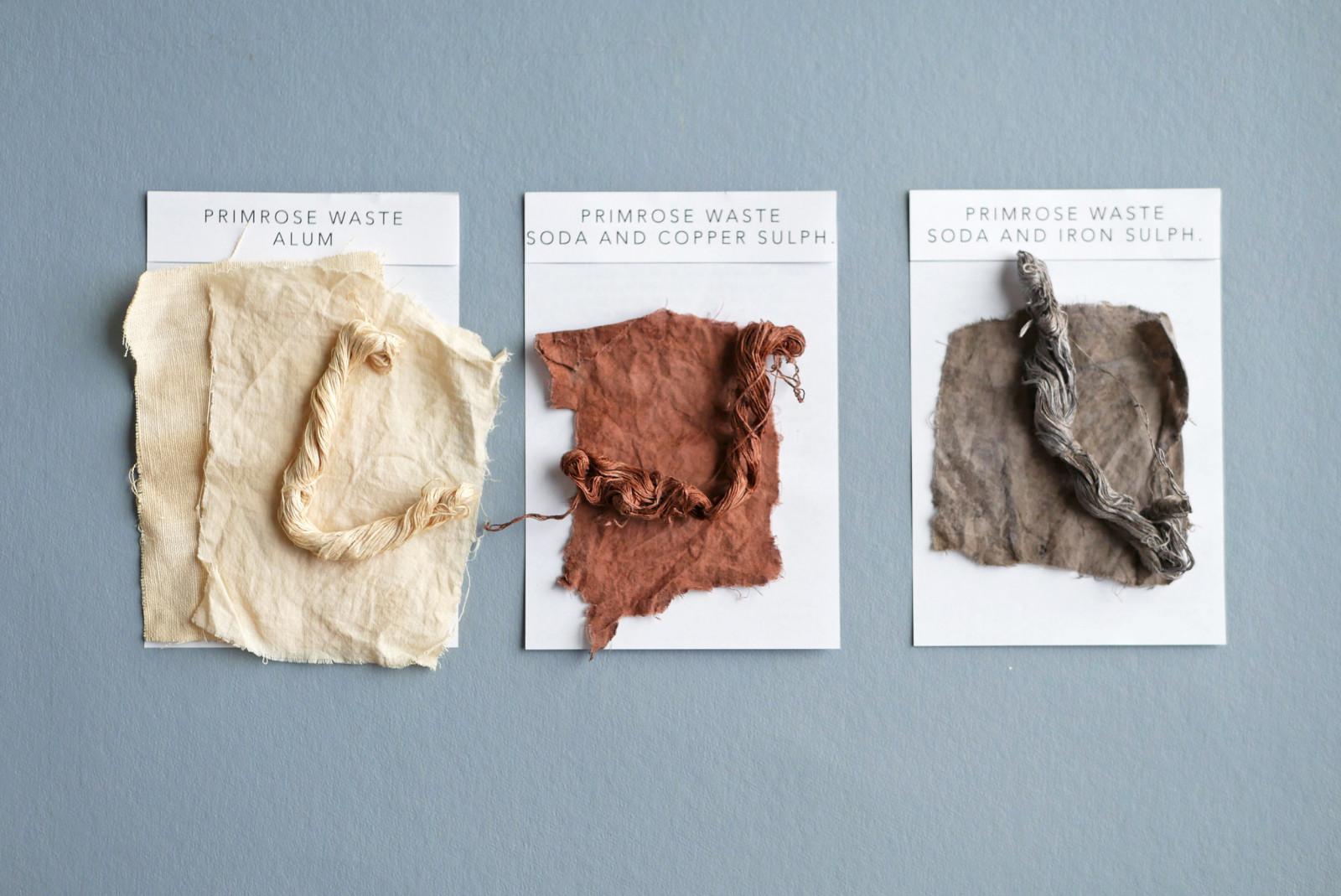
Amber is fossilized tree resin derived from extinct resin-bearing trees. It belongs to the organic semi-precious stones. The scientific community doesn't agree on whether amber should be considered a mineral or as a fossil.
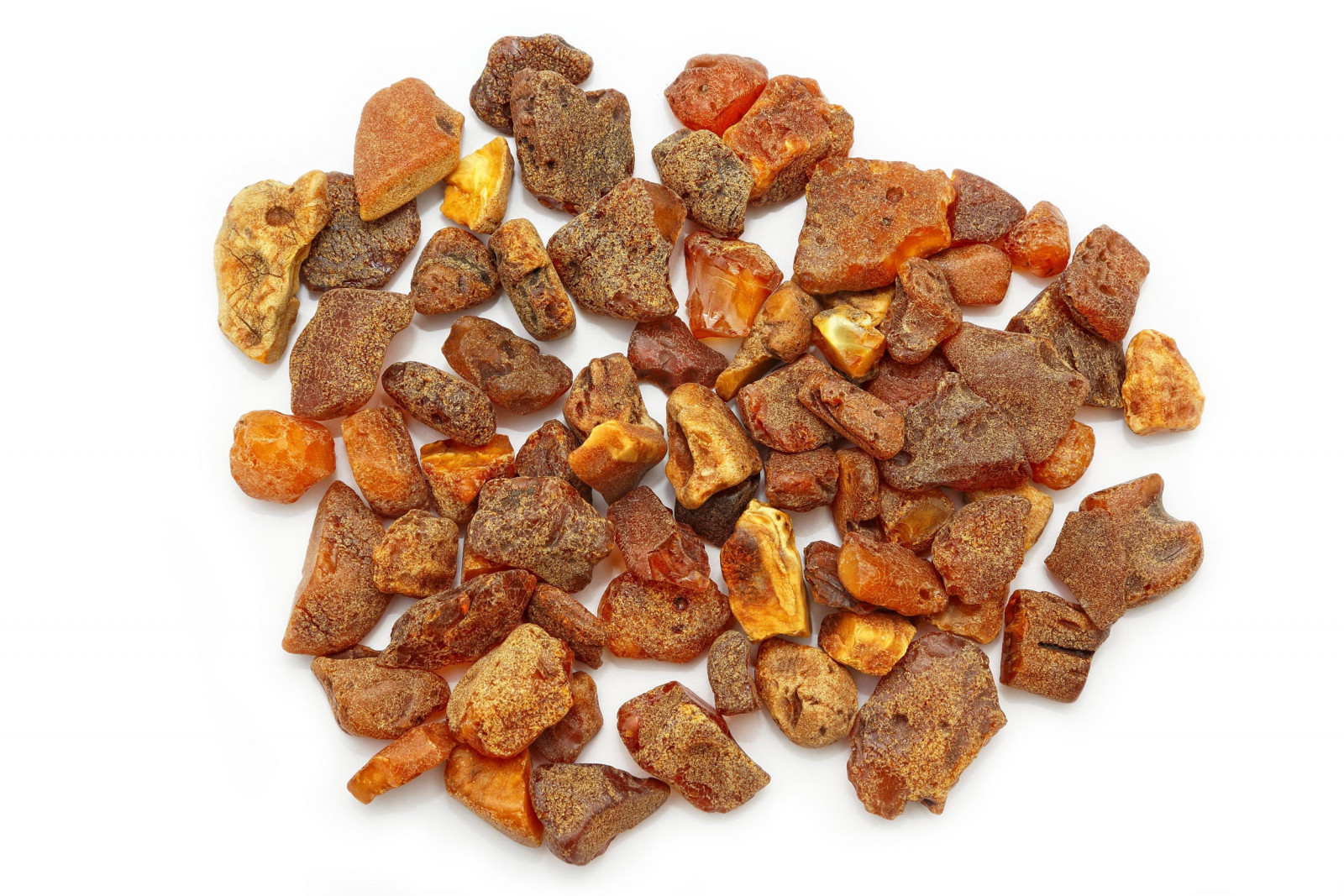

RAW AMBER / PROCESSED AMBER
Amber is organic, but it retains its chemical composition over time. Chemically, the resin that became amber originally contained liquids (volatiles) such as oils, acids, and alcohols, including terpenes. Over time, some terpenes evaporate while others condense and become cross-linked to each other, forming hard polymers. Fossilization of the resin takes millions of years. The exact structure and composition of amber depend on the makeup of the original tree resin, the age of the amber, the environment in which it was deposited, and the thermal conditions and geological forces to which it was exposed. Thus, even amber obtained from similar locations may vary in chemical structure and physical characteristics. Although there are contrasting views as to why resin is produced, it is a plant's protection mechanism. The resin may be produced to protect the tree from disease and injury inflicted by insects and fungi.
Although deposits of amber occur throughout the world, amber from the coast of the Baltic Sea is the best-known. The main deposit of amber is in Kaliningrad in the Yantarny mine. A lot of amber is also found along the Baltic coast. Because amber floats on saltwater, many pieces wash ashore on the beaches of Poland and Lithuania. Lesser-known amber deposits can be found in the Dominican Republic, Myanmar, Lebanon, and Indonesia.
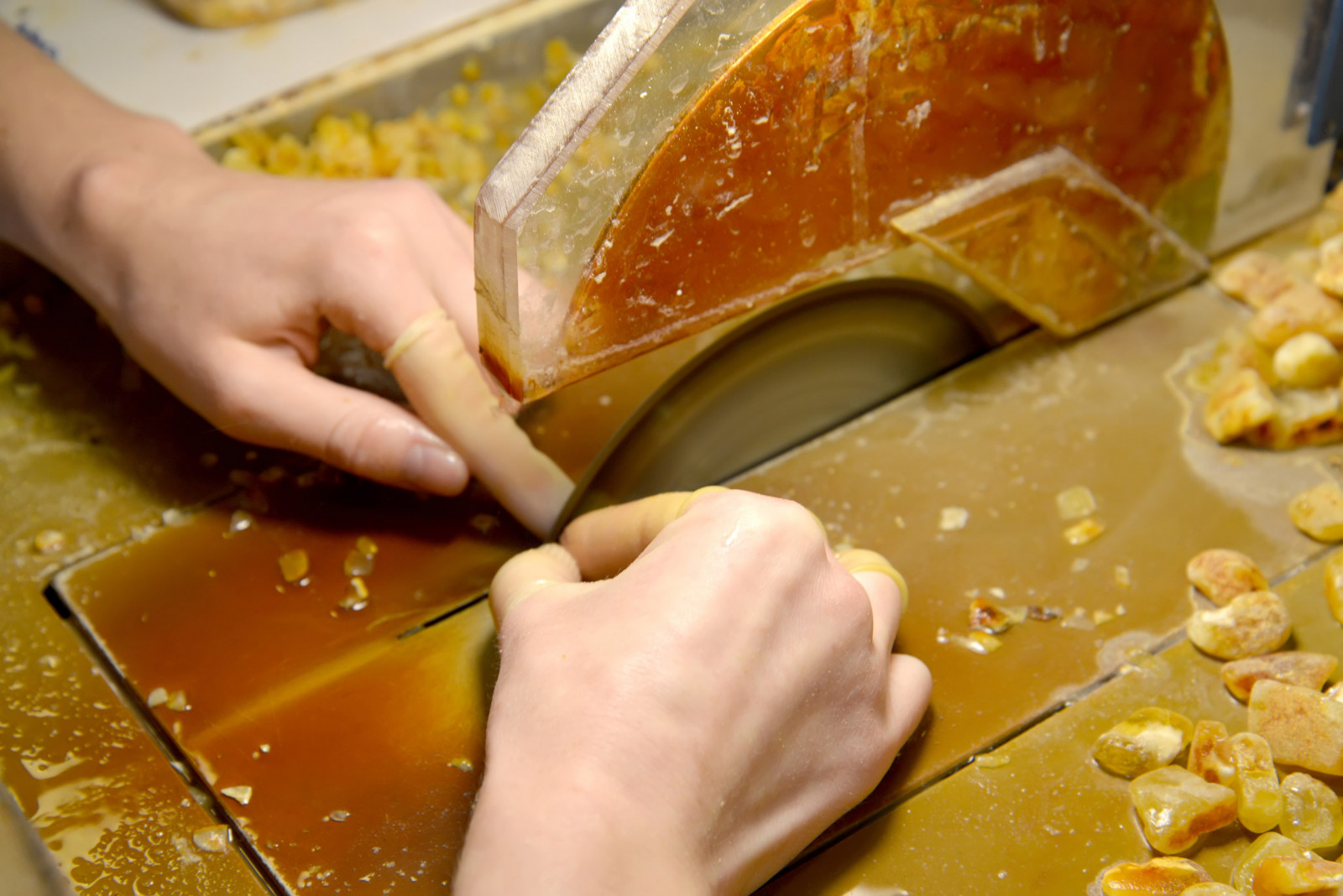
AMBER WORKSHOP
Worked amber is dating back to 11,000 B.C. Amber was widely believed to have magical healing powers. It was and is used to make varnish, incense, decorative objects, jewelry, and medicine. The production of jewelry and carving is usually done by hand with tools such as saw, fine-toothed files, drills, diamond disks, and sandpaper. After crafting amber there is left a huge amount of by-product and waste called amber dust. It can accumulate in tons and just a small amount of it is being sold. Mostly because it is contaminated with sandpaper and thus the value is lost. It is disposed into dumpsters or even sewage.
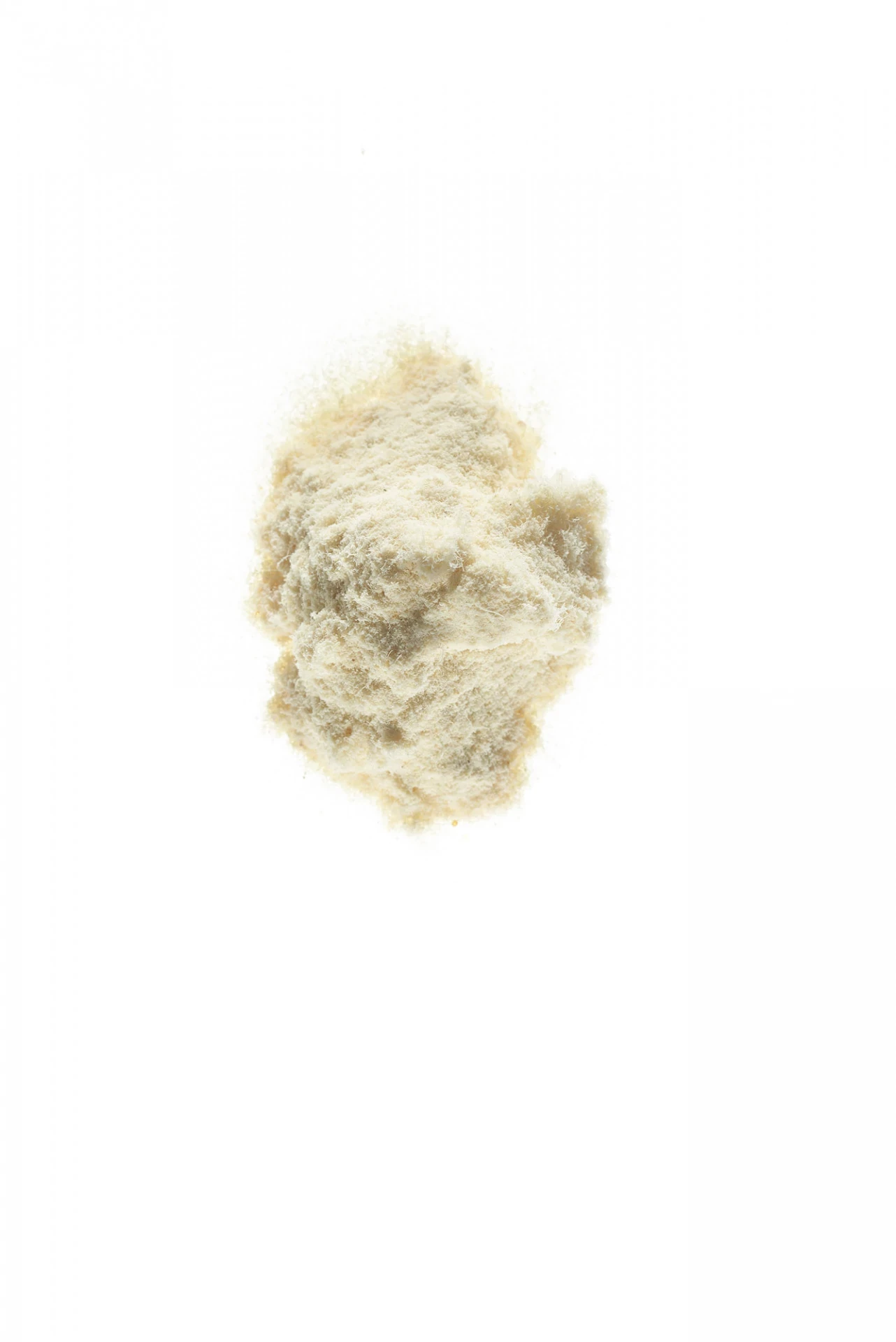
AMBER DUST REMAINING AFTER CRAFTING AMBER WITH DRILLS AND SANDPAPER
Today around 90% of the world’s amber comes from the Baltic region. China is amber’s biggest market. Within 5 years amber prices increased by 800-1000% because of the Chinese demand. In China, amber has had a particular cultural significance for centuries. Since ancient times, the Chinese have called amber “hu po” which means the courage or spirit of the tiger. Nowadays the main demand is amber jewelry for both men and women. Moreover, the amber powder is a very important traditional Chinese medicine. The good quality amber from the Baltic region is sold to China and what remains is mostly an imported lower-quality amber.


IN THE BALTIC REGION TOURIST SHOPS ARE OVERLOADED WITH KITSCH AMBER JEWELLERY AND DECORATIVE OBJECTS
Amber mining and processing have caused widespread environmental degradation. More than 100 million tons of waste has been discharged into the Baltic from the Yantarny mine in Kaliningrad over the past century. This insoluble waste causes high turbidity in the Baltic Sea. Besides, the high Chinese demand caused the establishment of the amber black market, which is primarily located in Ukraine, Russia, and Burma. The gangs in Ukraine and Russia use water pumps, predominantly made from old car and van parts, constructed specifically for amber mining. In popular regions, hundreds of gangs may mine in the same area; thousands of men pumping the soil full of water in the hope that amber will float to the top. Illegal amber mining is causing untold environmental damage. The mining technique itself completely decimates the soil, making it incapable of sustaining plant life. In the past three years, it’s estimated that over 2,000ha of Ukrainian land has been destroyed by illegal mining. The other illegal amber trade is called Amber Road, which is a cross-border Burmese amber trade between Myanmar and Tengchong, Yunnan province in China. The area where the amber mines are located within Myanmar is currently not accessible to foreign researchers. People there work in horrible working conditions, resulting in many deaths.

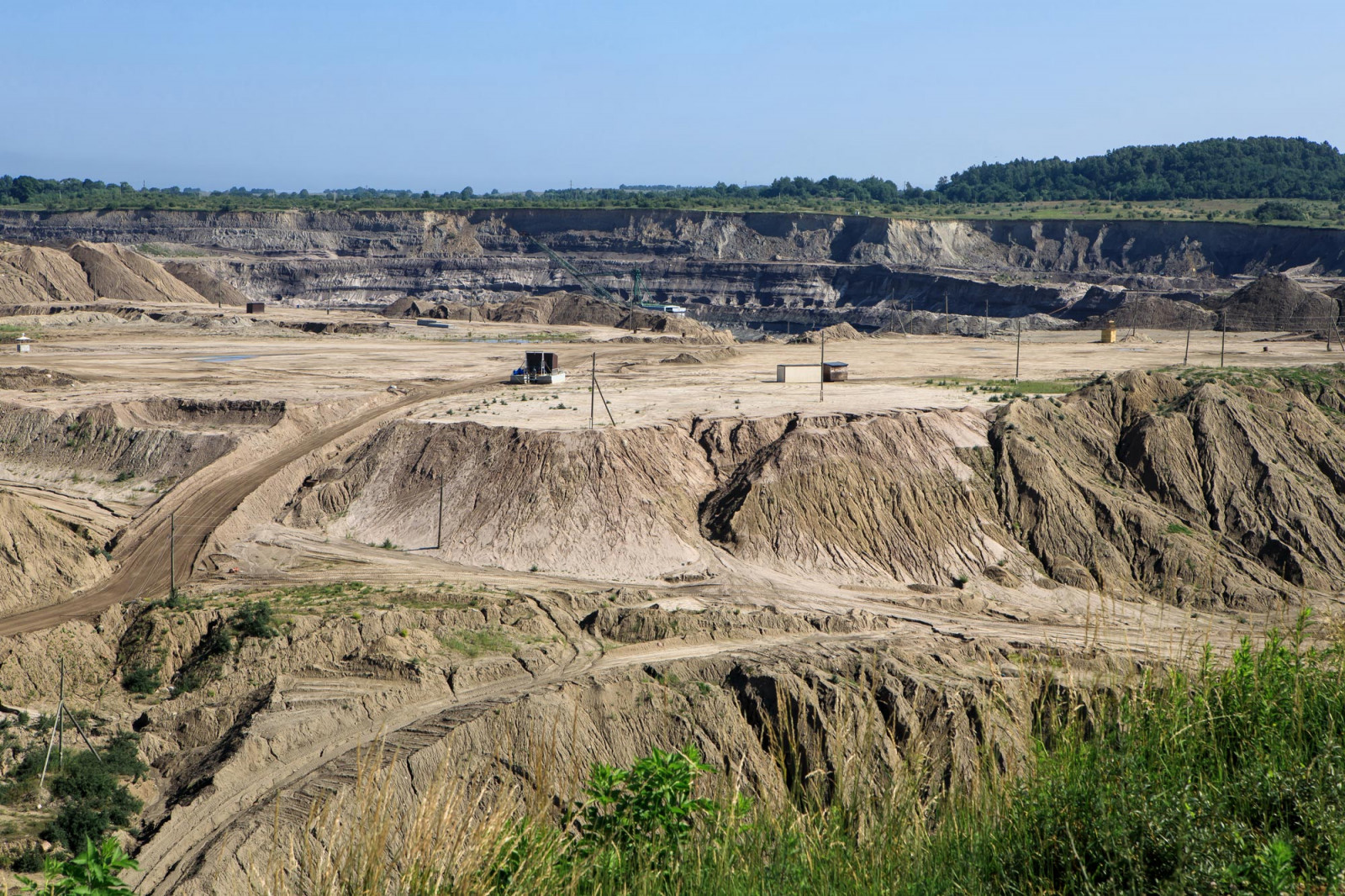
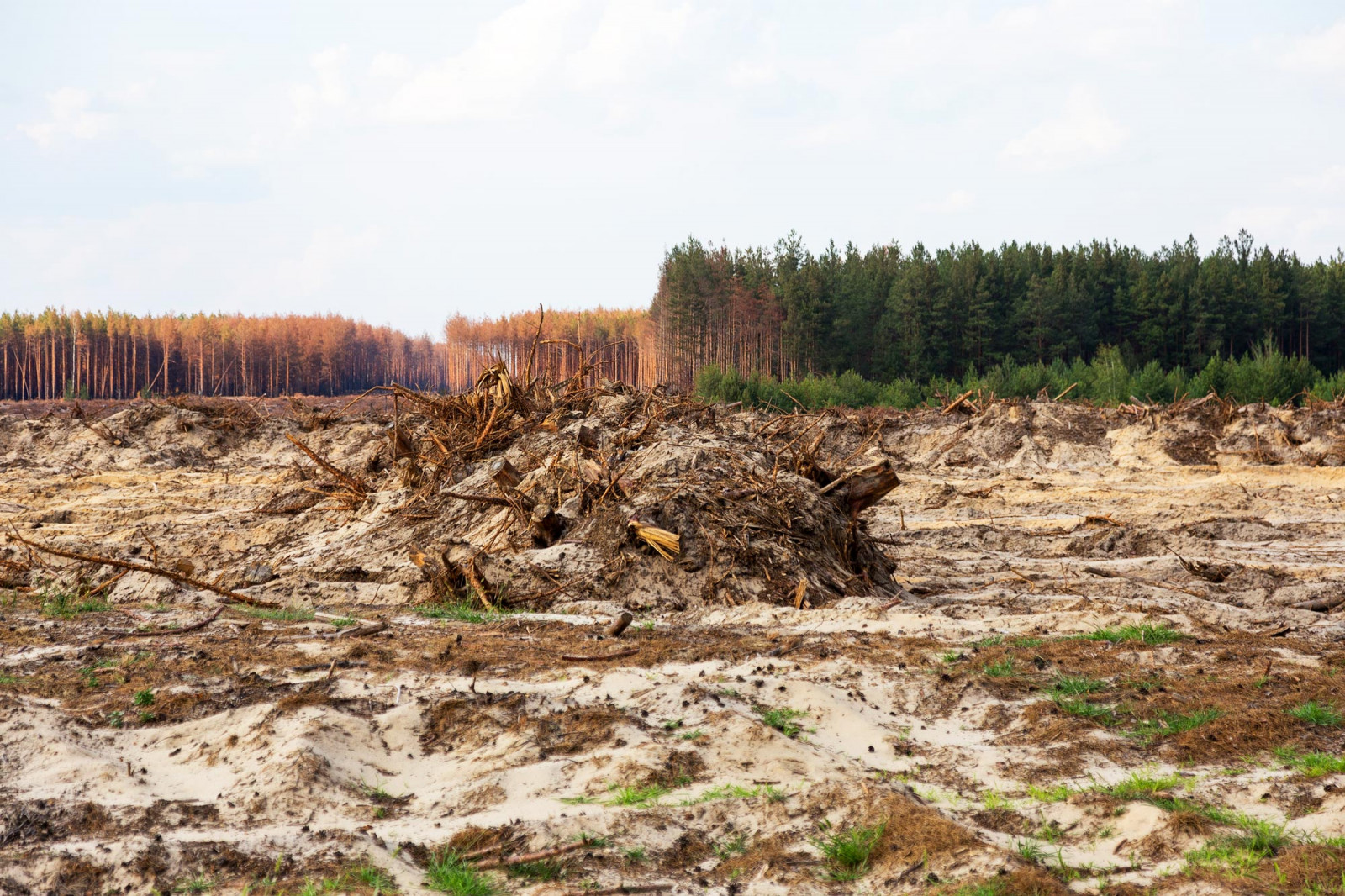
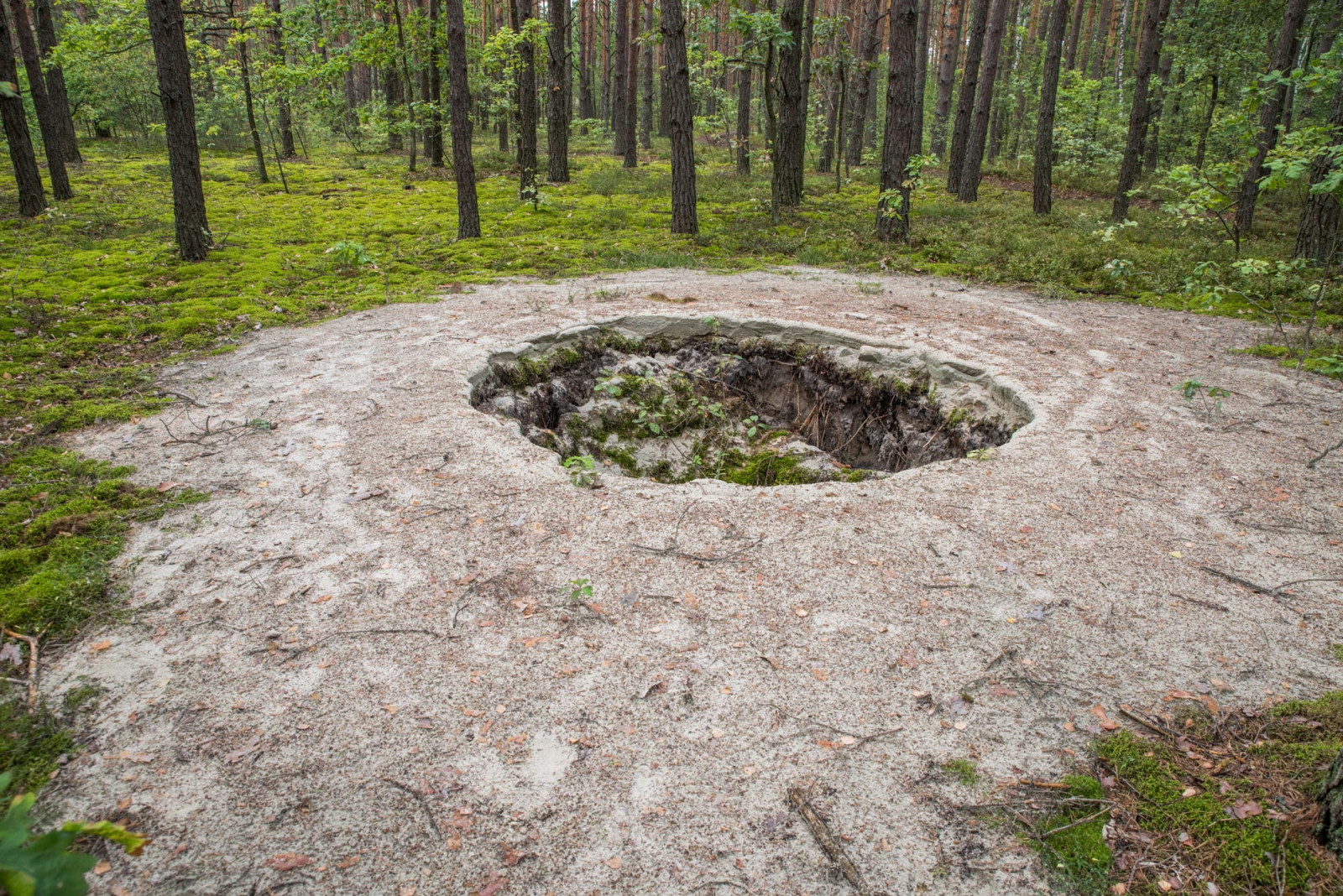
AMBER QUARRY IN KALININGRAD / DEFORESTATION IN UKRAINE / AMBER TRIAL PIT

AMBER INCLUSION
Insects, spiders and even their webs, frogs, bacteria and amoebae, marine microfossils, wood, flowers and fruit, hair, feathers, and other small organisms can be recovered from amber as it originates as soft, sticky tree resin. There was a spike in demand in western economies in the 1990s, after the release of the 1993 movie Jurassic Park. In the film, the DNA from a mosquito found in a piece of amber is used to clone dinosaurs. By comparing the species and ecosystems represented in amber, scientists are starting to tackle giant questions about extinction, conservation, and the evolutionary history of the species we see today. Though thousands of specimens do find their way into the hands of scientists, many more are put to industrial or decorative use. There’s a huge private-collector interest and then it’s not available for study for scientists or other researchers.
Amber is a multilayered material in terms of its historical, geological, and scientific value but also its composition and formation as a raw material. Distorted market and the black market is a serious problem because it comes with environmental damage.
Amber is a natural bio-resin, which is becoming soft at 150 C degrees and starting to melt at 250-300 C degrees. A full scope of material research is conducted by softening and melting the amber dust, creating methods, analyzing properties, deconstructing it by adding new biomaterials and binders, altering its properties, and changing colors. Amber is transformed into completely new material to create a range of usable more cost-effective interior products, such as panels, tiles, and furniture parts.

The great inspiration is The Amber Room, which is a reconstructed chamber decorated in amber panels located in the Catherine Palace near Saint Petersburg. Constructed in the 18th century in Prussia, the original Amber Room was dismantled and eventually disappeared during World War II. Before its loss, it was considered an “Eighth Wonder of the World”. A reconstruction was installed in the Catherine Palace between 1979 and 2003. Currently to decorate the interior with amber would come with an extremely high cost, but it could become possible with a transformation of the amber dust.
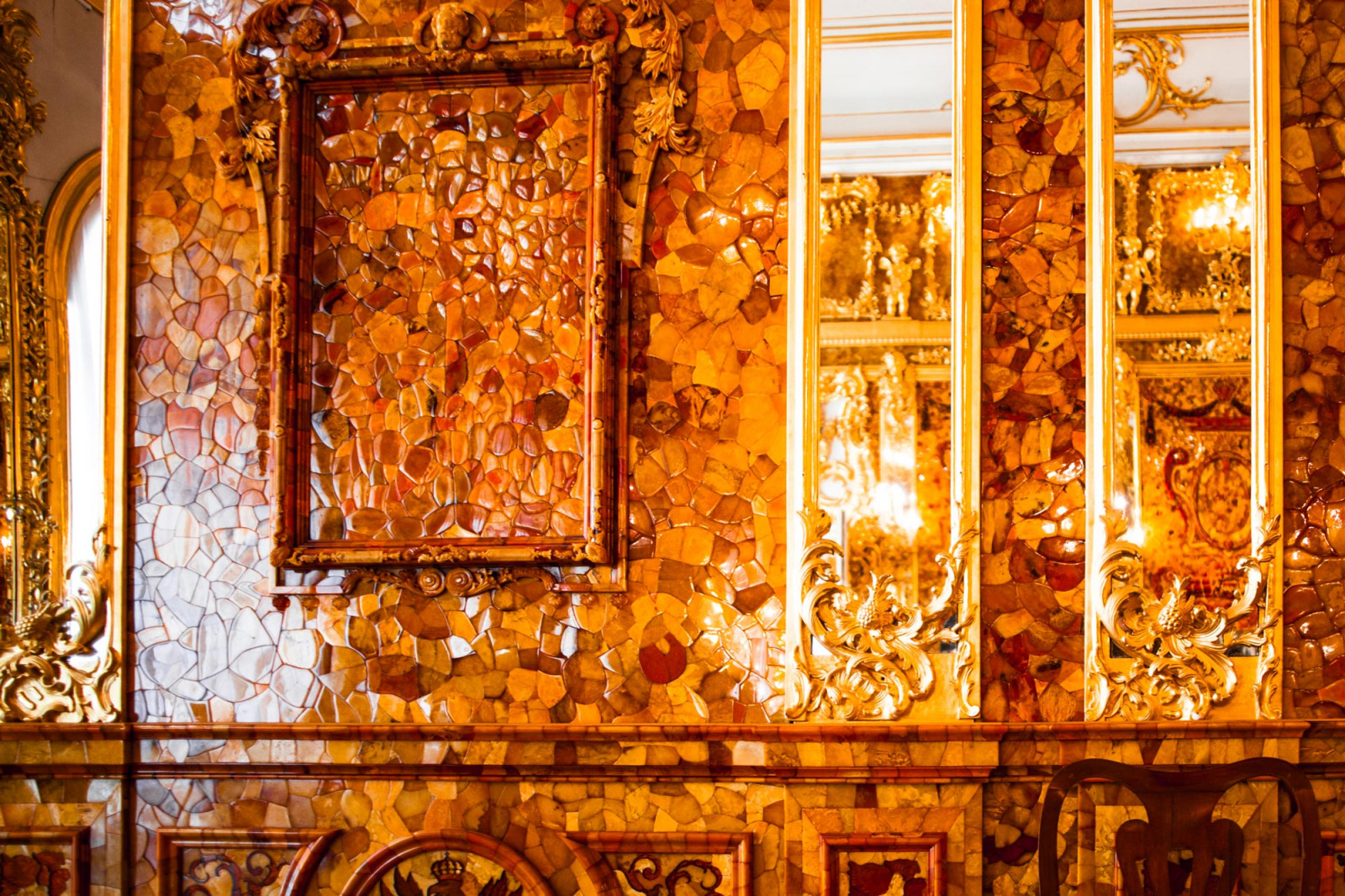
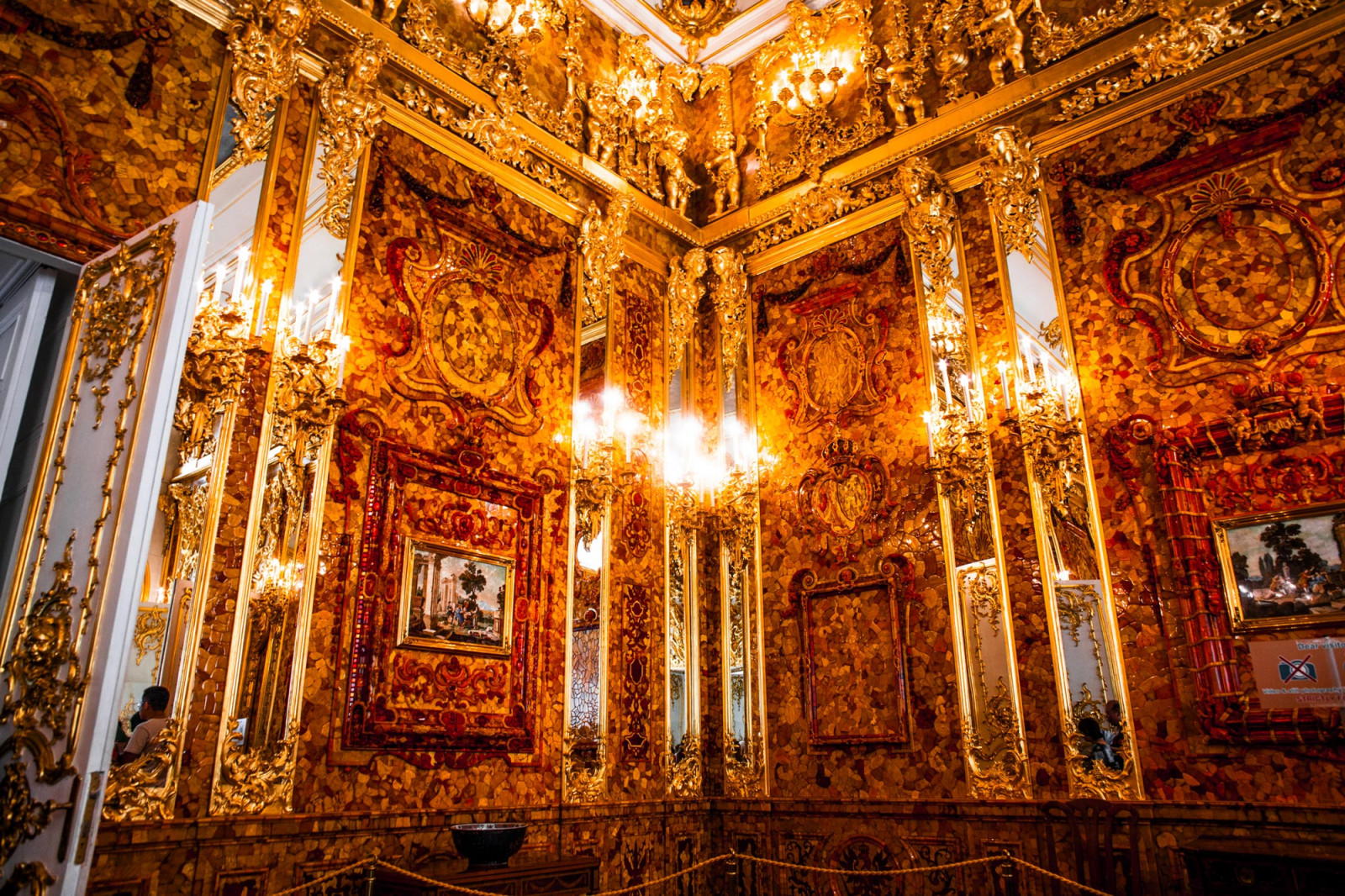
AMBER ROOM IN CATHERINE PALACE, ST. PETERSBURG, RUSSIA
Carbon waste is provided by a partner Aquaminerals (secondary raw materials originating in the water cycle). At certain drinking water production locations, the water needs to be subjected to a discolouration step. The raw water at these locations contains relatively high levels of humic and fulvic acids, which are not removed by the regular treatment steps. A very common method of removing these humic and fulvic acids involves the dosing of activated pulverised carbon. The humic and fulvic acids attach to the pulverised carbon, after which the carbon is removed from the water.
The carbon sludge is black and usually has a dry-matter content of 30% when disposed of. It is produced primarily in the provinces of North and South Holland.
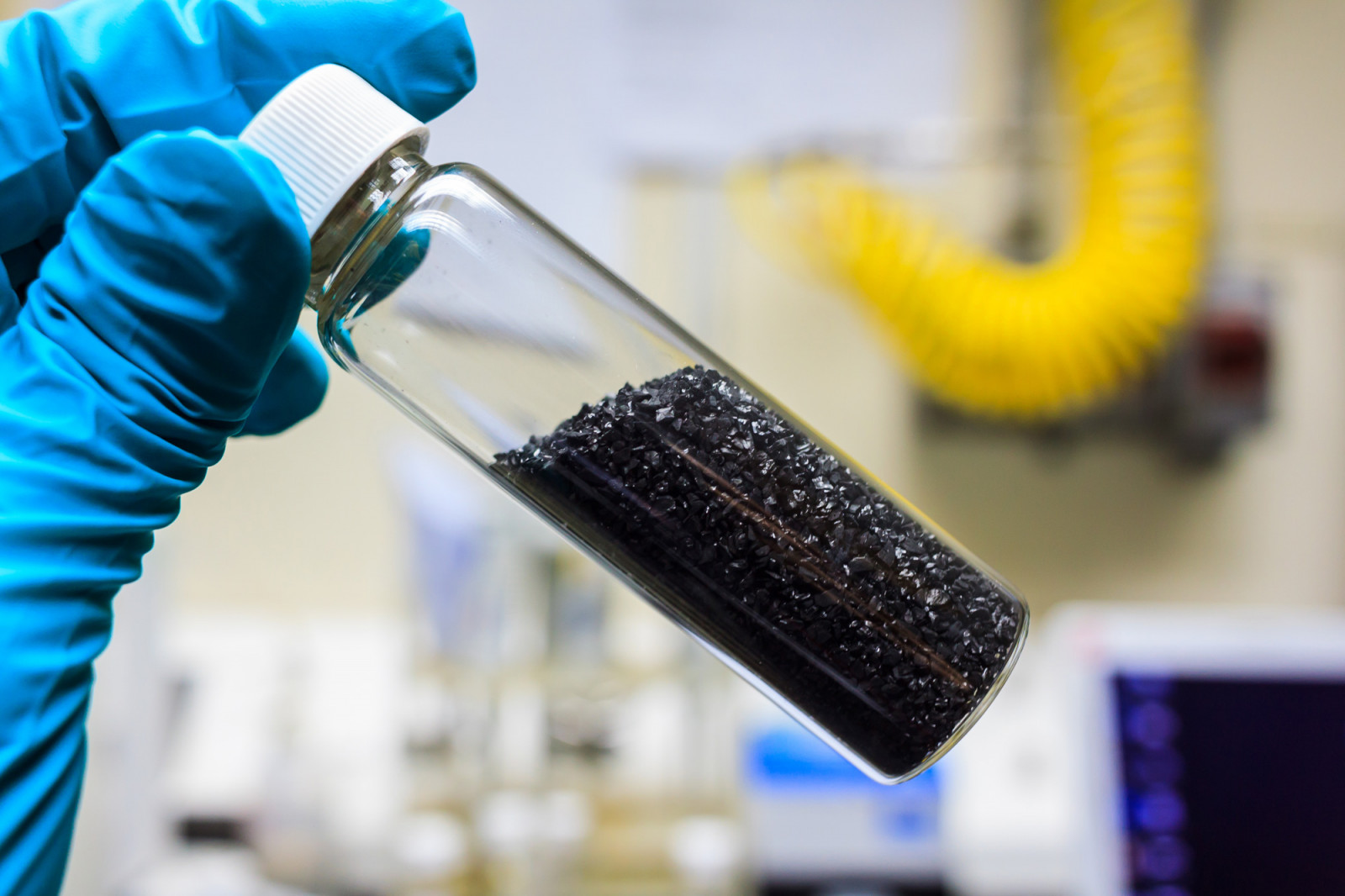
Activated carbon, also called activated charcoal, is a form of carbon processed to have small, low-volume pores that increase the surface area available for adsorption or chemical reactions. Activated carbon is used in methane and hydrogen storage, air purification, solvent recovery, decaffeination, gold purification, metal extraction, water purification, medicine, sewage treatment, air filters in respirators, filters in compressed air, teeth whitening, production of hydrogen chloride, and many other applications.
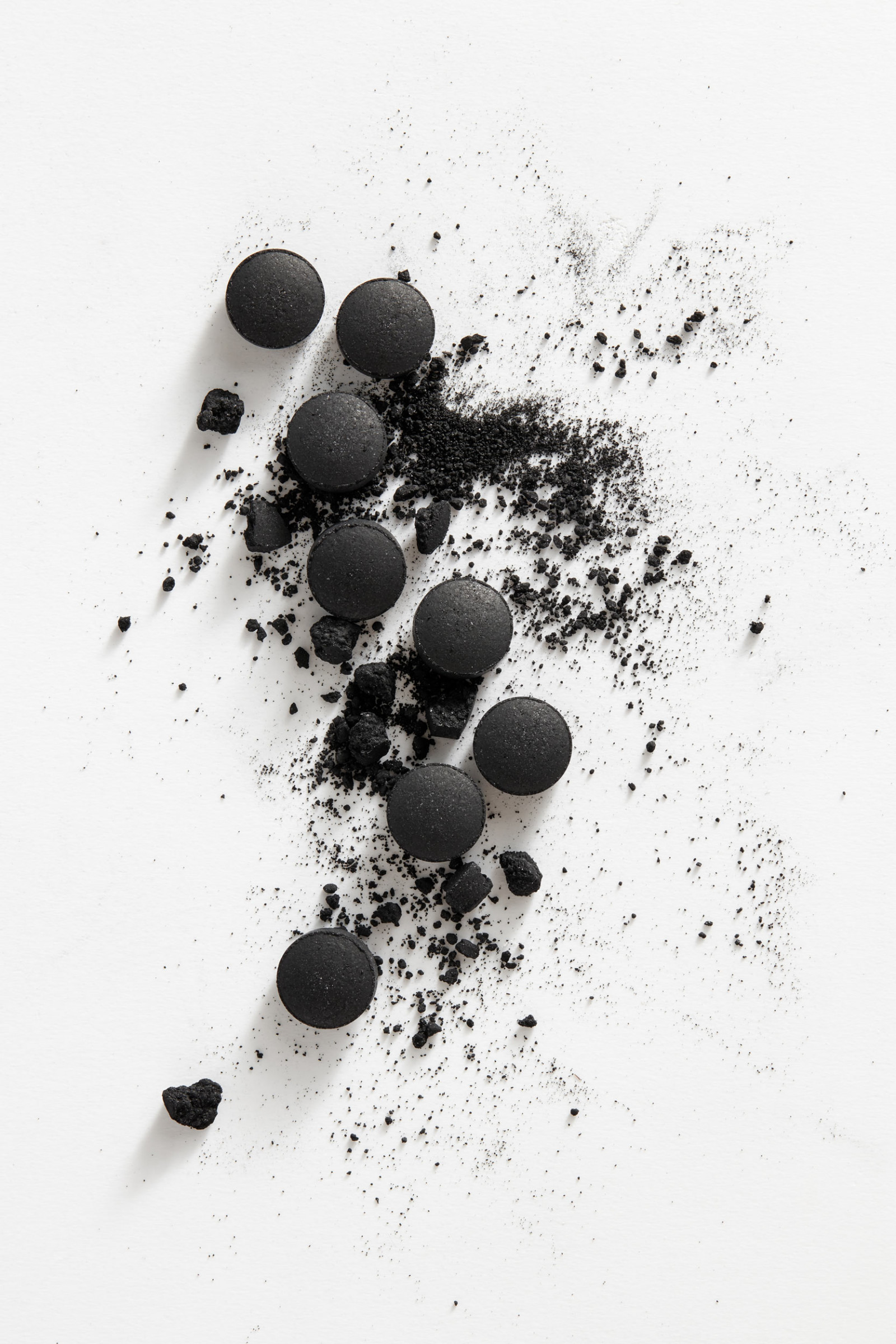
ACTIVATED CARBON USED AS MEDICATION TO TREAT POISONINGS
Activated charcoal powder is a manufactured substance. It’s made by slowly burning coconut shells, bamboo or wood. It becomes highly porous and nonpolar, which means it can adsorb (that is, bind to, as opposed to absorb) some toxins and odors. It adds to the removing carbon storage by burning trees, but in other hand from quick-growing trees or branches, it’s not such an environmental burden.
There are tons of used activated carbon remaining after discolouring water. In this case, the remaining carbon is not polluted by toxic materials, so it is possible to re-use it safely for other purposes.

ACTIVATED CARBON USED IN THE WATER FILTRATION
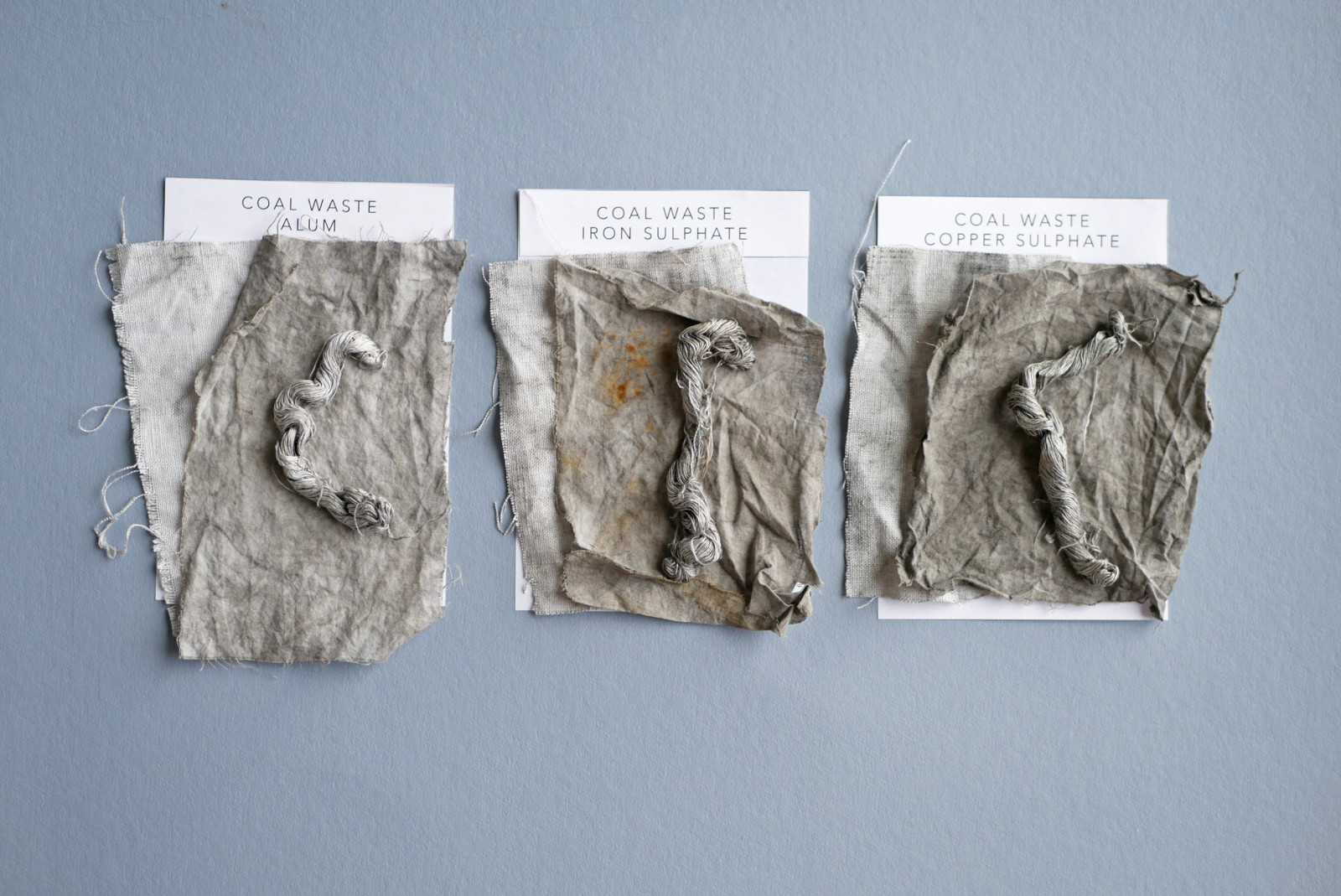
Textile colouring using charcoal is an old technique in Asian countries. Charcoal is not a dye, but a pigment, thus it is more complicated to maintain the colour in the textile. In 2004 there was research released by Joo, jo & Lee, Jeong-SookNatural in Fashion & Textile Research Journal: Dyeing of Cotton Fabrics Using Charcoal. Quote from the paper: In order to activate the characteristics of charcoal in fiber systems, this was carried out to experiment with the particle size from two micrometers to ten micrometers of charcoal powders on cotton fabrics. The results obtained were as follows; The fabrics were dyed with gray colors by charcoal. The K/S values, that were indicative of the dye affinity, became higher as the increase of dyeing temperature, dyeing time, and dyeing concentration. Also it was confirmed the morphology of the fiber surfaces adsorbed with the particle size from two micrometers to four micrometers of charcoal powder by scanning electronmicronscope. The cotton fabrics dyed by charcoals generally recorded 3-4 degree of wash fastness, 4-5 degree of dry-cleaning fastness, 4-5 degree acidic and alkaline perspirations and water fastness. In connection with the functional properties, cotton fabrics dyed with charcoal appeared that antibacterial, deodorization, far infrared emissivity were improved. Especially the deodorization was improved greatly by using charcoal.

As external research suggests, besides having colouring properties, activated charcoal can improve the quality of textiles. Agne Kucerenkaite coloured a batch of linen yarns that were implemented into tufted carpet samples. More research is needed in the professional lab to achieve the desired size of the carbon particles and better understanding how this waste could be introduced into the textiles and polymers.


News
2021 JUNE 17 - JULY 23
Exhibition Personal Scale at Vartai gallery
Ignorance is Bliss rug collection 'Lutetia' and 'Juno' are displayed at contemporary design exhibition Personal Scale in Vartai gallery, Vilnius, Lithuania.
The second exhibition of the cycle, Personal Scale, features design projects by up to twenty individual and collaborative authors from different countries. A wide range of design perspectives and practices demonstrates the possibility of discussing sustainability differently, without objective truths or rules. The exhibition blurs the line between whether an object is handmade or industrially produced, regardless of whether it is made of new or recycled material, whether it is natural or synthetic, unique or intentionally mass-produced. Sustainability unfolds here not only in the material or in the way it is made, but also in the possession of a personal relationship that allows us to get to know the objects around us better and to question the established relationship with them.
Participants: Agnė Kučerenkaitė (LT), Charlotte Jonckheer (BE), Corradino Garofalo (IT), Destroyers and Builders (BE), Joan Vellvé Rafecas (SP), Kiki & Joost (NL), Kotryna Butautytė (LT), Kodai Iwamoto (JP), Lennart Lauren (NL), Martynas Kazimierėnas (LT), Messgewand (NL/FR), Olivier van Herpt & Sander Wassink (NL), Oskar Zięta (PL), Pepe Heykoop (NL), Pierre Castignola (FR), Plasticiet (NL), Sarmite Polakova (LV), Sho Ota (JP).
Curators: Marija Puipaitė and Vytautas Gečas
2020 OCTOBER 17
Online exhibition How&Wow Linen for Dutch Design Week 2020
In October of each year, Dutch Design Week (DDW) takes place in Eindhoven. The biggest design event in Northern Europe presents work and ideas of more than 2600 designers to more than 350,000 visitors from home and abroad. In more than 110 locations across the city, DDW organizes and facilitates exhibitions, lectures, prize ceremonies, networking events, debates, and festivities.
Crafts Council Nederland (founded in 2012) contributes to the development of crafts and the creative crafts culture. Crafts Council Nederland presents HOW&WOW Linen during Dutch Design Week 2020. The exhibition showcases the process from flax to linen alongside the unlimited applications and present-day potential of this age-old fibre. The video series HOW starts with the seed that transforms into delicate blue flowers blooming on a bleak polder and follows the process in which terms such as rippling, dew retting, scutching, and hackling tow at once take on meaning. WOW presents the future materialised by fifteen makers; in this aesthetic exhibition, they interpret the versatility and relevance of the process and the product. The process of Ignorance is Bliss Rug Collection is showcased at this exhibition.
Participants: Pauline Esparon, Maaike Gottschal, Eva Klee, Agne Kucerenkaite, Christien Meindertsma, Anita Michaluszko, Ruben van der Scheer, Saar Scheerlings, Studio Plastique, Lee Sun, the Linen Project Stewards, Babs van den Thillart, Weefnetwerk, Mark de Weijer and Anna Wetzel. With cooperation of Karlijn Bokhorst and Heleen Lorijn.
2020 SEPTEMBER 01
Featured in A Labour of Love book by Lidewij Edelkoort & Philip Fimmano
A Labour of Love is a 448-page publication by design curators and authors Lidewij Edelkoort and Philip Fimmano. The book’s title refers to craftsmanship as an alternative form of pride and fulfilment. It comes at a unique time in history when principles are evolving and a more mindful, altruistic approach is needed in design and manufacturing.
Divided into 12 themes that reflect current materials and techniques, this bold book introduces the new makers in contemporary design, previewing a future of responsible production, circular thinking, ethical practice and organic aesthetics. It offers insight into how designers are giving shape to materials and process, from reviving the loom and recycling waste to social inclusion and growing matter. Their conscious philosophies will change our world with careful and considered choices that can ultimately reconnect us to nature and guide us towards a better tomorrow.
As Edelkoort observes “People know they need to slow down the pace of overconsumption and overproduction; otherwise our planet will be lost. The creative world gains insight and invents systems where values shift and design plays an activist role, developing ideas about sharing between designer and the worker, designer and the underprivileged, designer and the amateur, designer and the designer… This new era gives hope for other ways of perceiving what is considered success, renown and profit. Here, capital is strictly human.”
Gallery
Ignorance is Bliss linen rugs
view product
